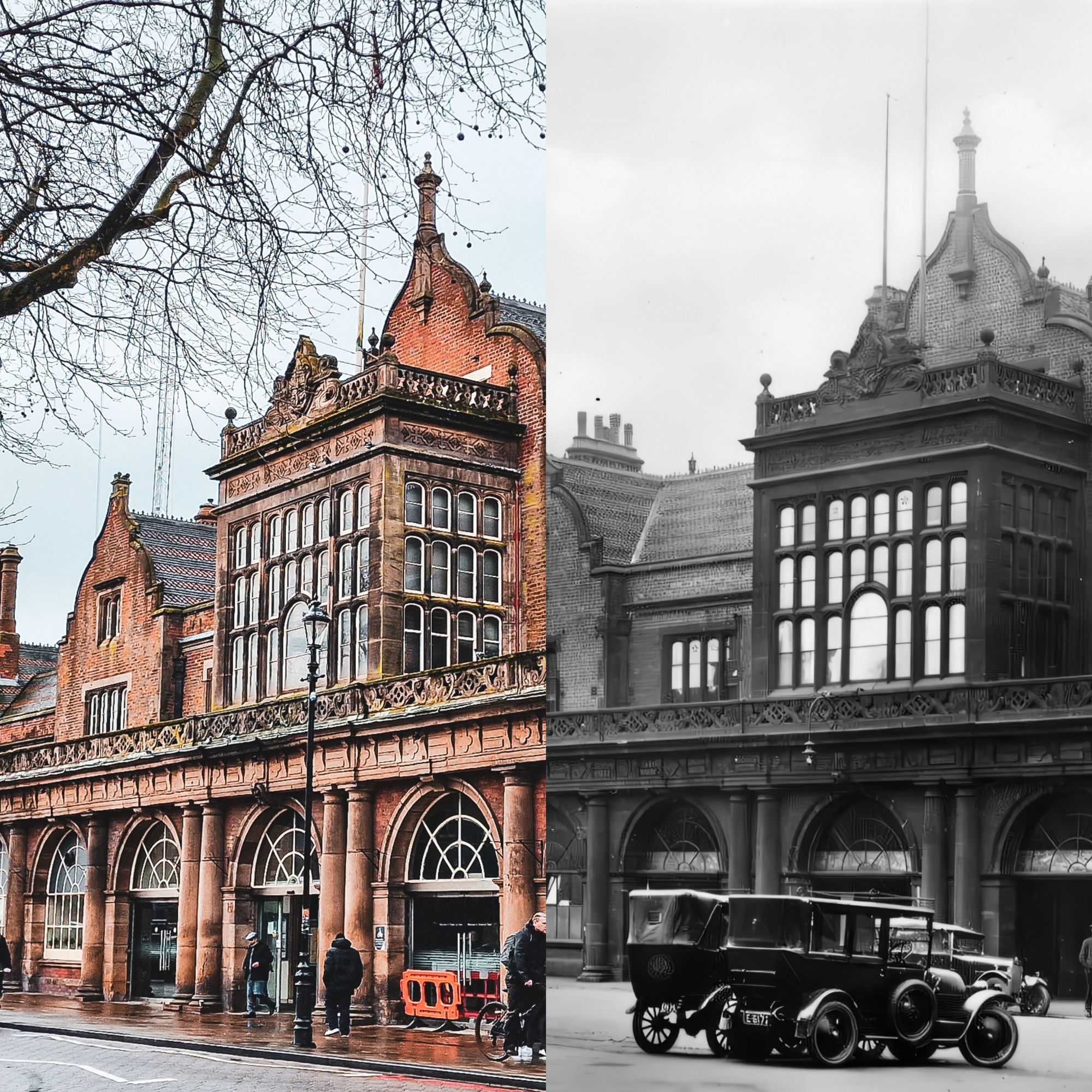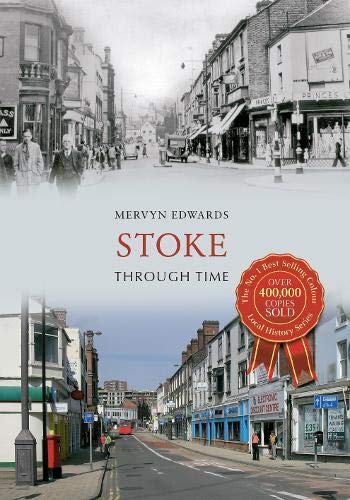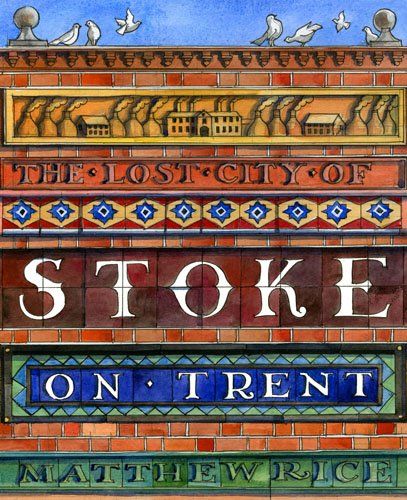Stoke-upon-Trent, often referred to as simply Stoke has a long and rich history. Reaching as far back at least to the Romans and their road that ran from Deva (Chester) to Derventio (Derby) via Stoke.
However, the modern town owes its growth and prosperity to the Industrial Revolution, which brought about a massive expansion of the pottery industry in the 18th and 19th centuries.
In 1910, the six towns of Stoke-upon-Trent were merged into a single municipal borough, with Stoke becoming the administrative centre. The city continued to thrive throughout the 19th and 20th centuries, with the pottery industry remaining a significant contributor to the local economy.
However, for some unknown reason, the city council decided that Hanley would be the city centre, causing Stoke to be mostly forgotten about in recent years.
I took a walk around Stoke to see how it had changed over the last 100 years or so as part of my Then & Now around Staffordshire series.
I have repaired, edited and upscaled the old photographs so that we can see the maximum amount of detail in them. So please, if you do share them, could you give me credit for them? Because it takes me ages! Thank you.


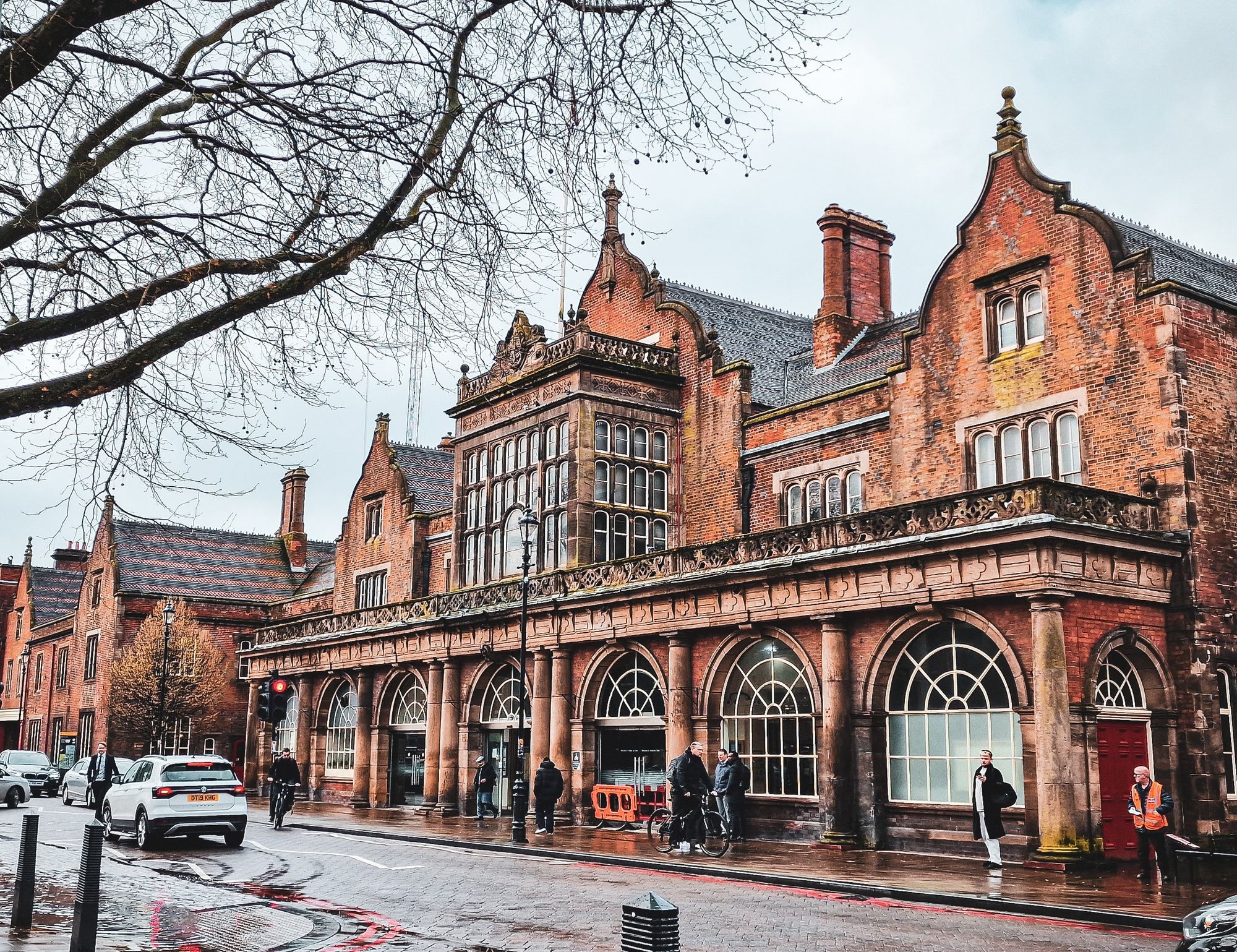
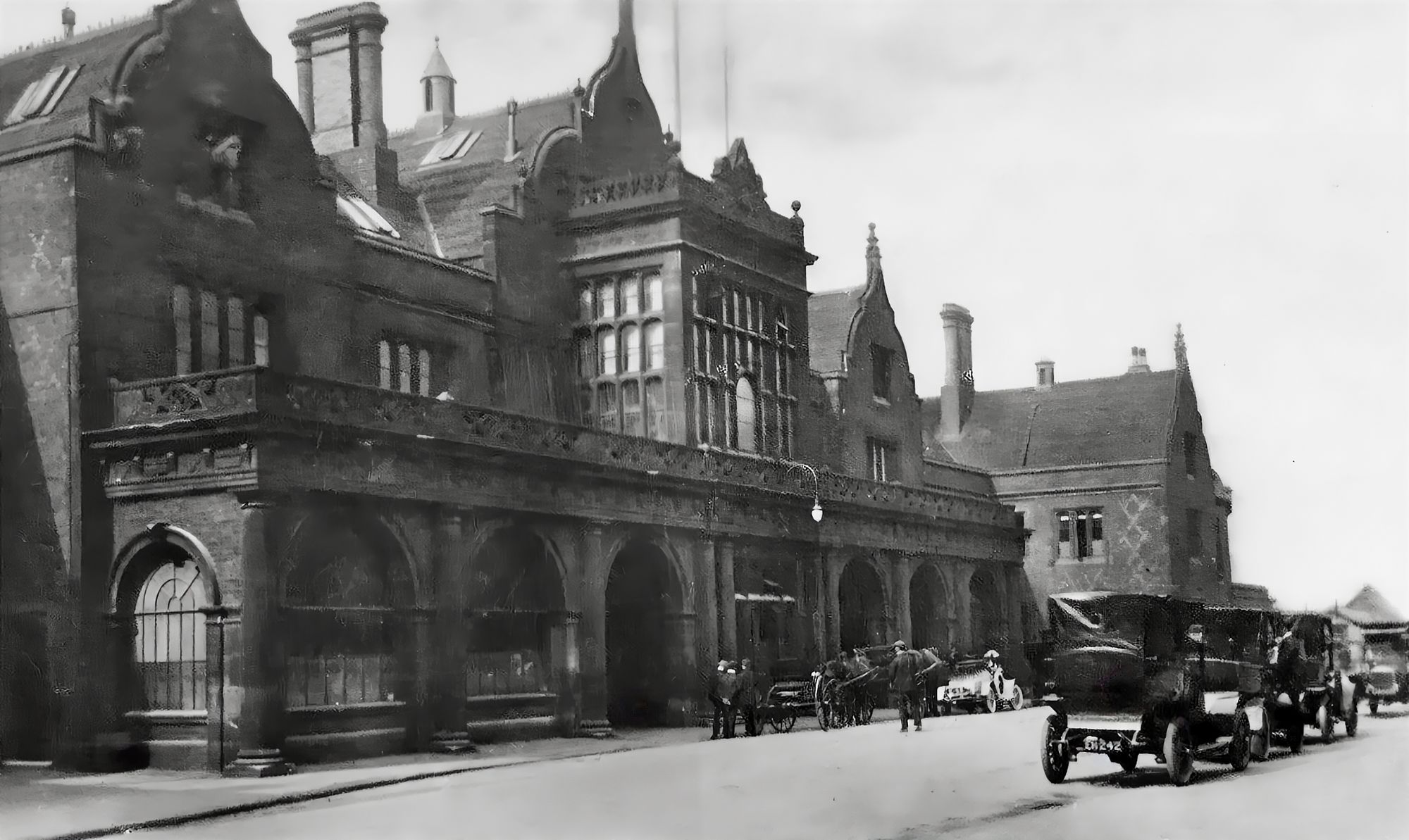
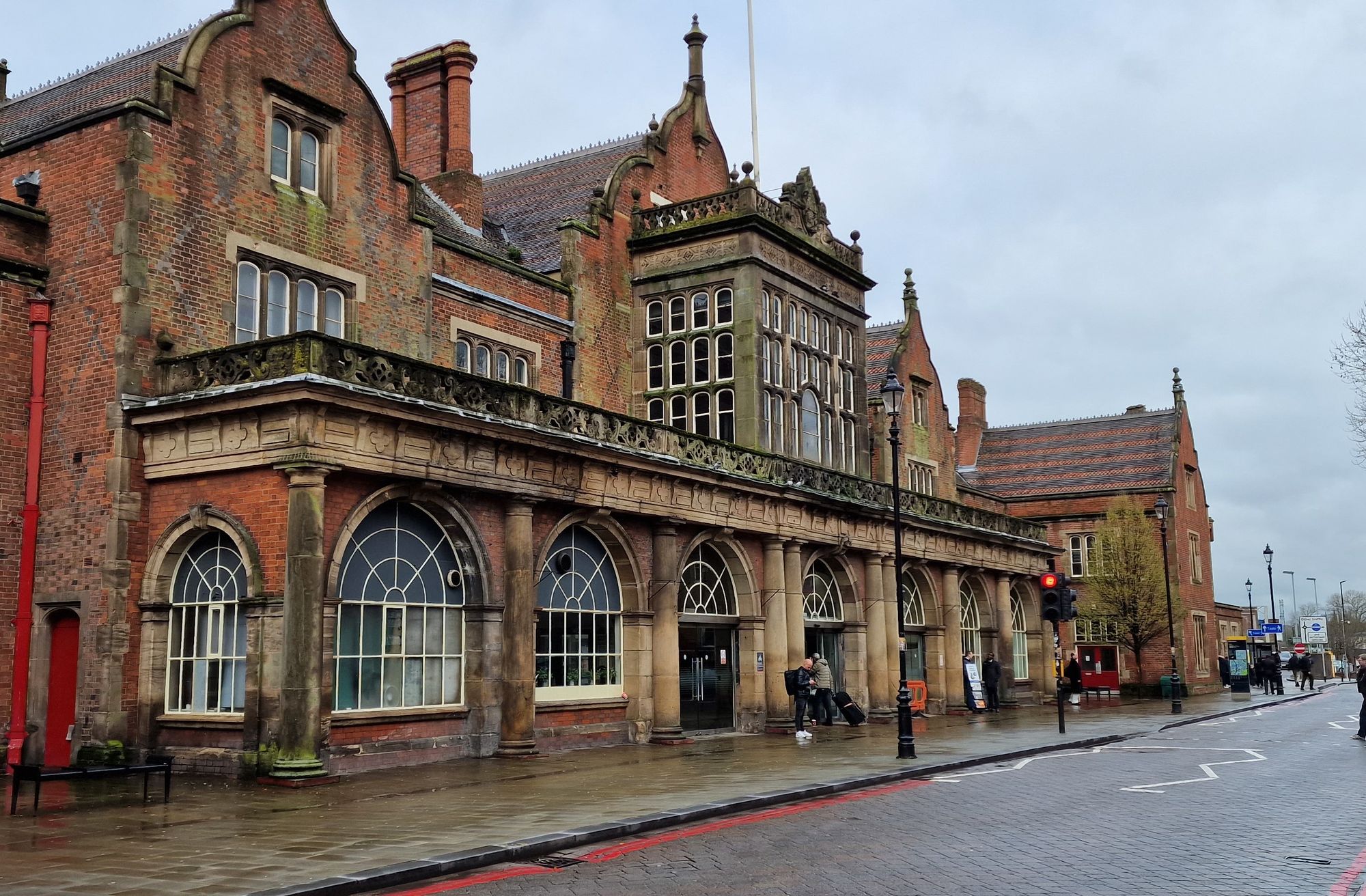
Stoke Station was first opened in 1848 by the North Staffordshire Railway (NSR), which was a major player in the railway industry at the time. The original station was a simple two-platform affair, but it quickly became clear that more space was needed to cope with the growing number of passengers and trains using the station.
This truly magnificent building is an incredibly beautiful gateway into our city and is currently undergoing renovations, including plans to repair and possibly even replace the glass roof.

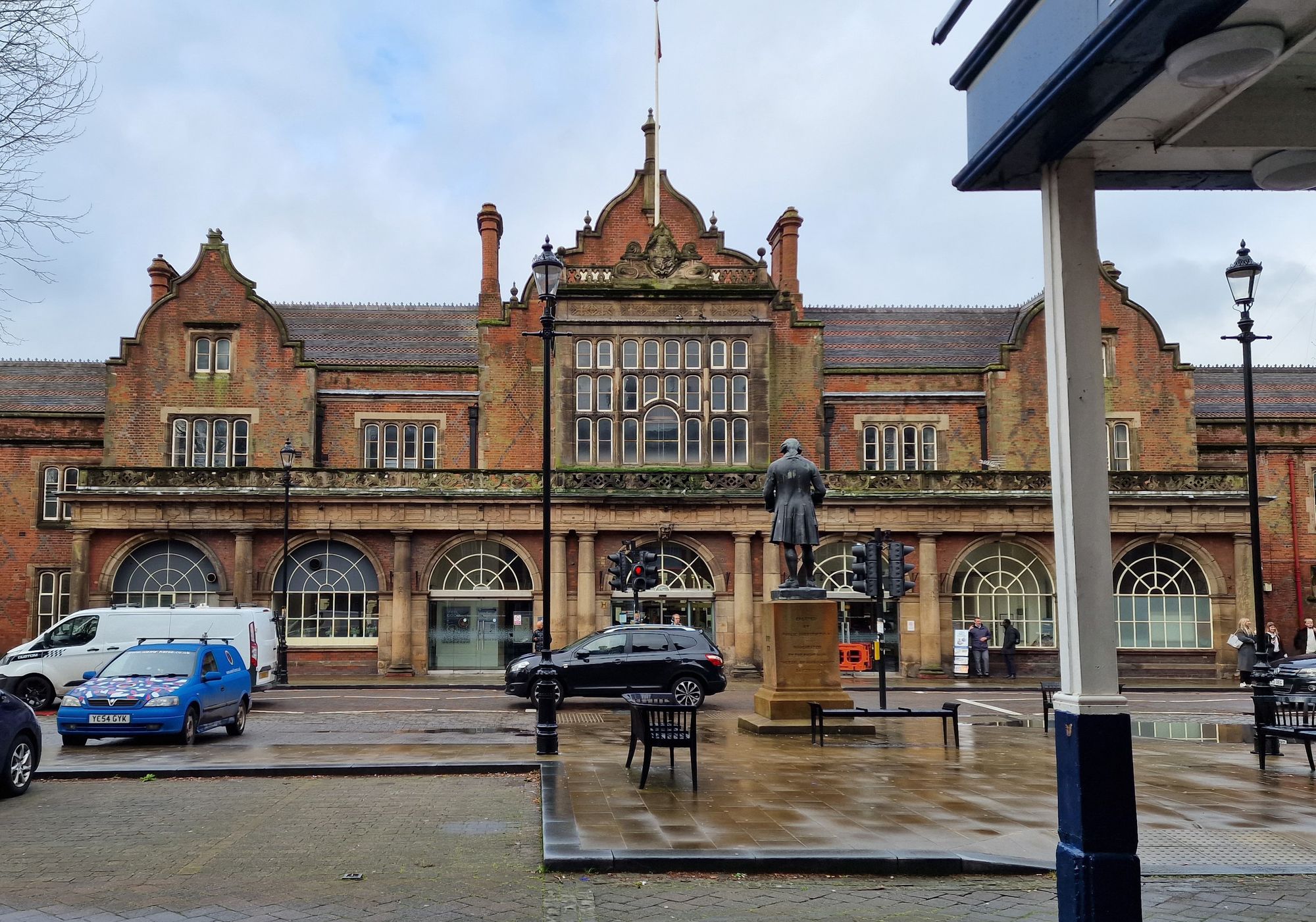
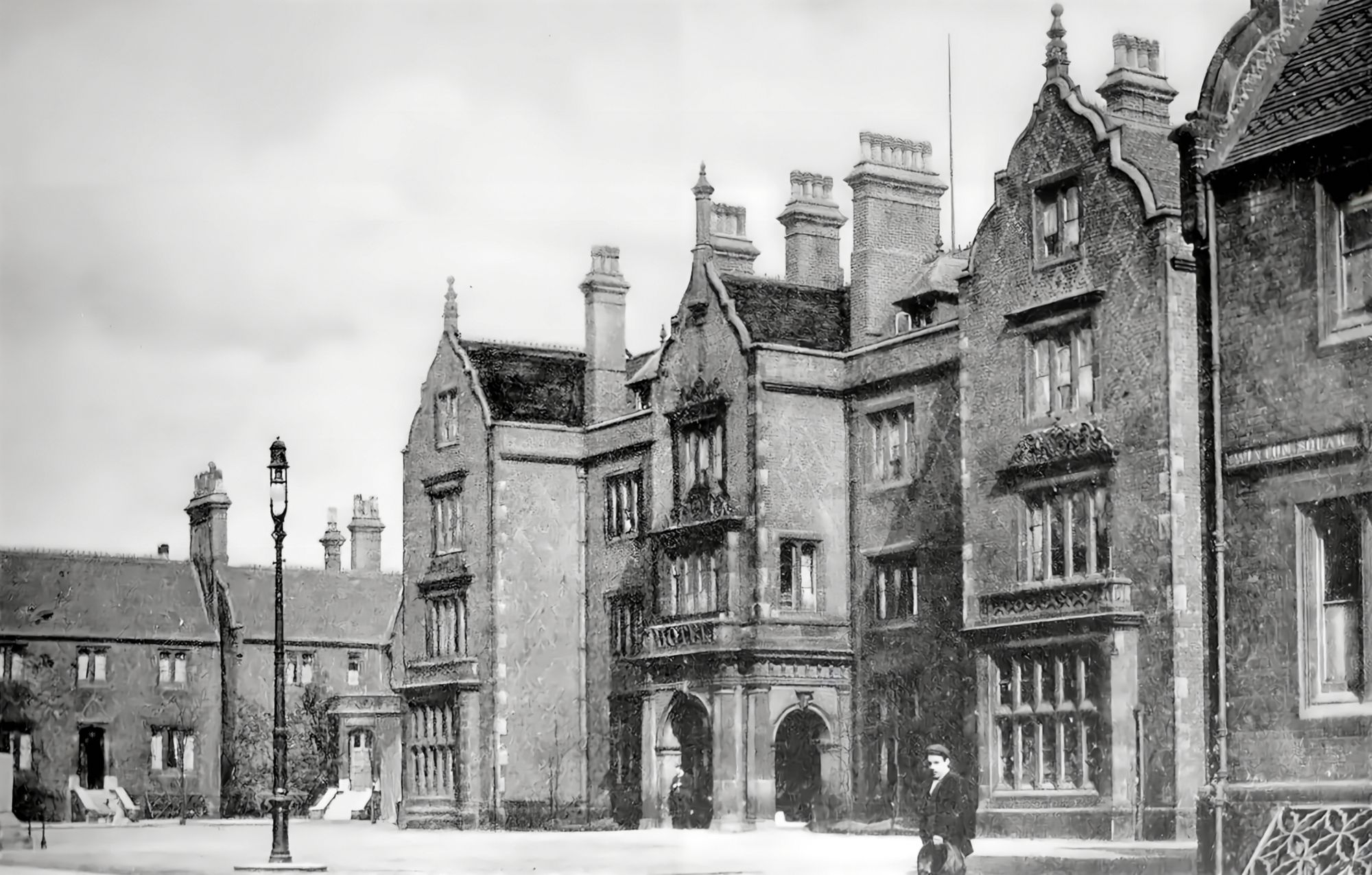
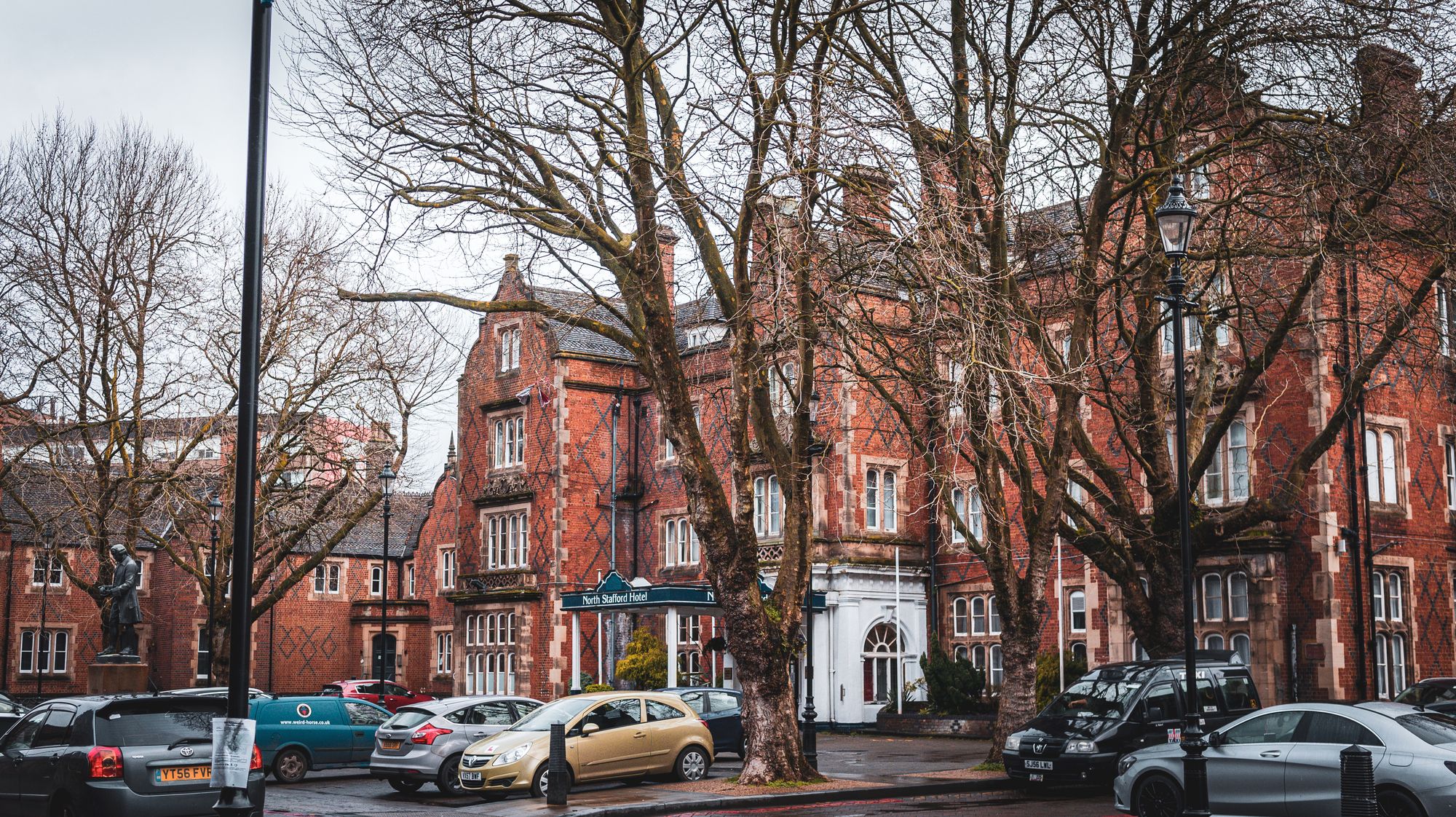
Winton Square was described by Sir Nikolaus Pevsner as "the finest piece of Victorian axial planning in the country". This truly stunning square is the first thing that greets anyone stepping out of the train station and into Stoke.
A stunning collection of buildings stood on land that was initially a woodland belonging to the Church of St Peter ad Vincula. It was originally called Winton's wood, for the church rector John Winton, and then the name was changed to Winton Square then the buildings were built in 1848.
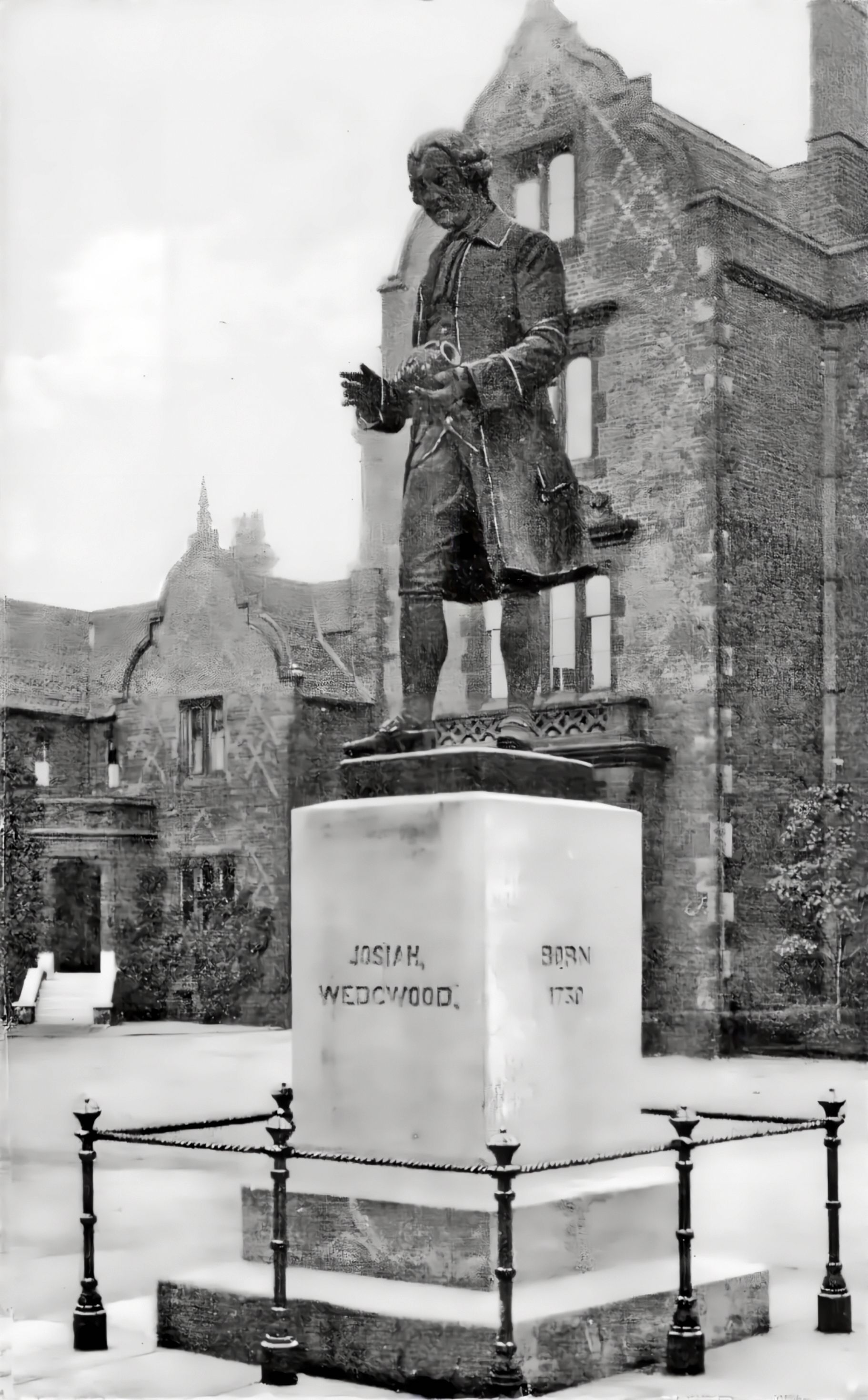
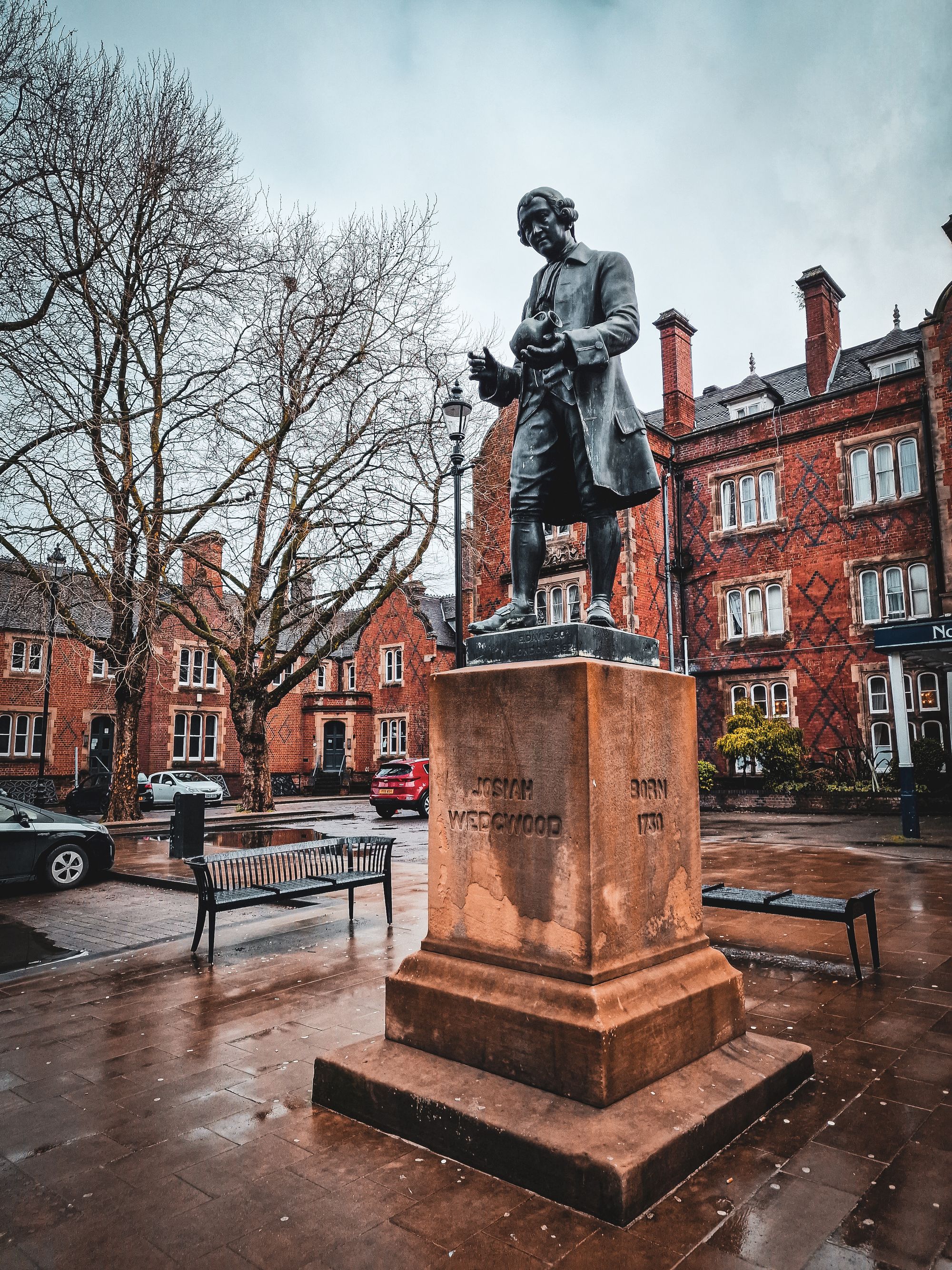
In the middle of the square stands a Grade II listed bronze statue of Josiah Wedgwood that was erected in 1862 by Edward Davies. Around the square is the railway station built in the style of an Elizabethan manor house, the North Stafford Hotel, also Grade II listed and built in 1849 and then on either side of those are railway houses built for senior North Staffs Railway senior employees.
This whole area is now a designated conservation area.
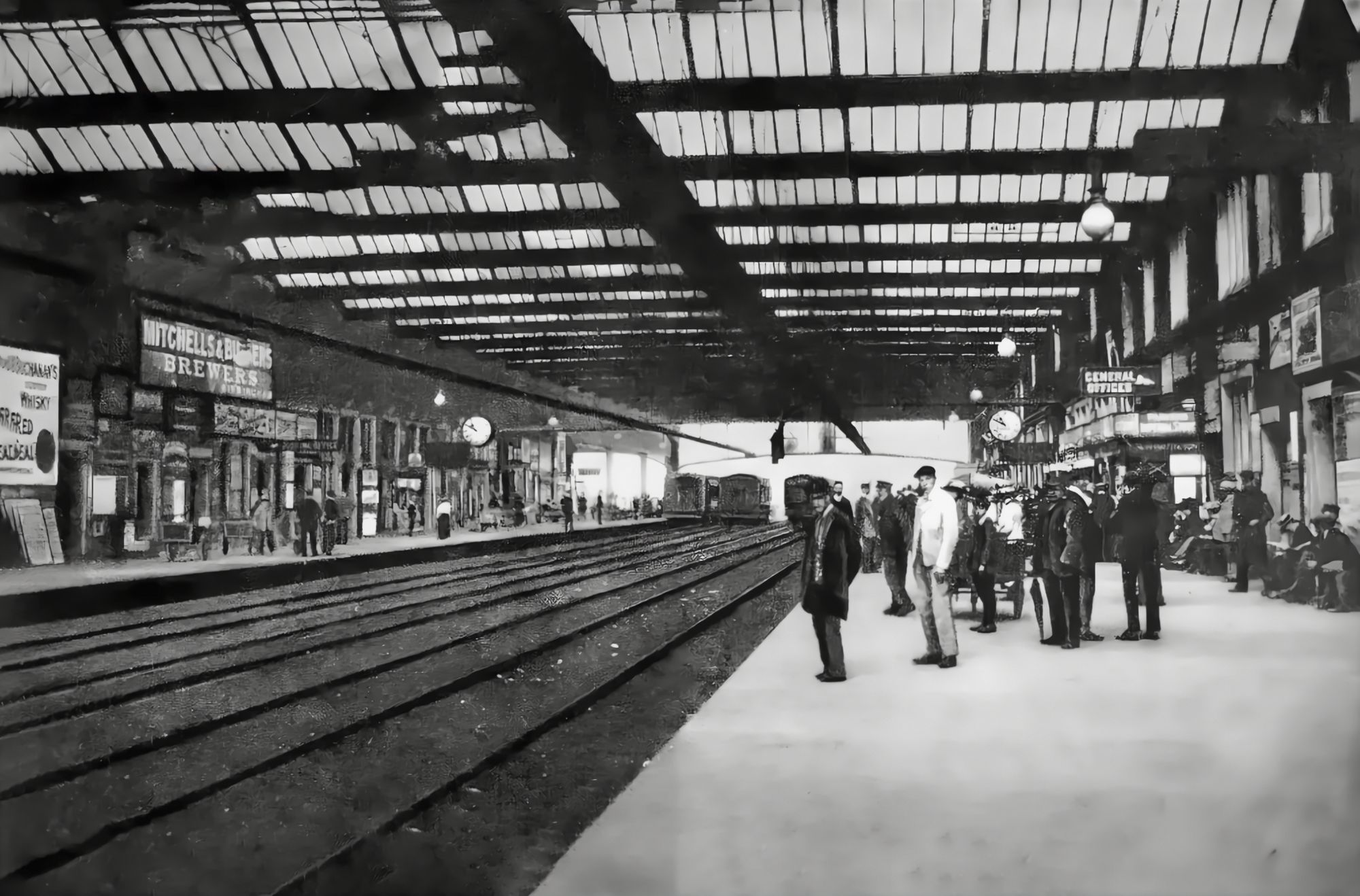
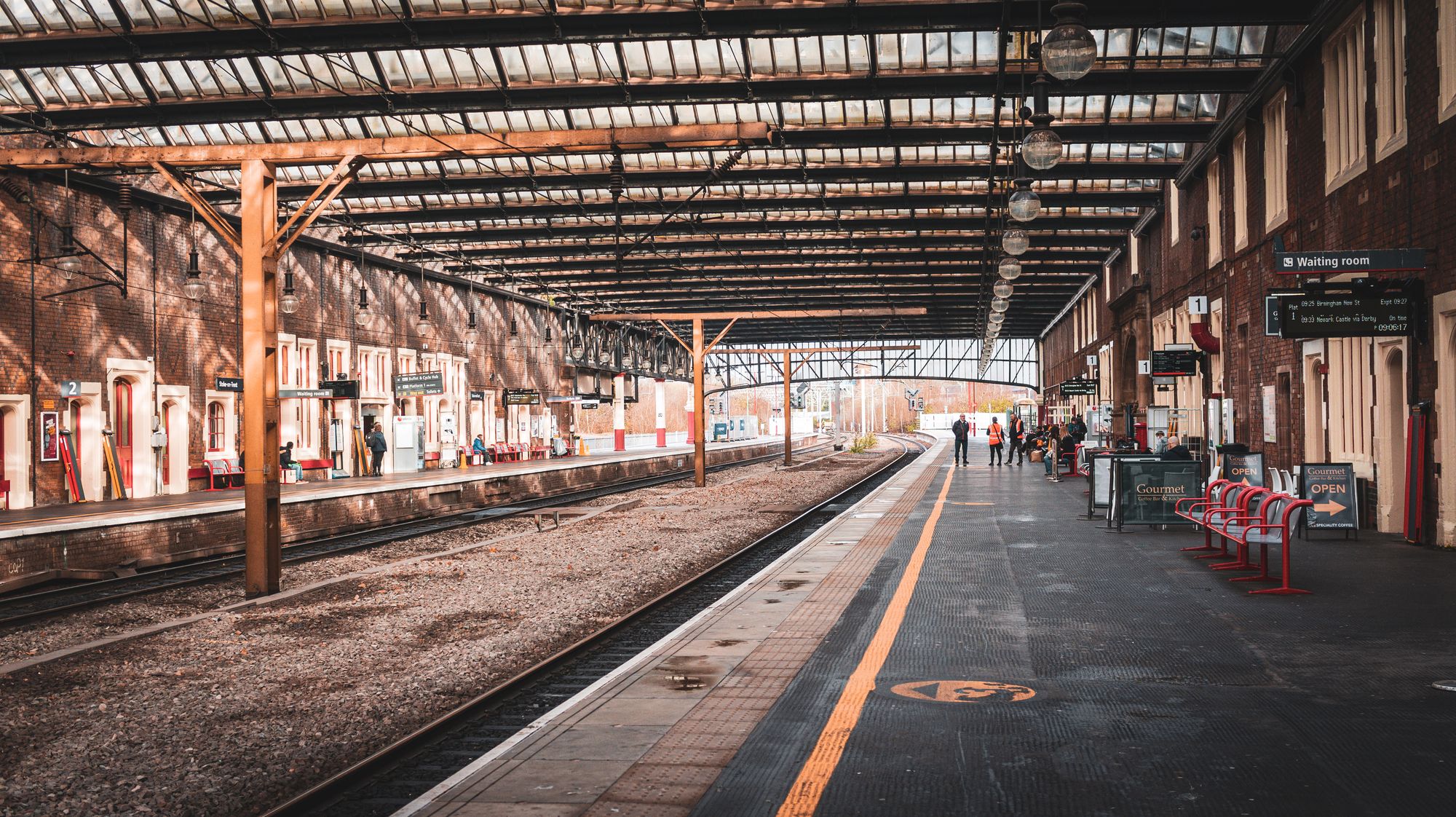
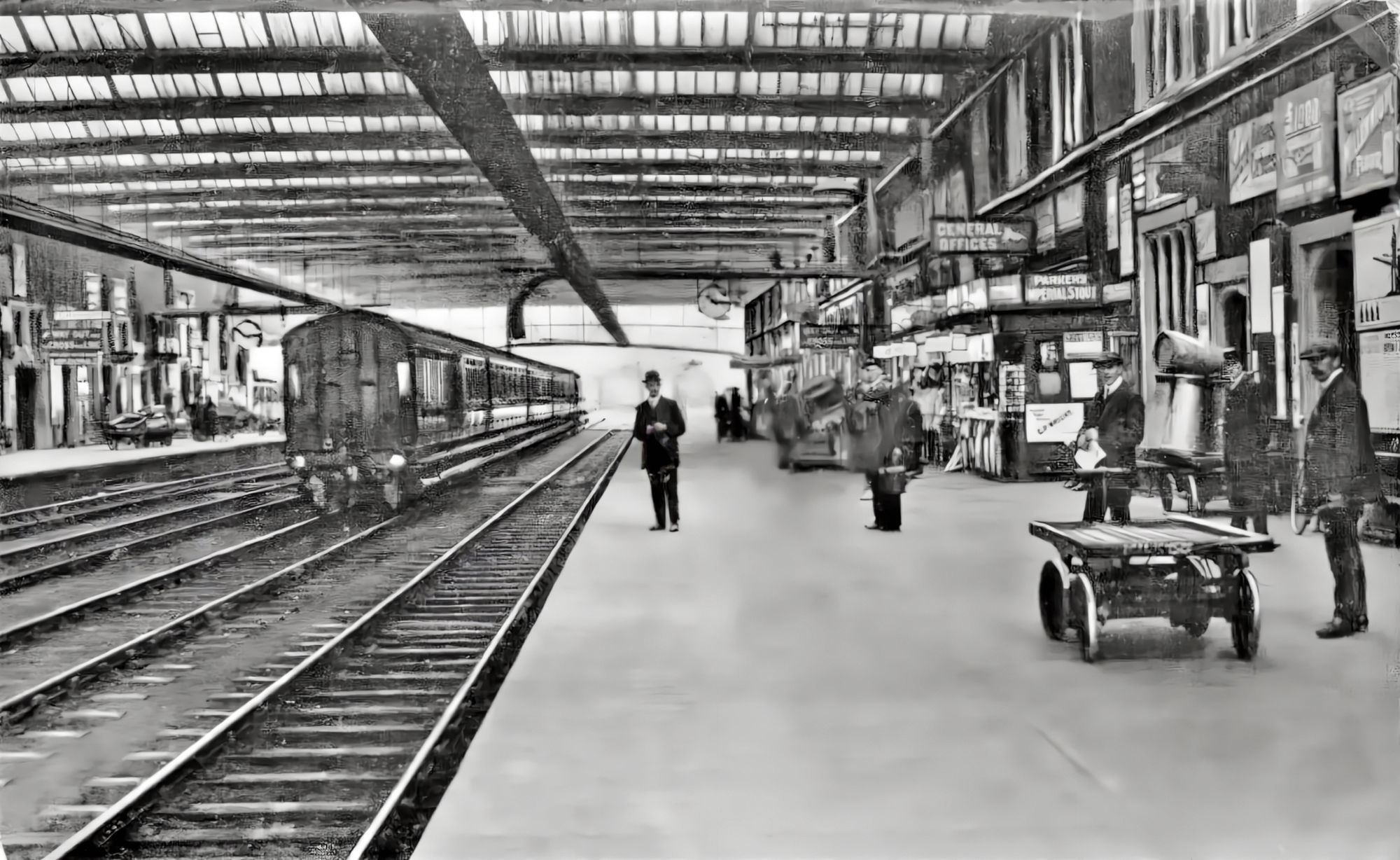
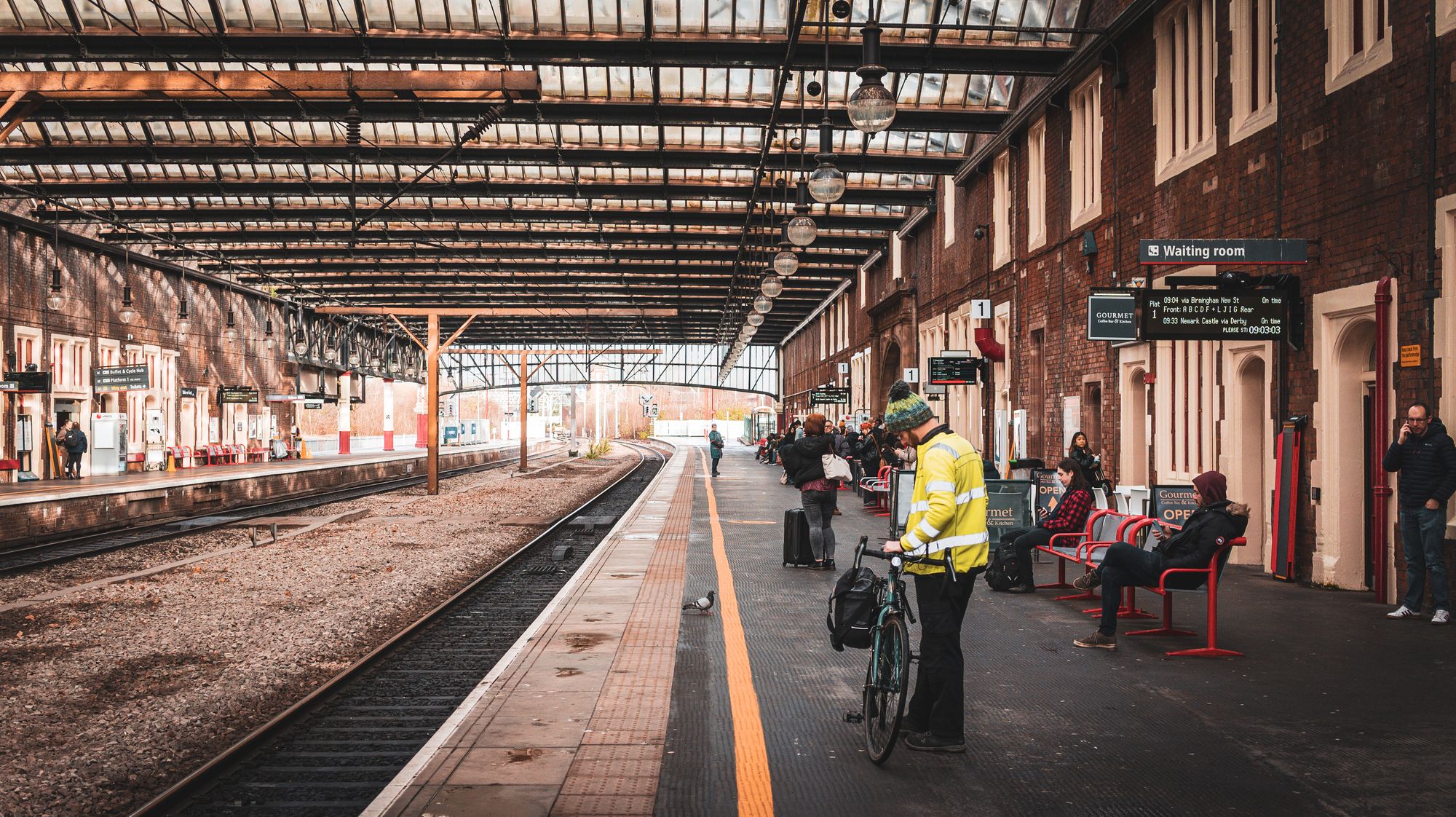
Inside the station is actually not that different considering that there are over 100 years between the photos. The main difference in these photos is the lack of advertising boards and banners that are in the older photos and the addition of the new signs and electronic boards in the modern ones.
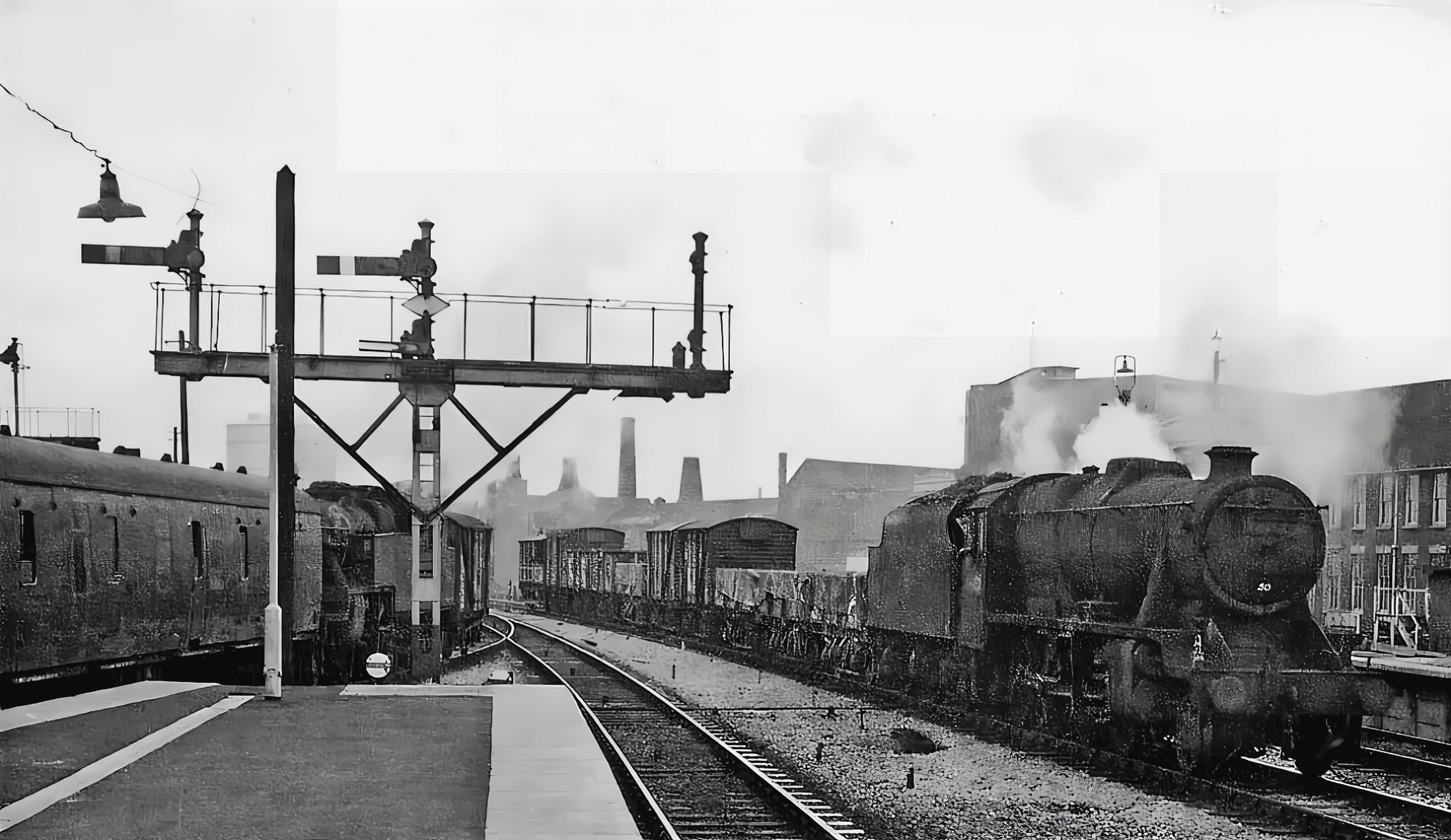
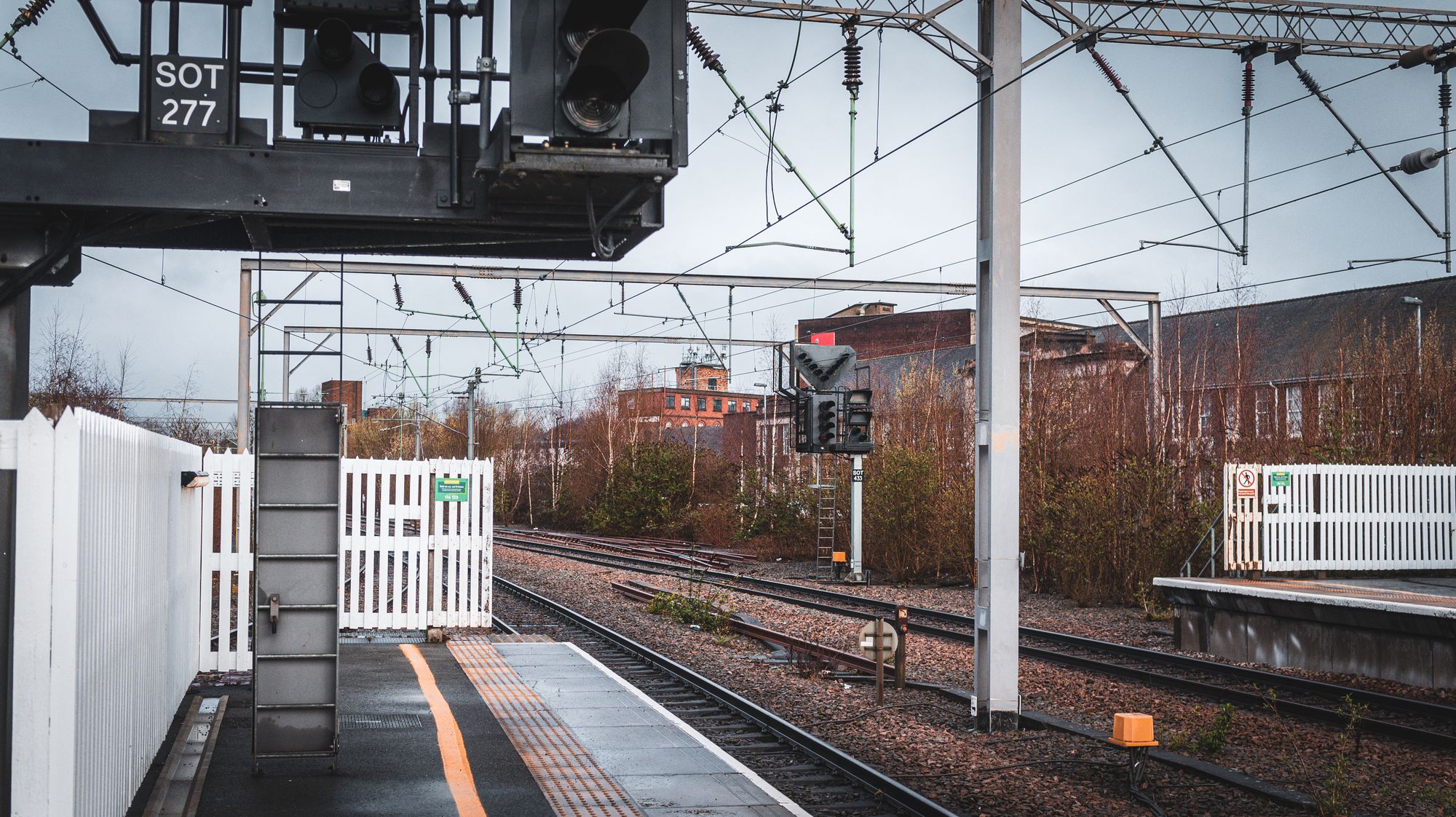
This is a sight that we don't see often enough. A beautiful big steam engine pulling into the station. I am no train expert but I would love to know more about this one, so if anyone has any info on this train, or if you know what train it is, please leave me a comment because I'd love to know!
The modern photo is a lot more cluttered with electric wires and digital signalling equipment. The old photo is just more aesthetically pleasing, isn't it?

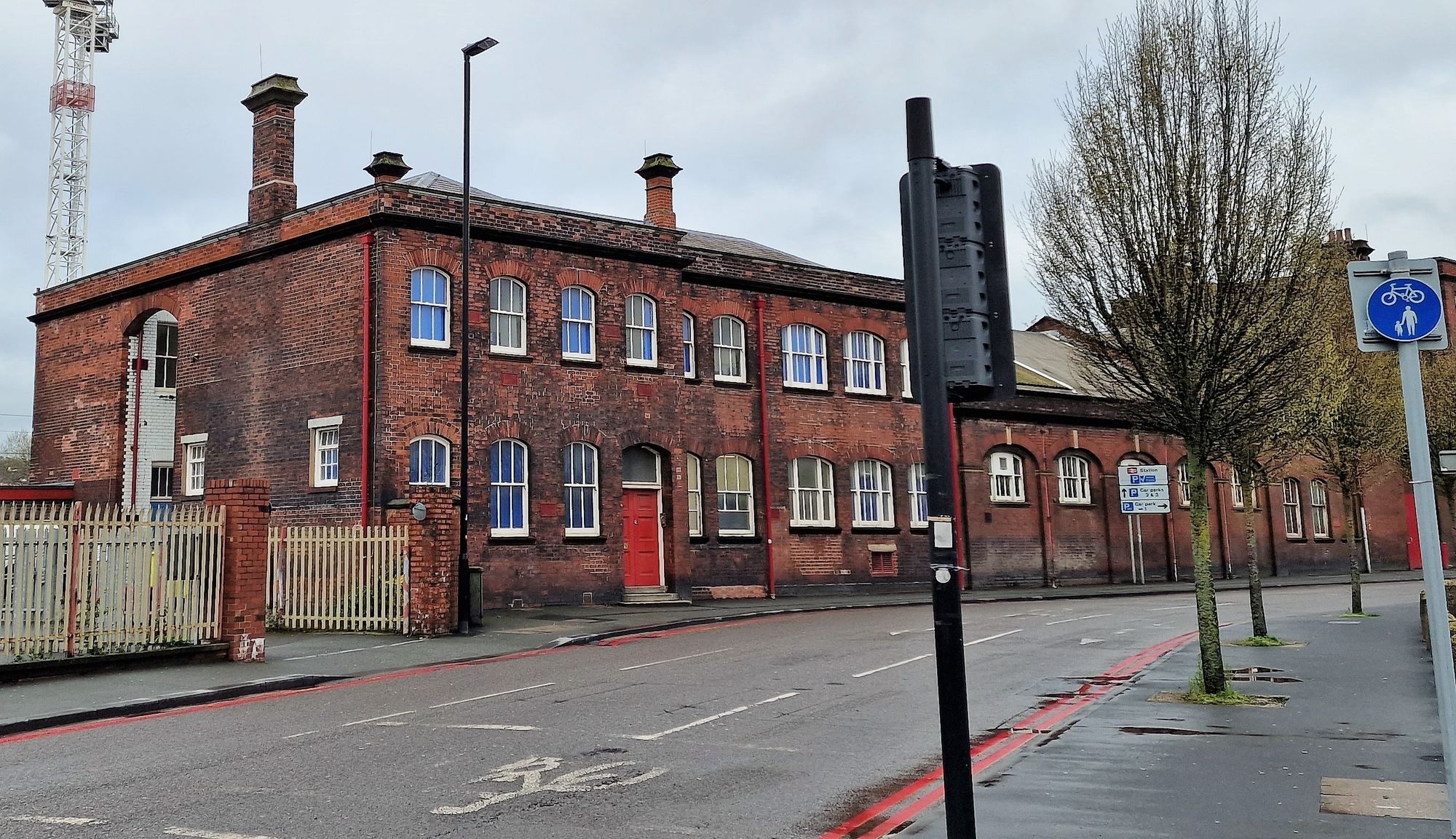

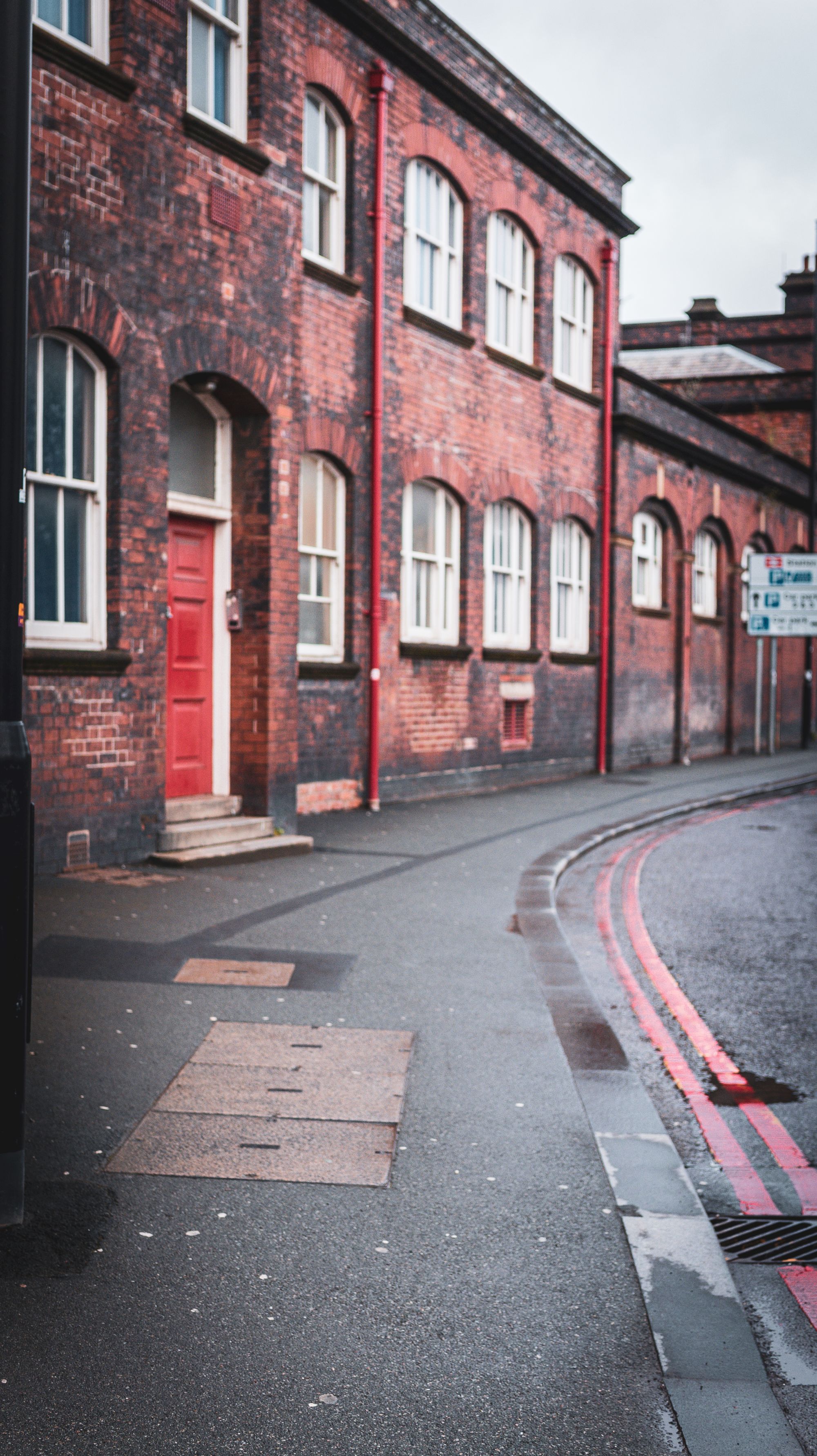
Just down the road from the station is a building that seems to be offices now, but was originally the Post Office. Built-in 1930 it wasn't the Post Office for long as the building that now stands opposite opened in 1963.
Why you would prefer that horrible prefab building over this beautiful building is a mystery though. Also, the new Post Office building is built on top of a former reservoir, so they had to remove an entire pool of water instead of just using this building.
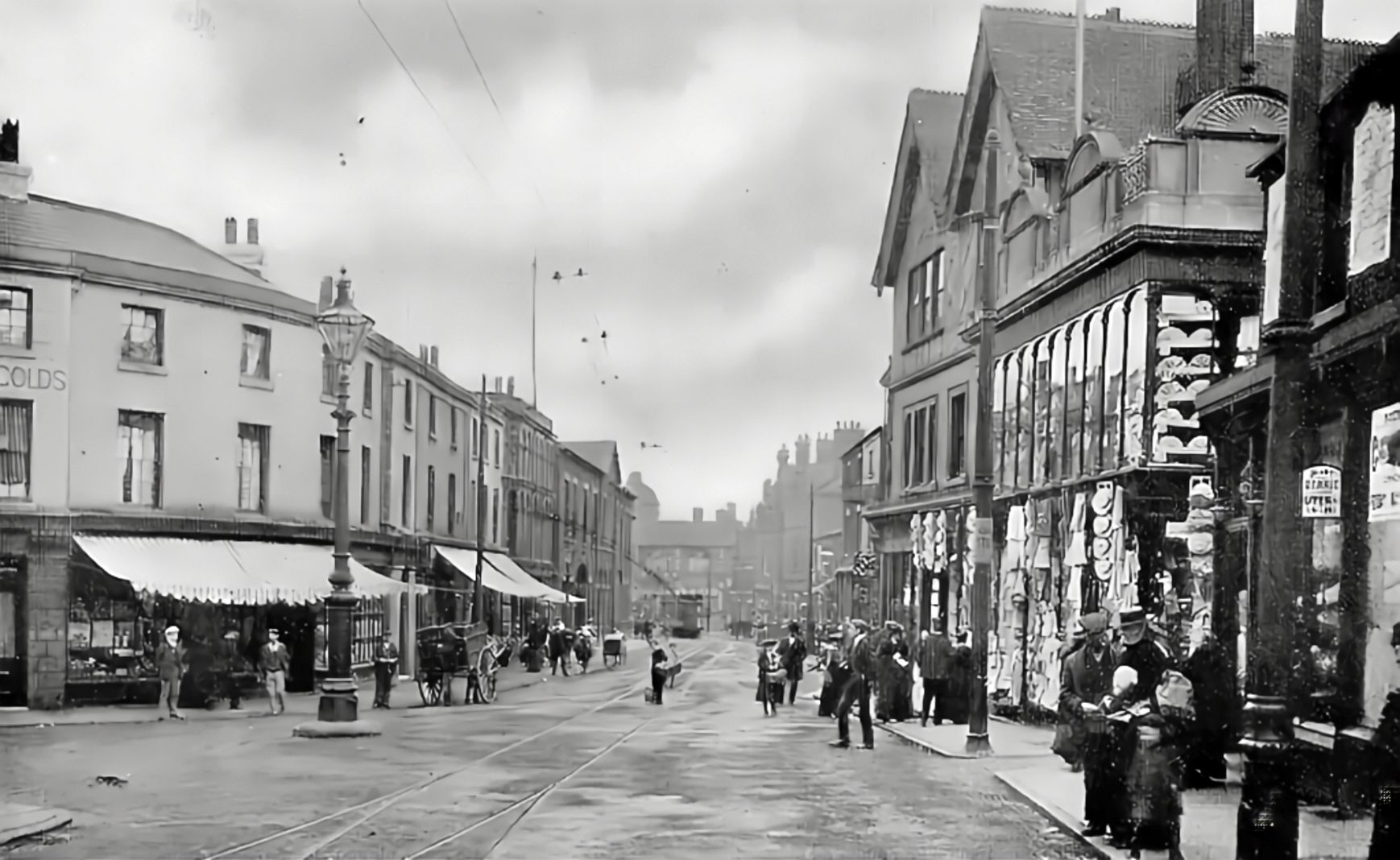
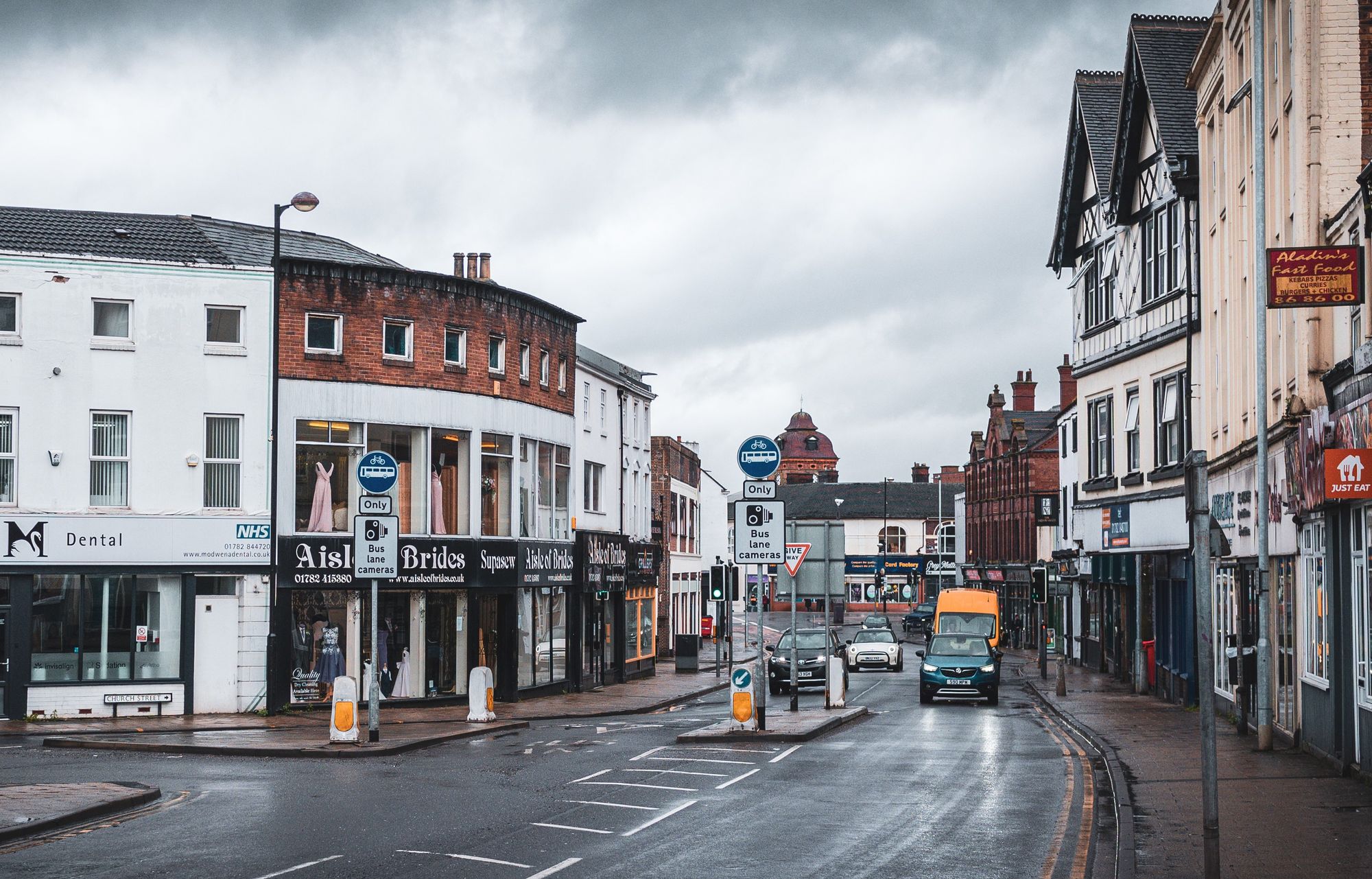
Heading into the centre of the town, there is still the majority of the buildings standing here, although there are a lot fewer shops at this end of the High Street.
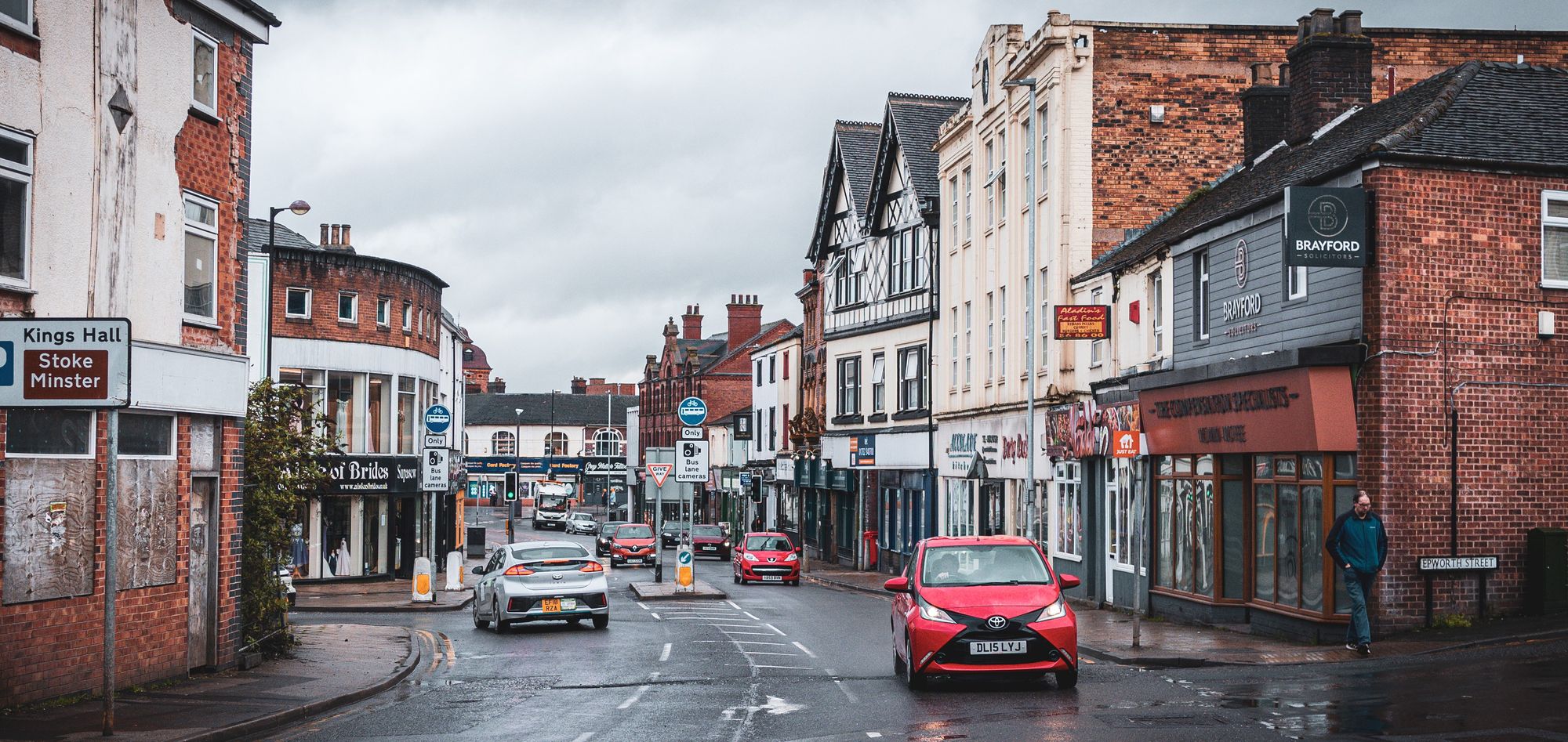
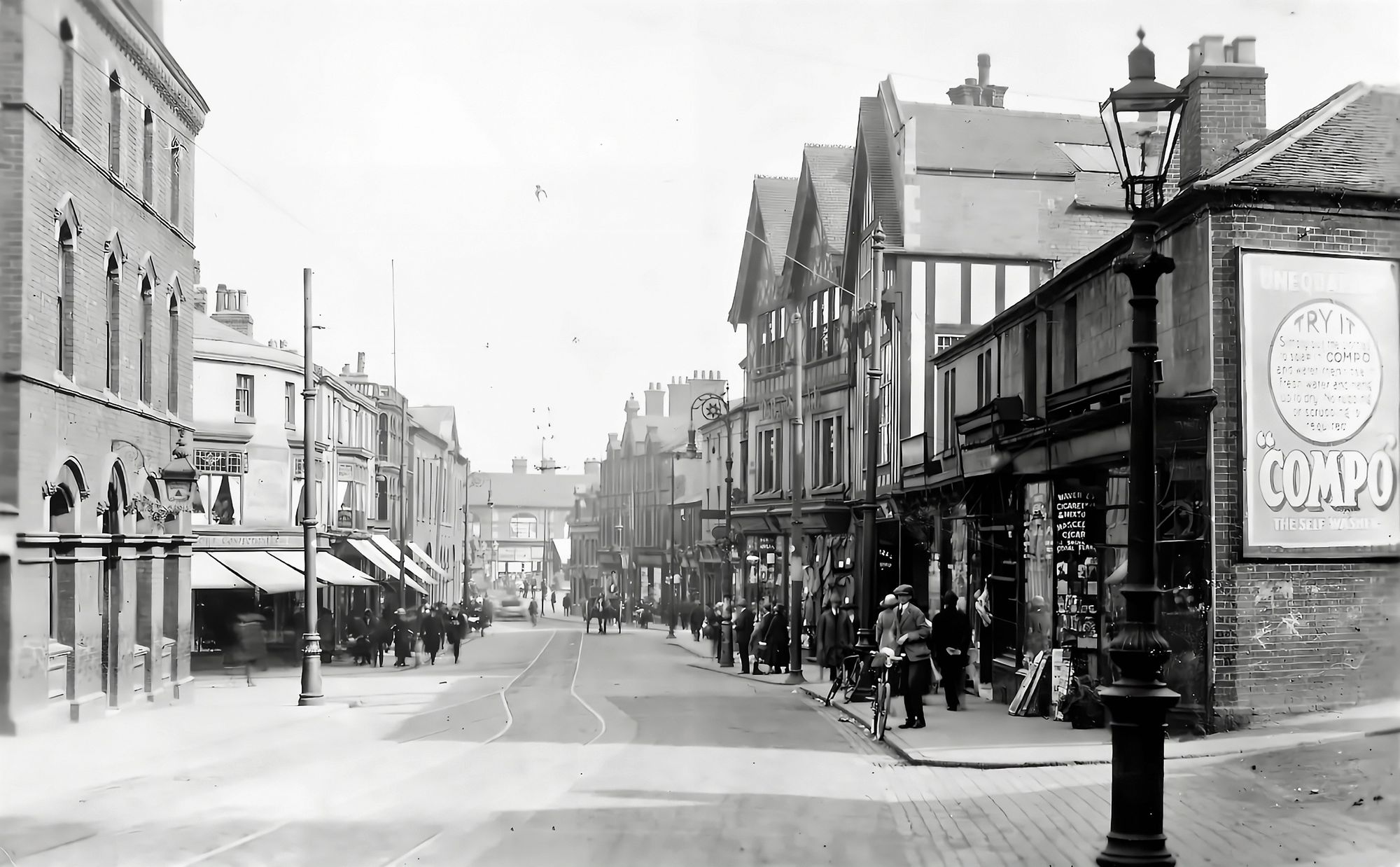
This is a similar scene but taken further up the road. As you can see, this was originally a bustling shopping street, but now unfortunately it is mainly a busy road from Stoke to Newcastle. I do love seeing old gas lamps like the one in the foreground. What a shame they aren't still there but converted to electricity.
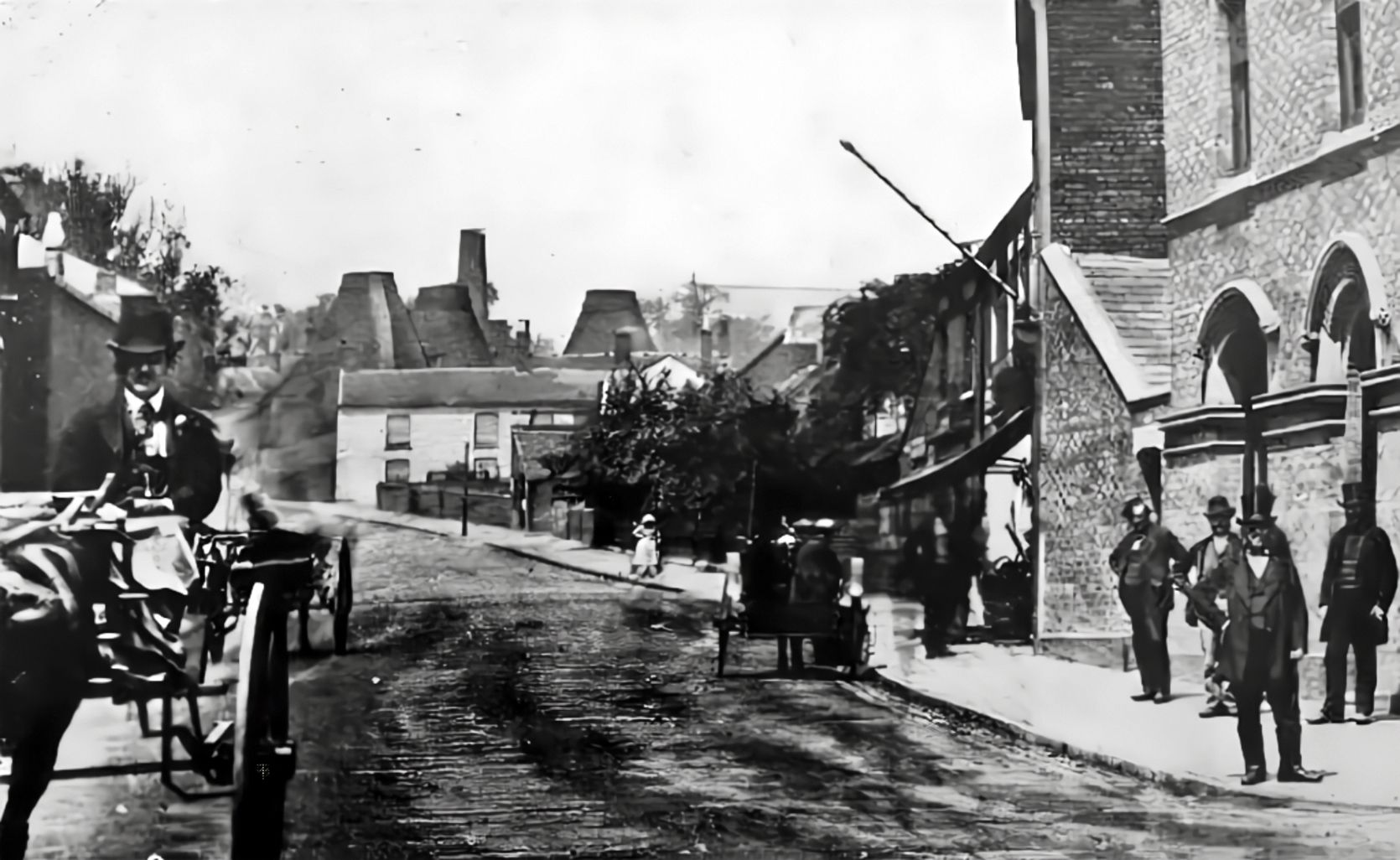
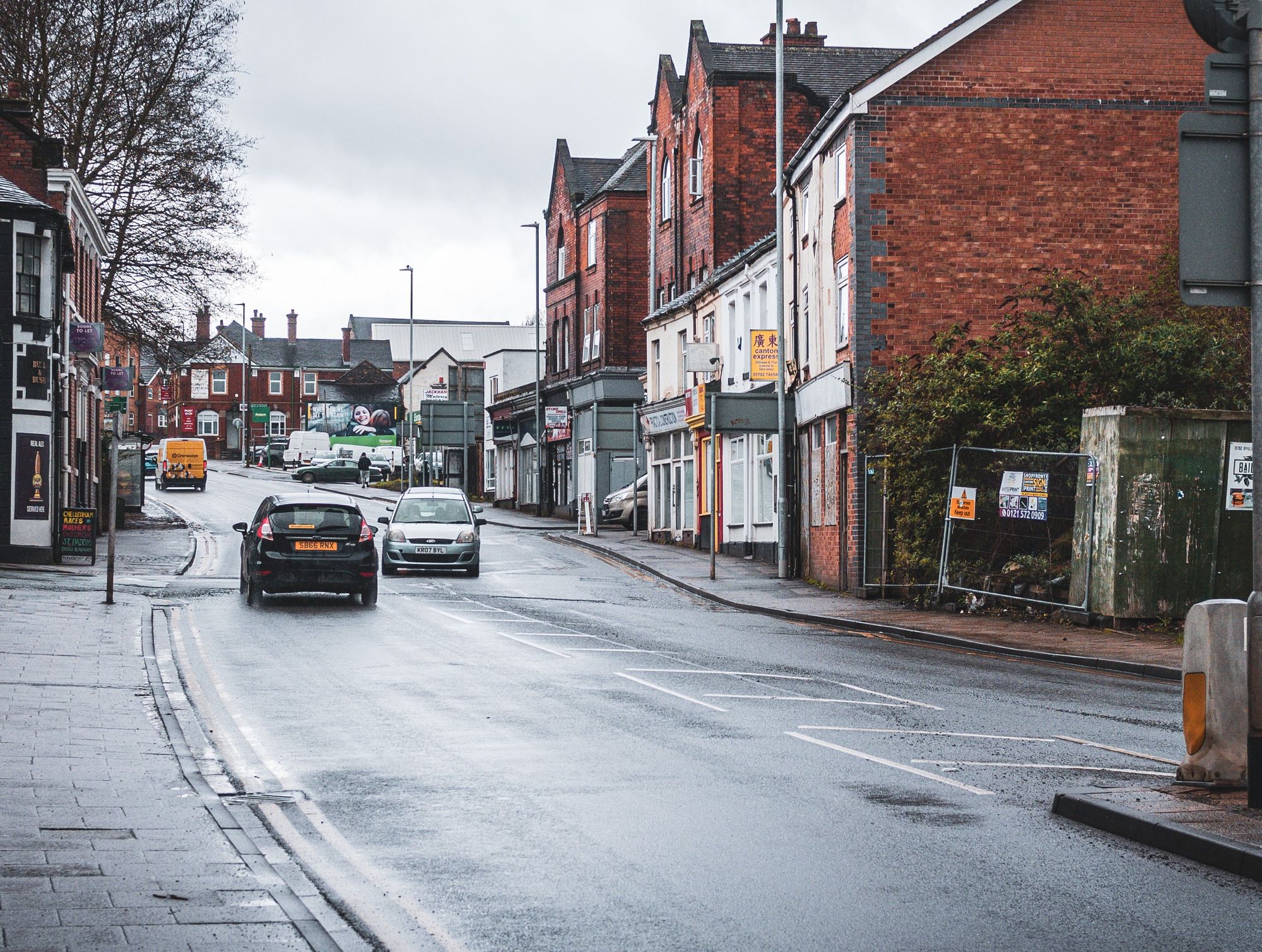
Looking from Stoke up to Hartshill, this is a very different scene. The horse and carts instead of the cars, the Queen's Hotel still standing on the right and the bottle kilns of the Lovatt and Hall Street Tile Works belonging to Messrs. Boulton and Floyd in the distance.
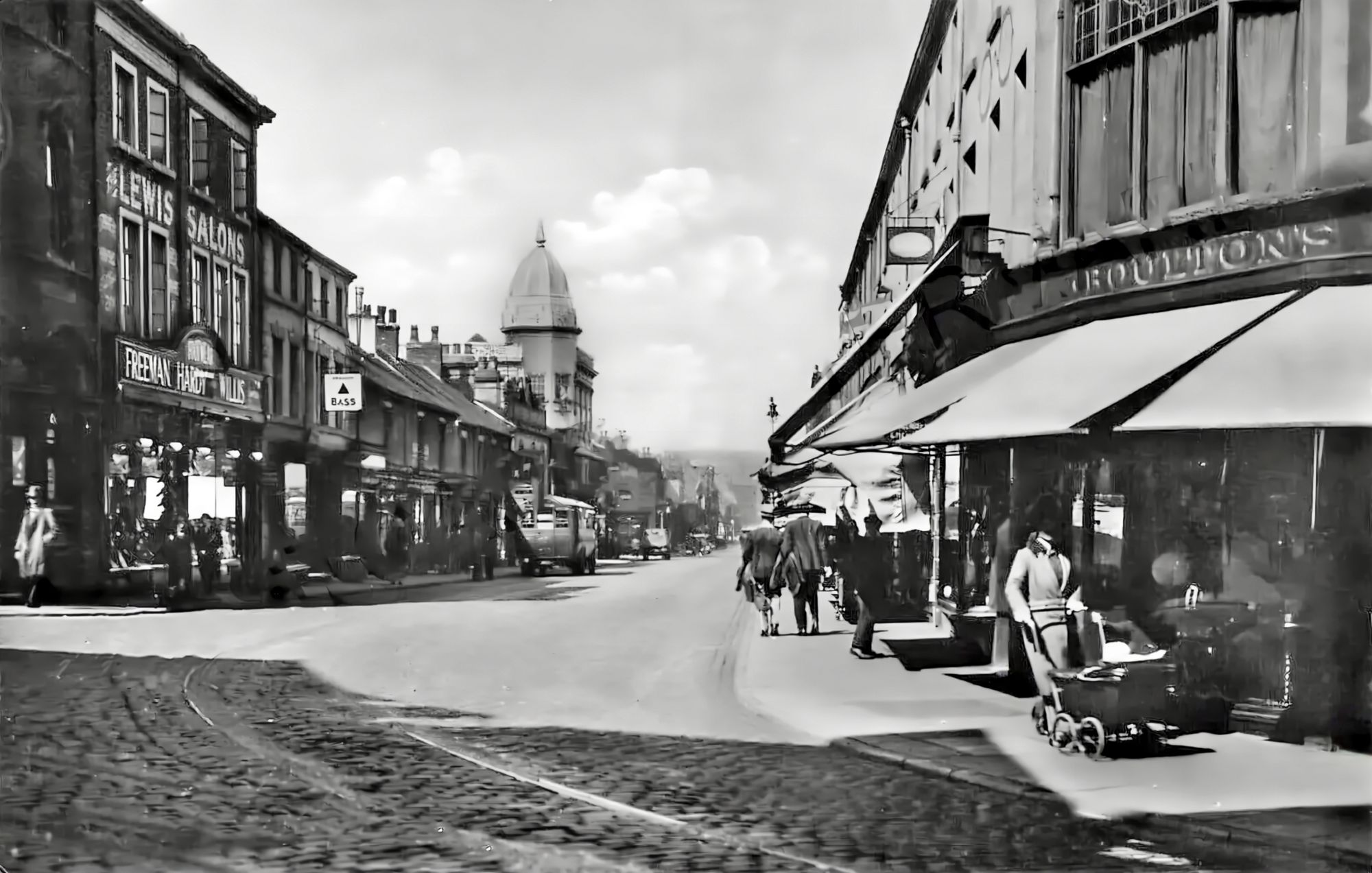
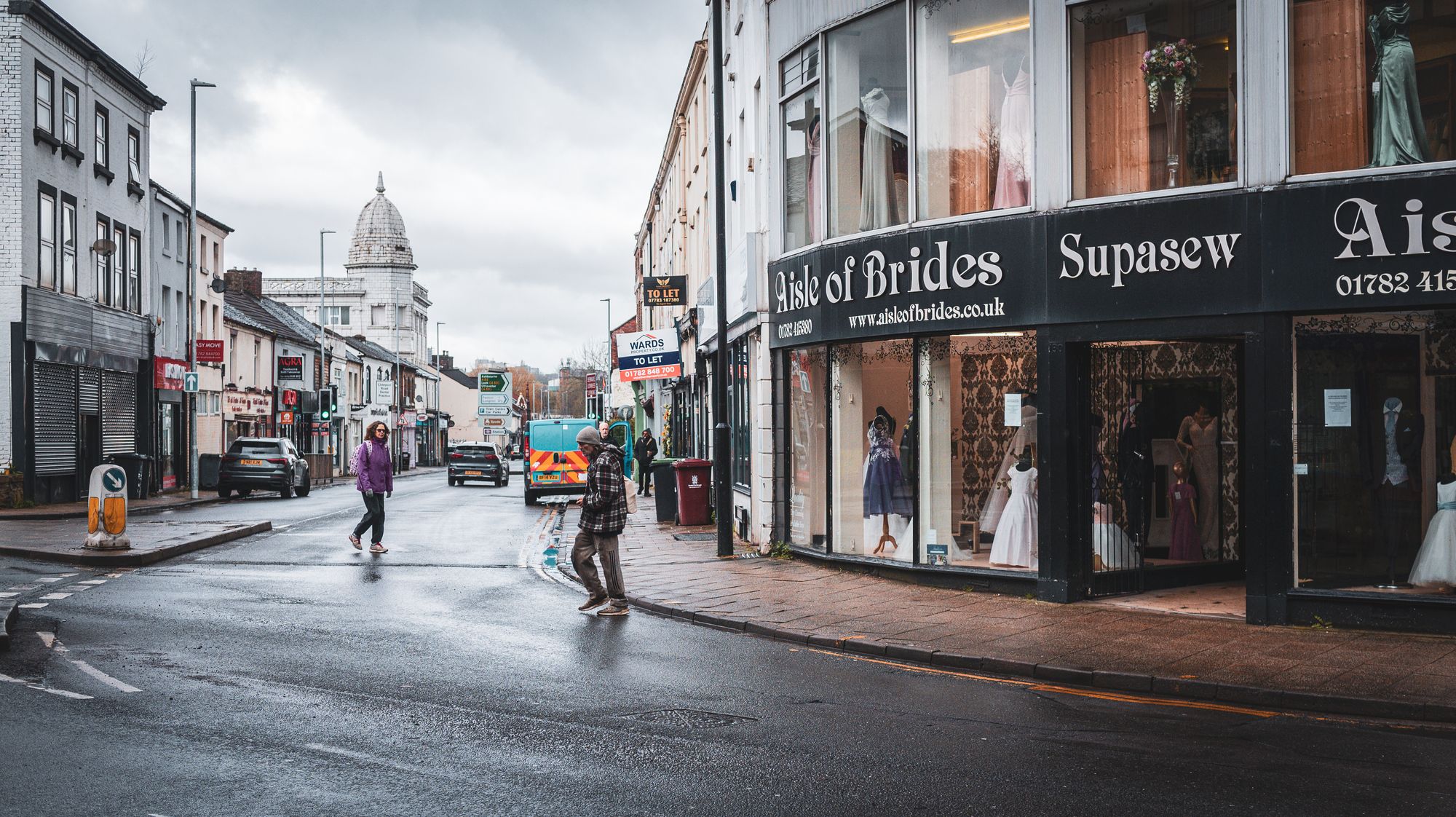
This view of Gray's Corner really hasn't changed too much either in terms of the buildings still standing. The problem here is that many of the buildings in this area are now empty. This area is a busy road with no place to stop and not many people walk this far from the town, so there aren't many shops.
The white domed building in the distance was the Co-op department store.
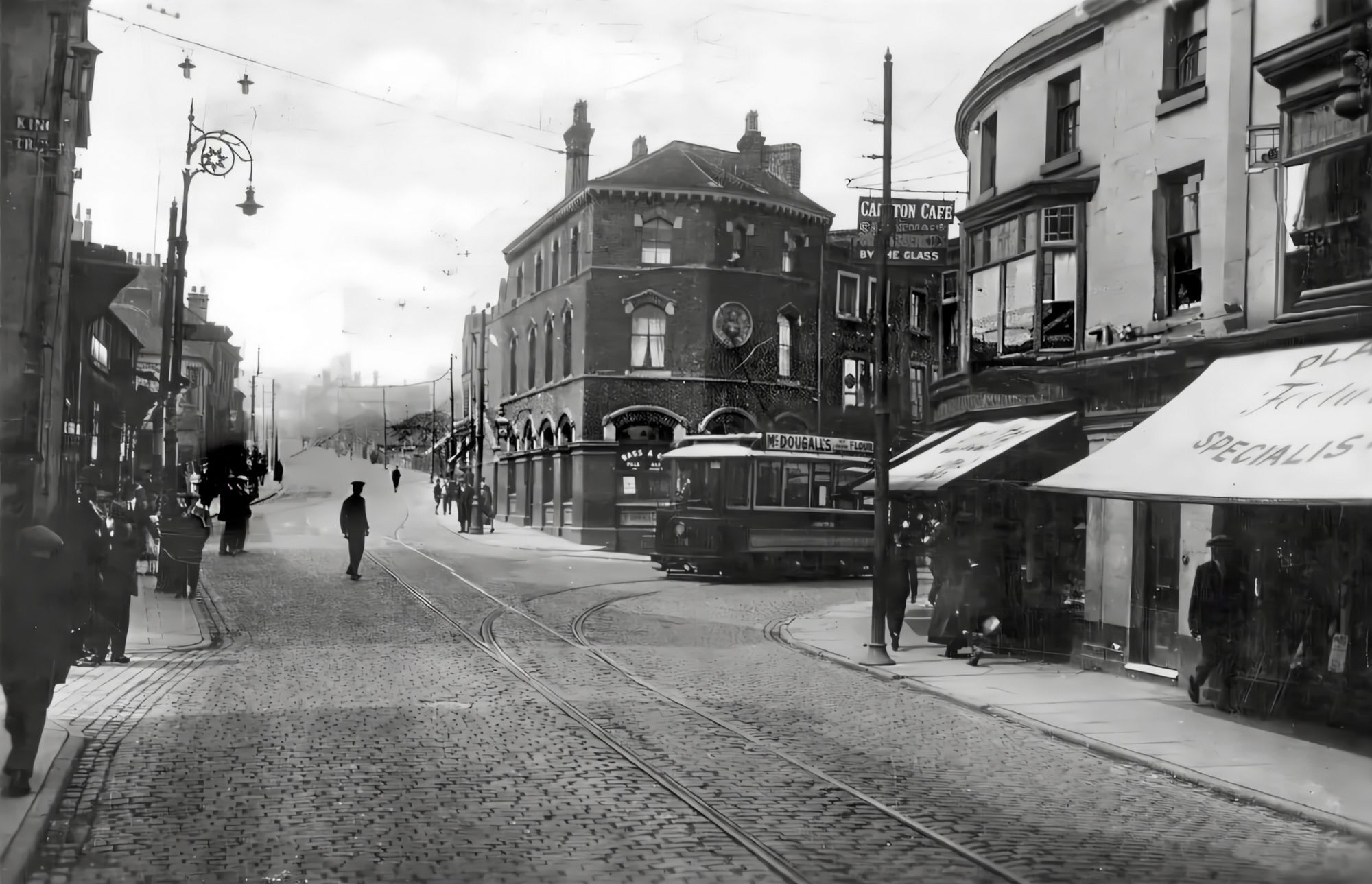
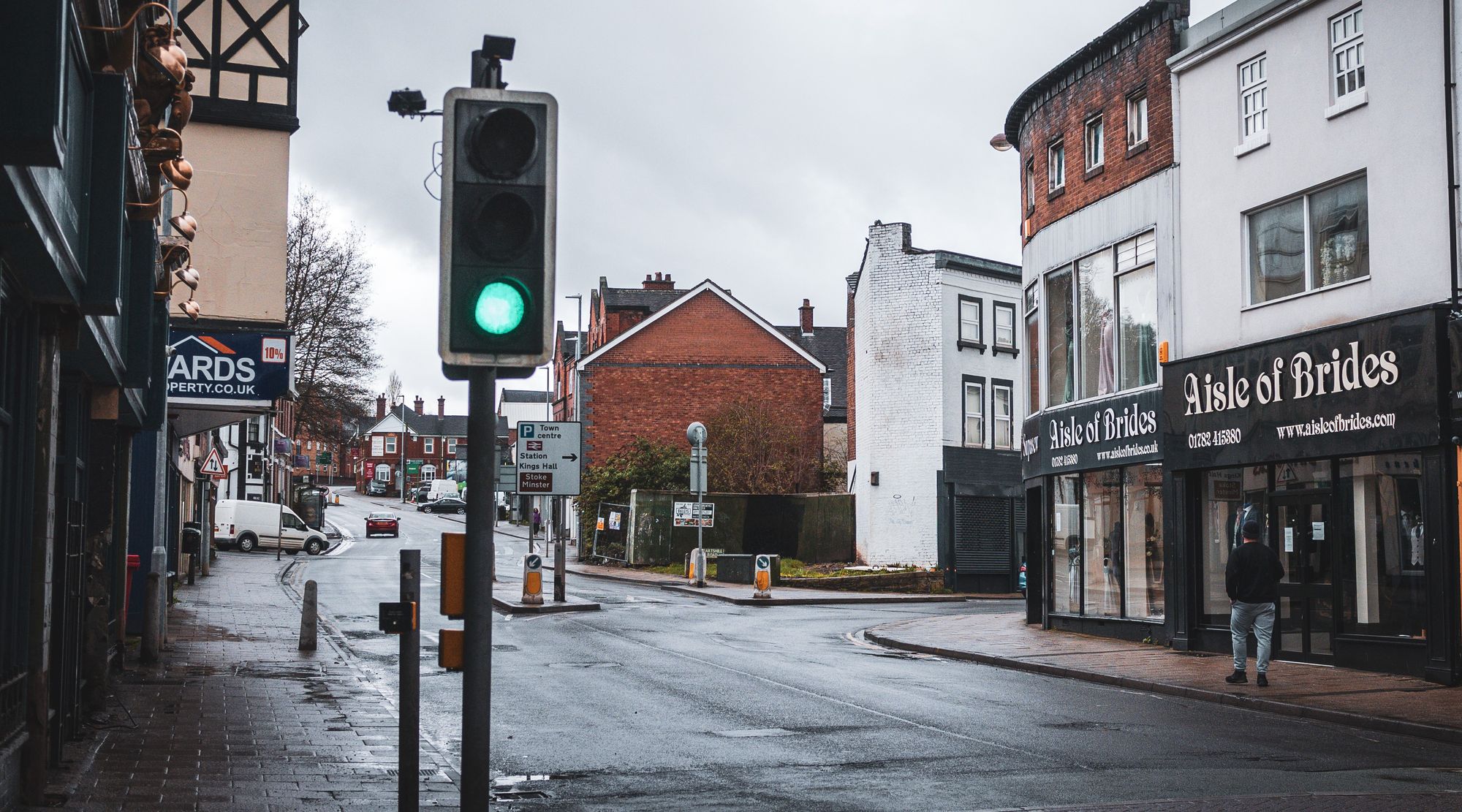
This is a view of Gray's Corner taken from lower down, closer to the town centre. The biggest difference here, other than the lovely tram trundling down the road, is the fact that the Queen's Hotel is missing. It was demolished in the 1960s.
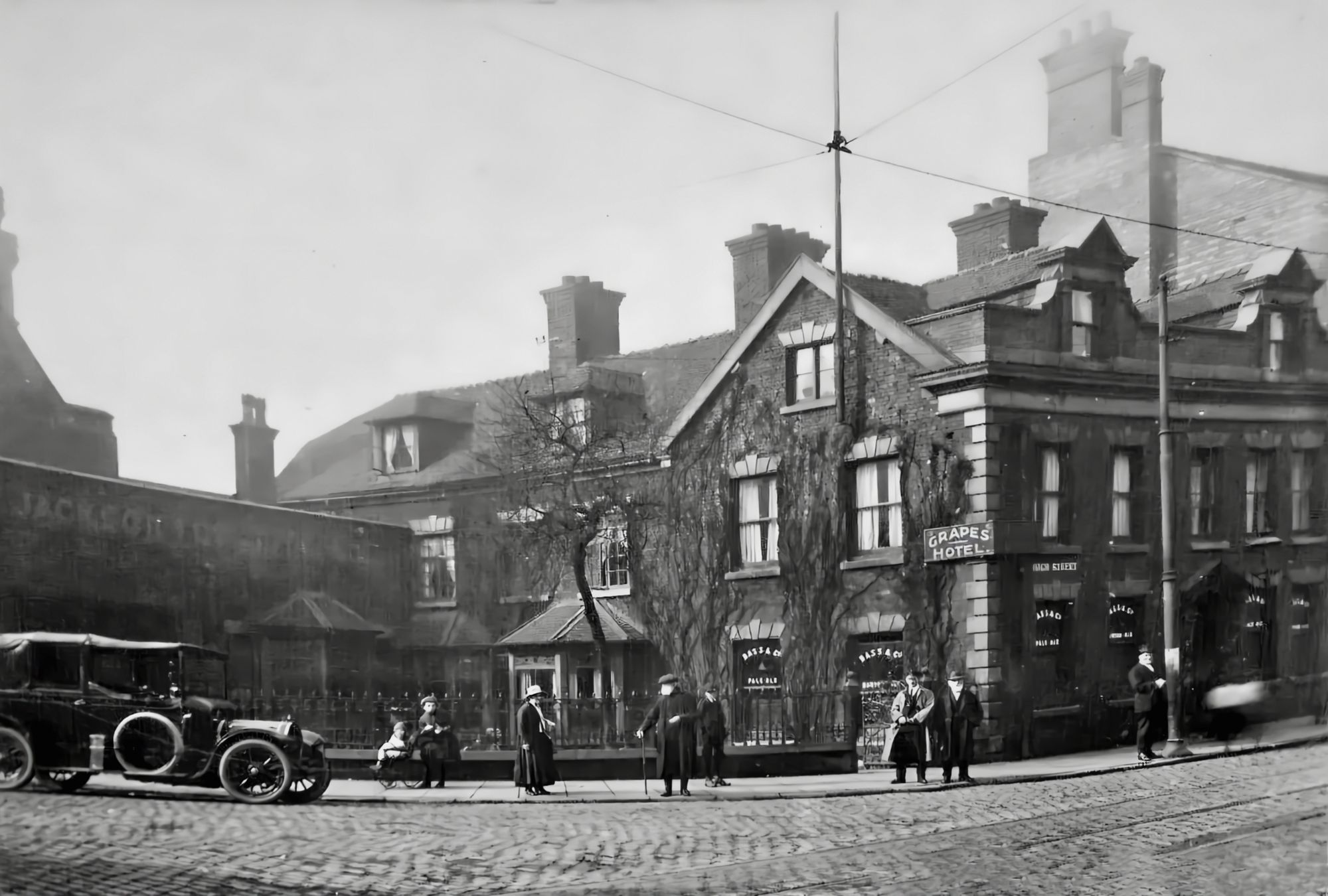
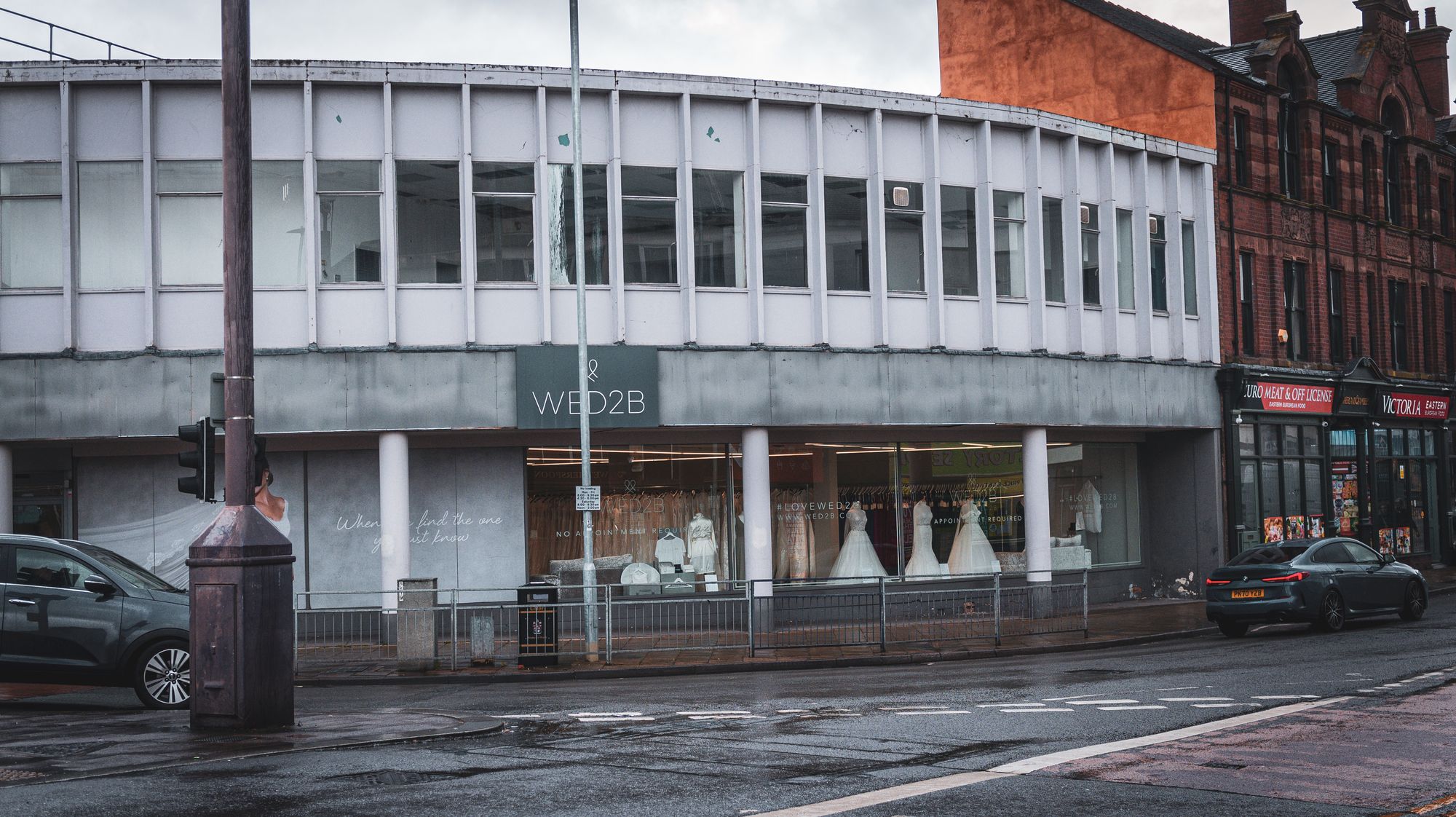
This building on the corner of Church Street and Campbell Place was once The Grapes Hotel. This stood until the 60s when it was demolished and replaced with whatever this monstrosity is.
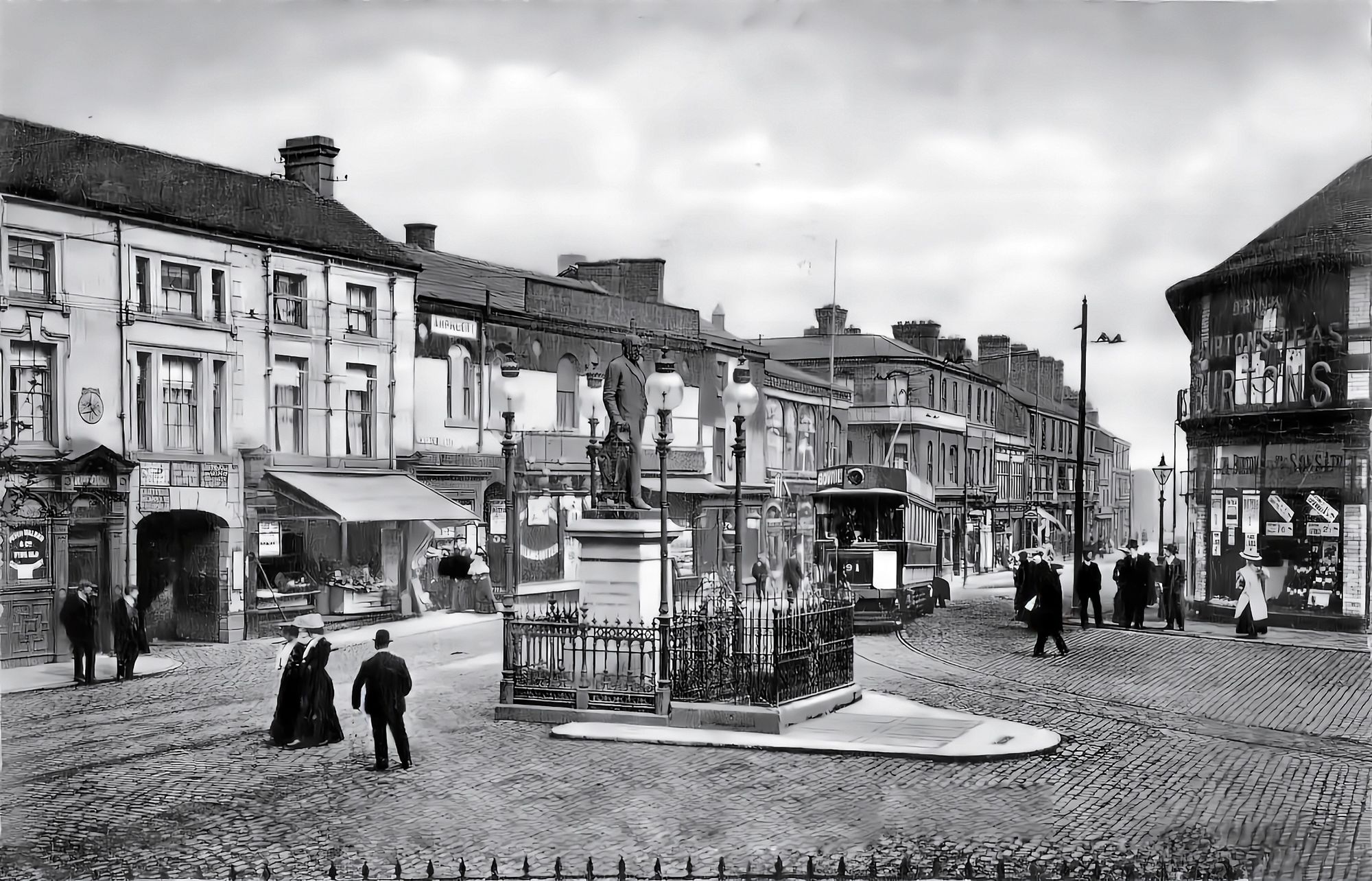
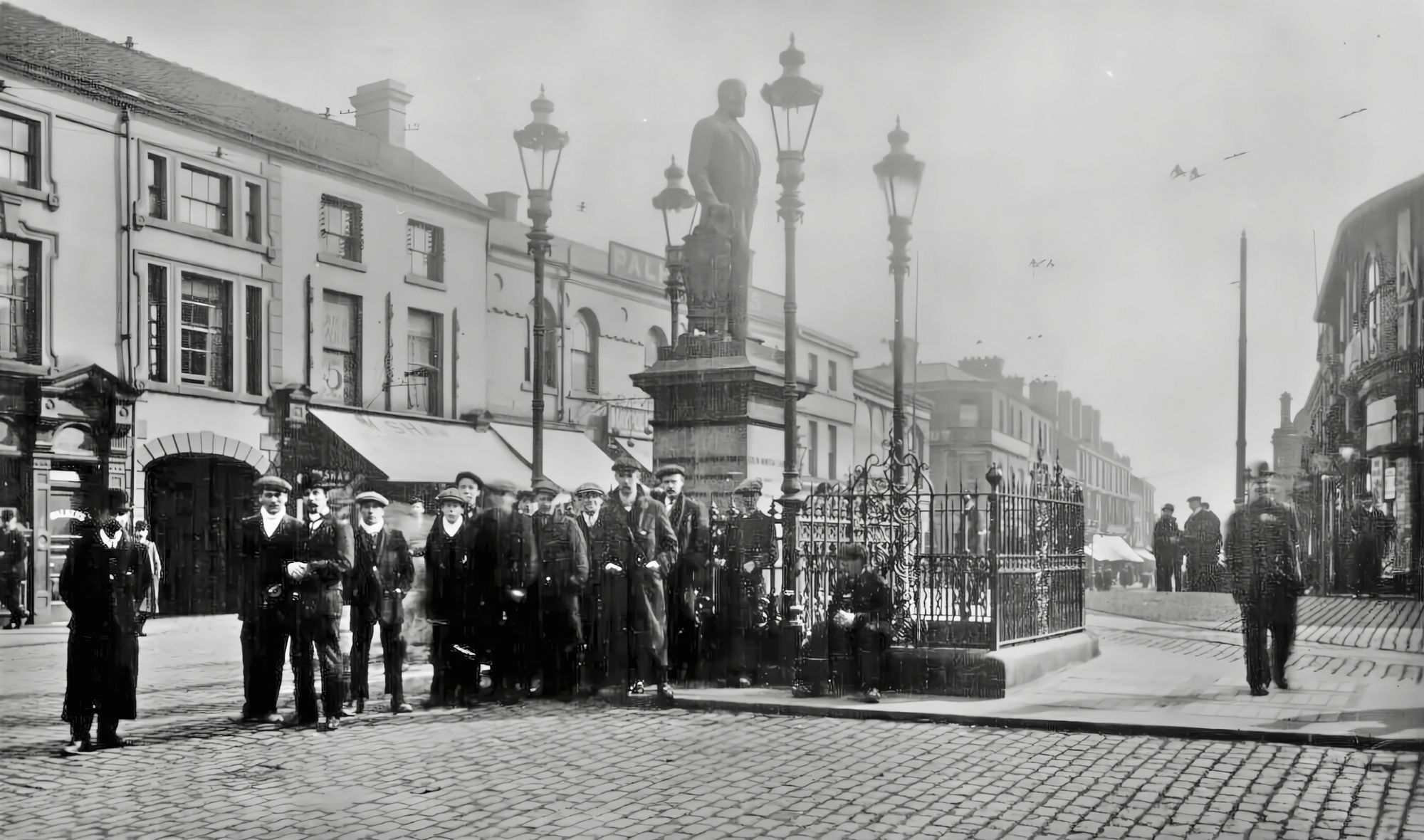
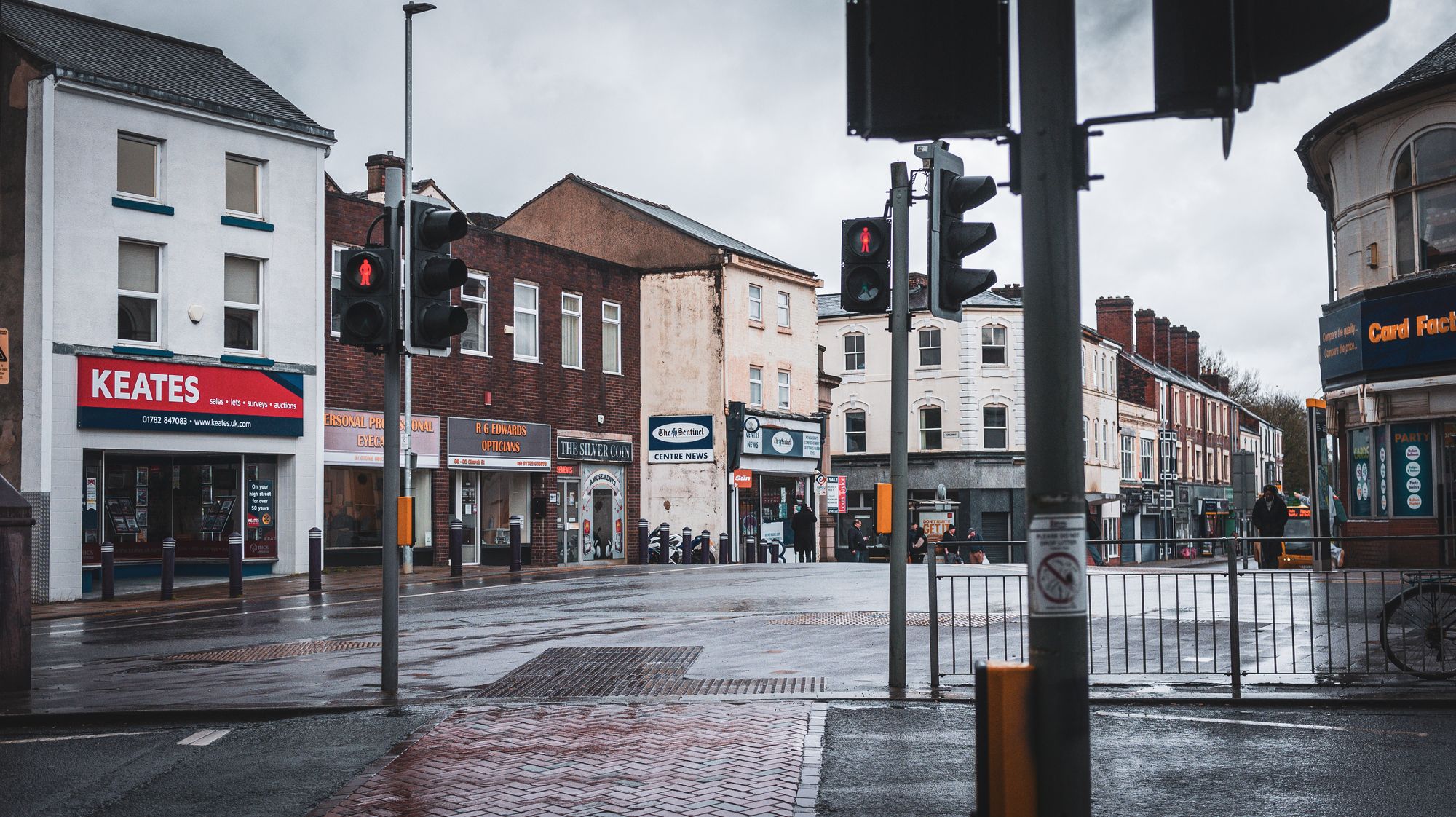
Looking in the other direction across Campbell Place we can see quite a difference here. First of all the Campbell Monument (Statue of Colin Minton Campbell) is no longer there. Luckily it still exists, it is just further down the road next to Sainsbury's for some reason.
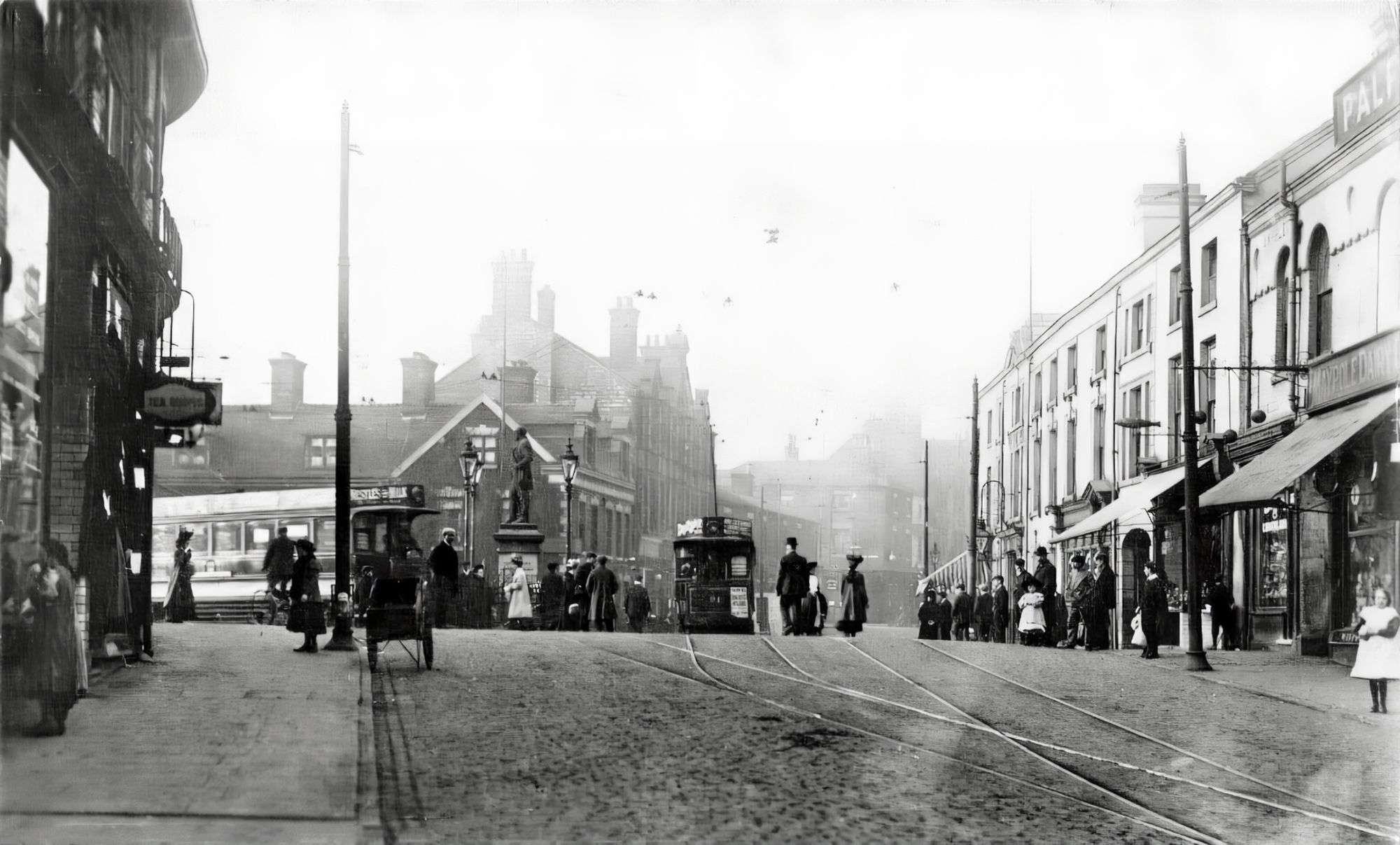
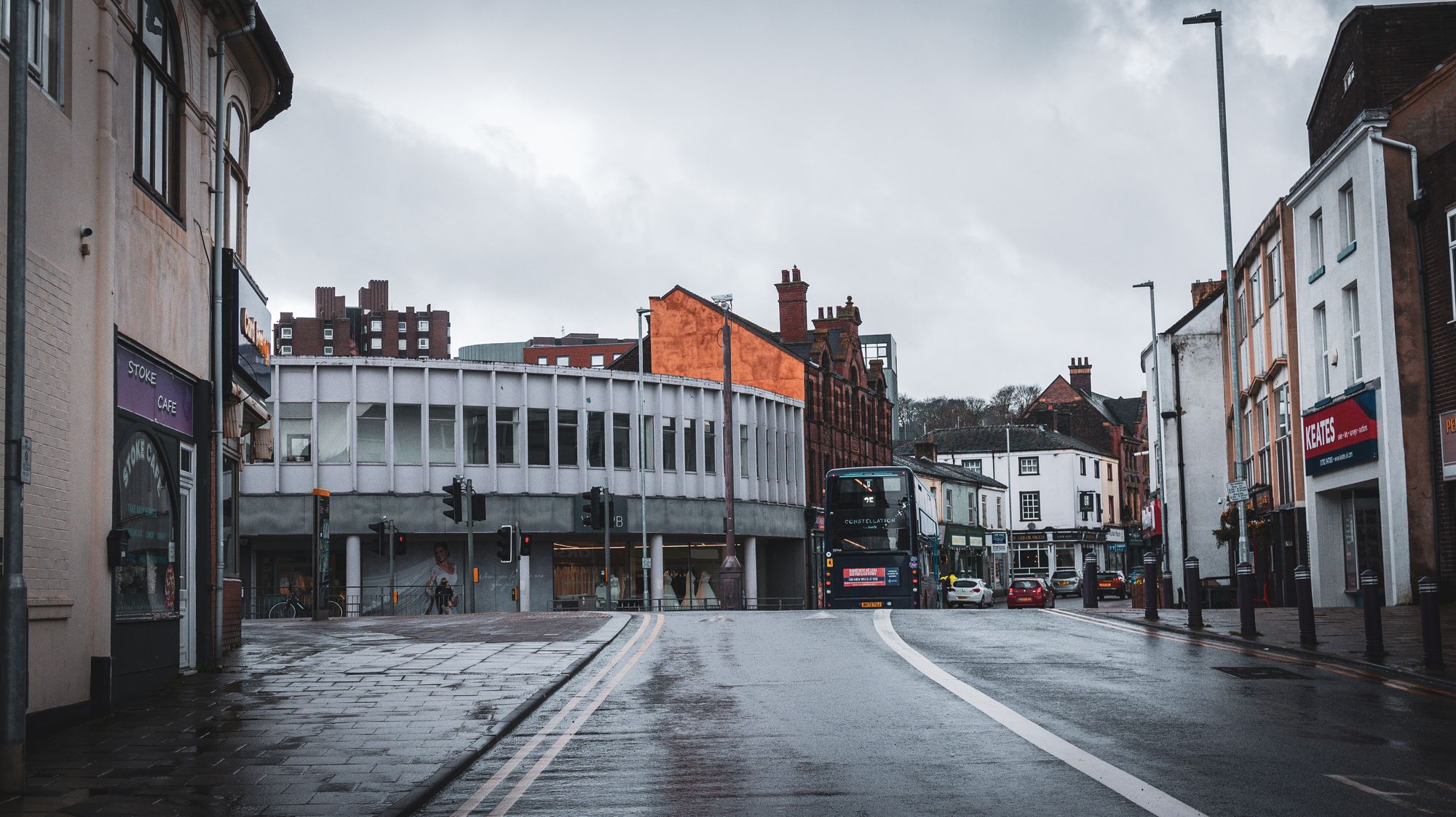
Looking the other way across Campbell Place now and you can see just how different this scene is. That horrible modern building is just awful and I have no idea who designed it but they must have been blind. Also, note the tram is now replaced by a bus and a bus lane.
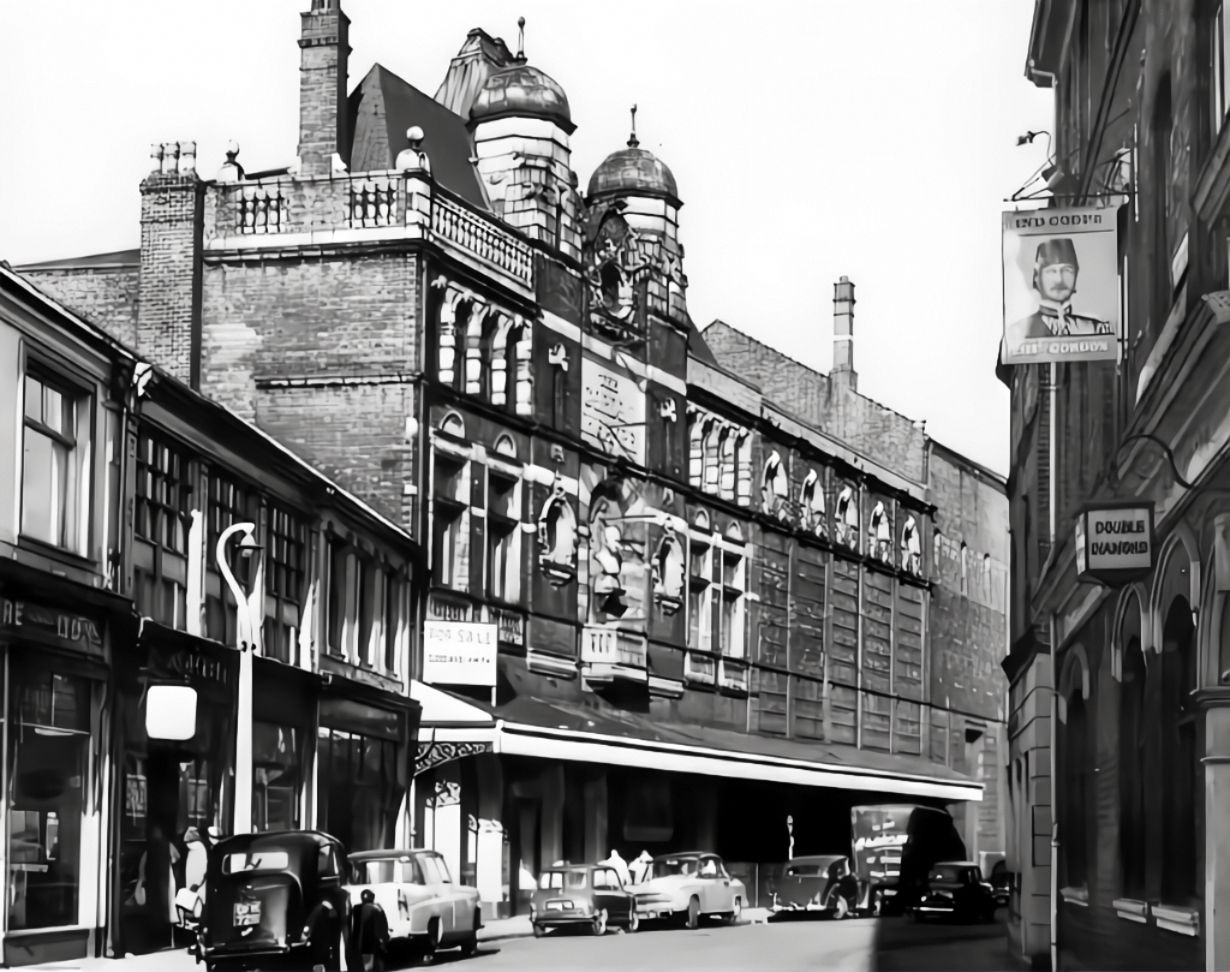
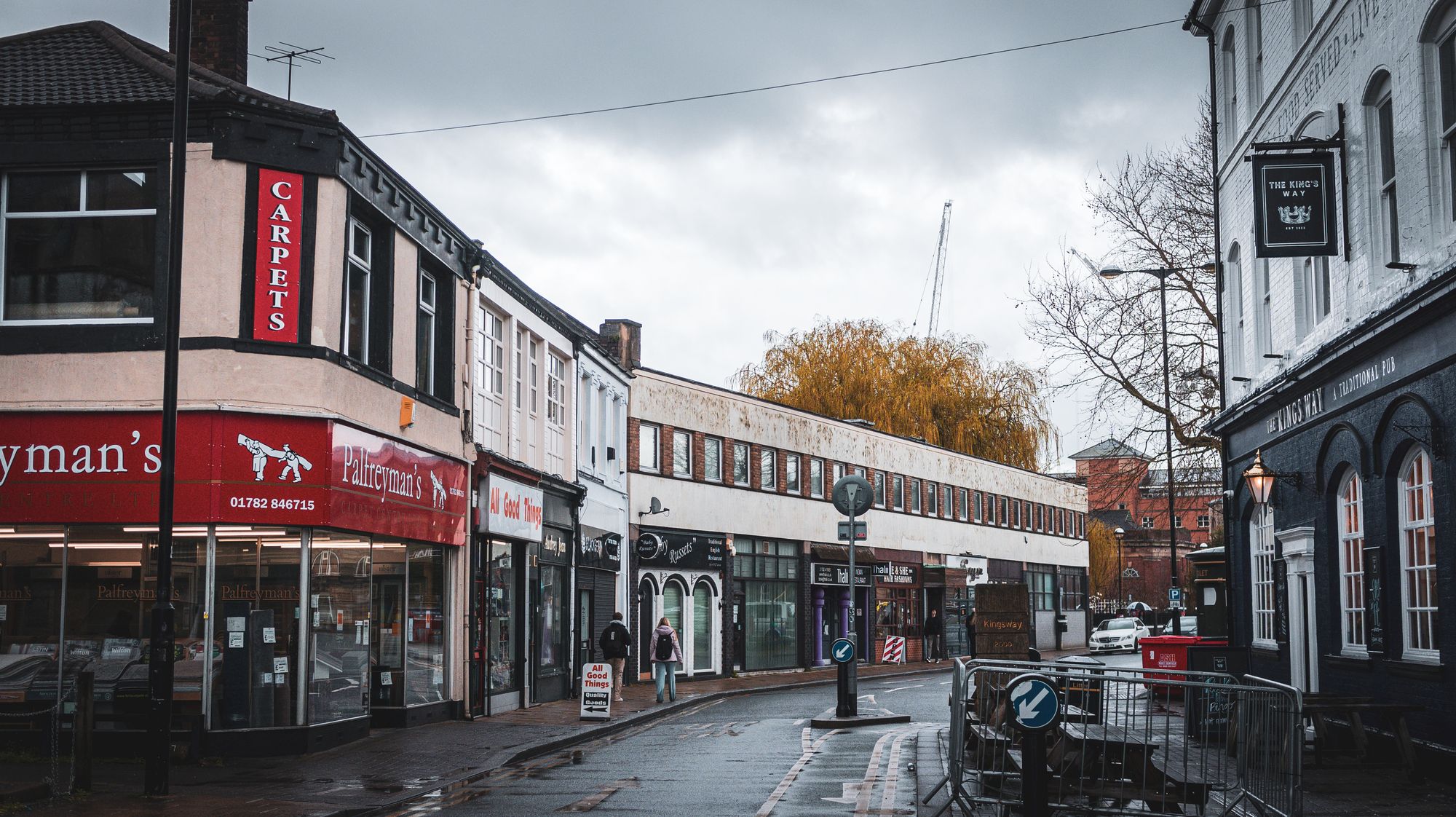
A magnificent building is missing in this photograph. The Hippodrome Variety Theatre was built in 1919 and was a trendy venue. It became the Gordon Theatre & Opera House and then the Gaumont Cinema. It was unfortunately demolished in the 1960w to make way for a shopping complex that is still there today and is horrible.
Clearly, the planning developers in the 1960s had some creativity issues or lack thereof.
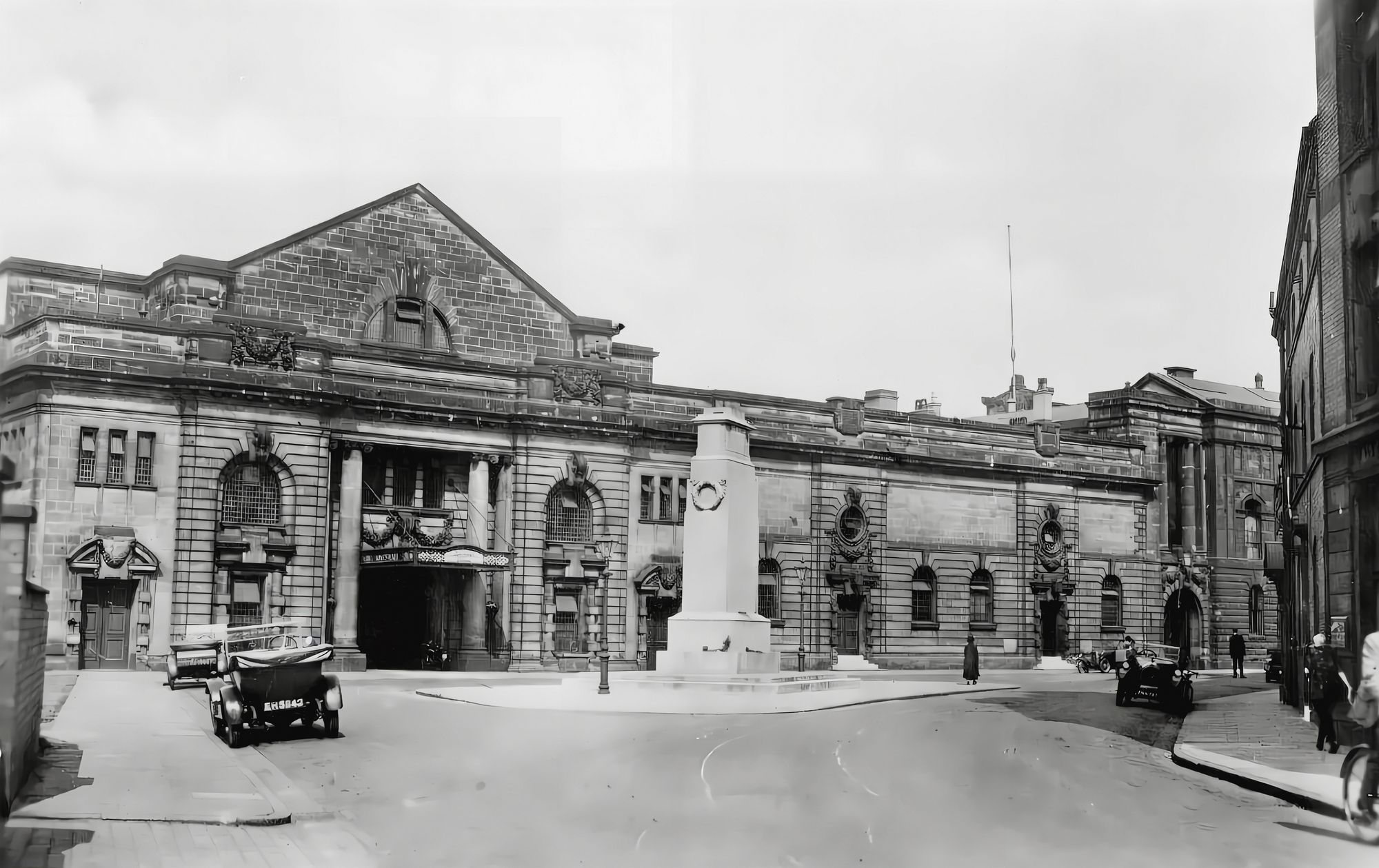
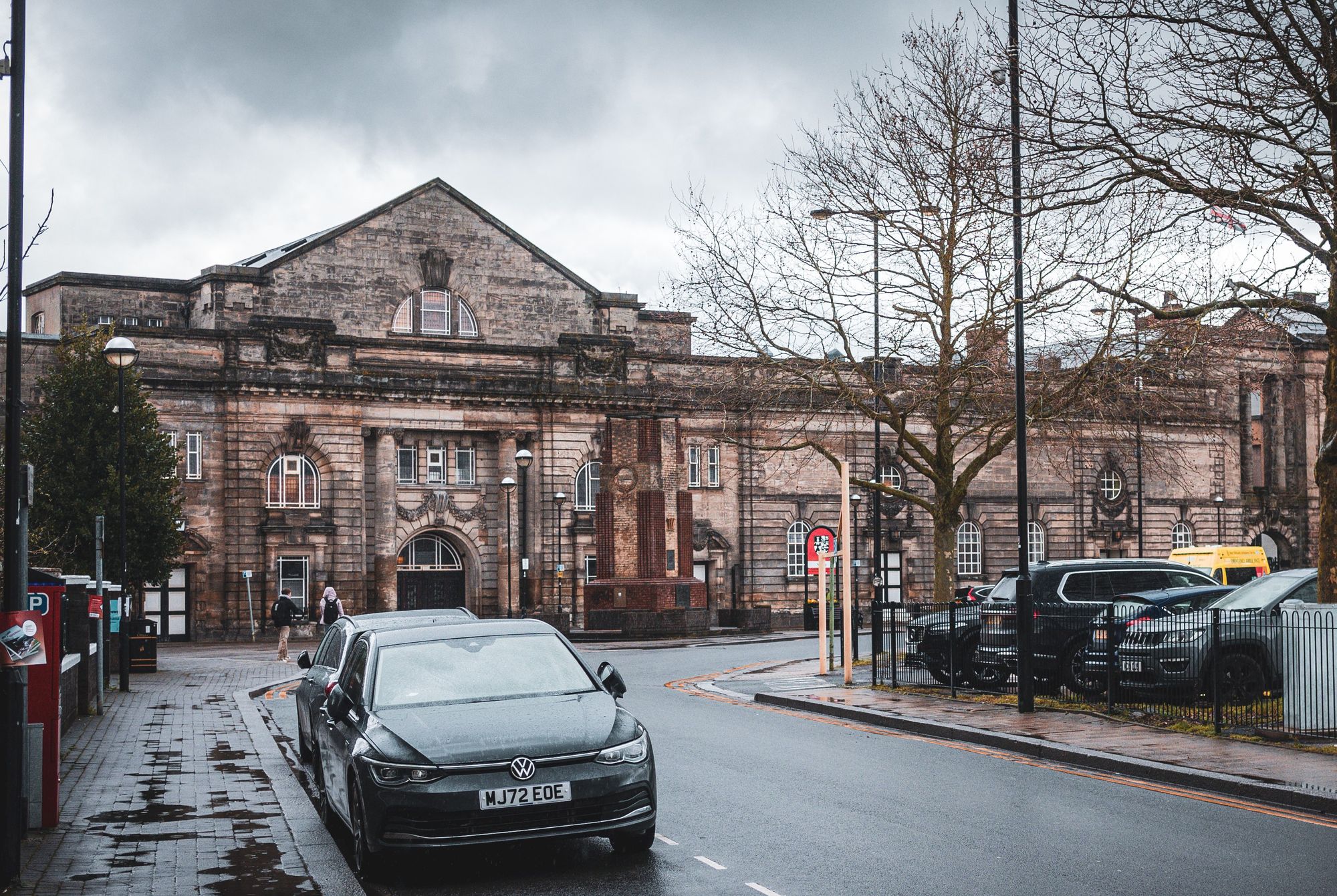
The King's Hall is a set of assembly rooms that were built behind the main town hall in 1911 by Thomas Wallis and James Albert Bowden. It is still used today for events, shows, bands and more.
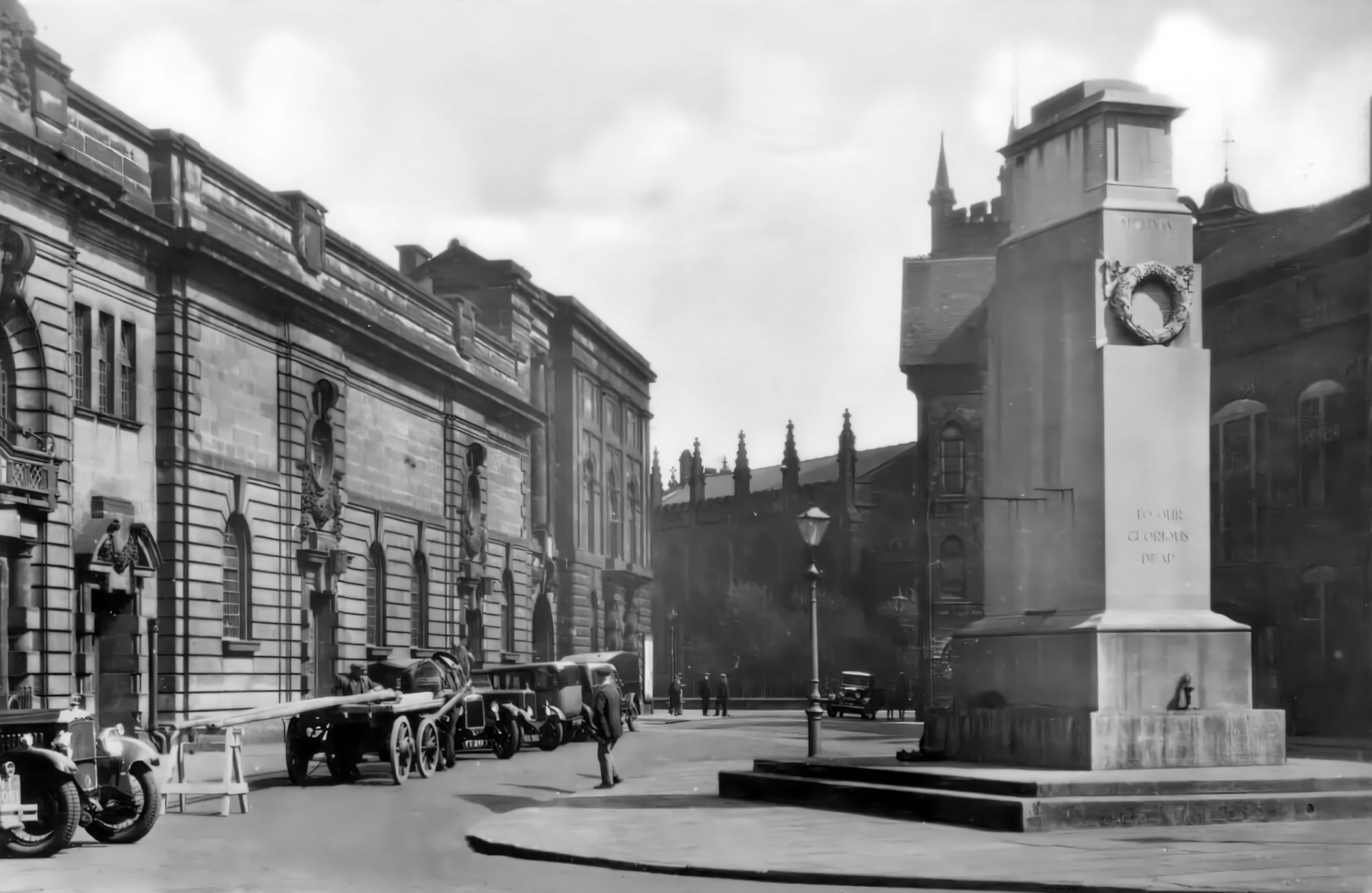
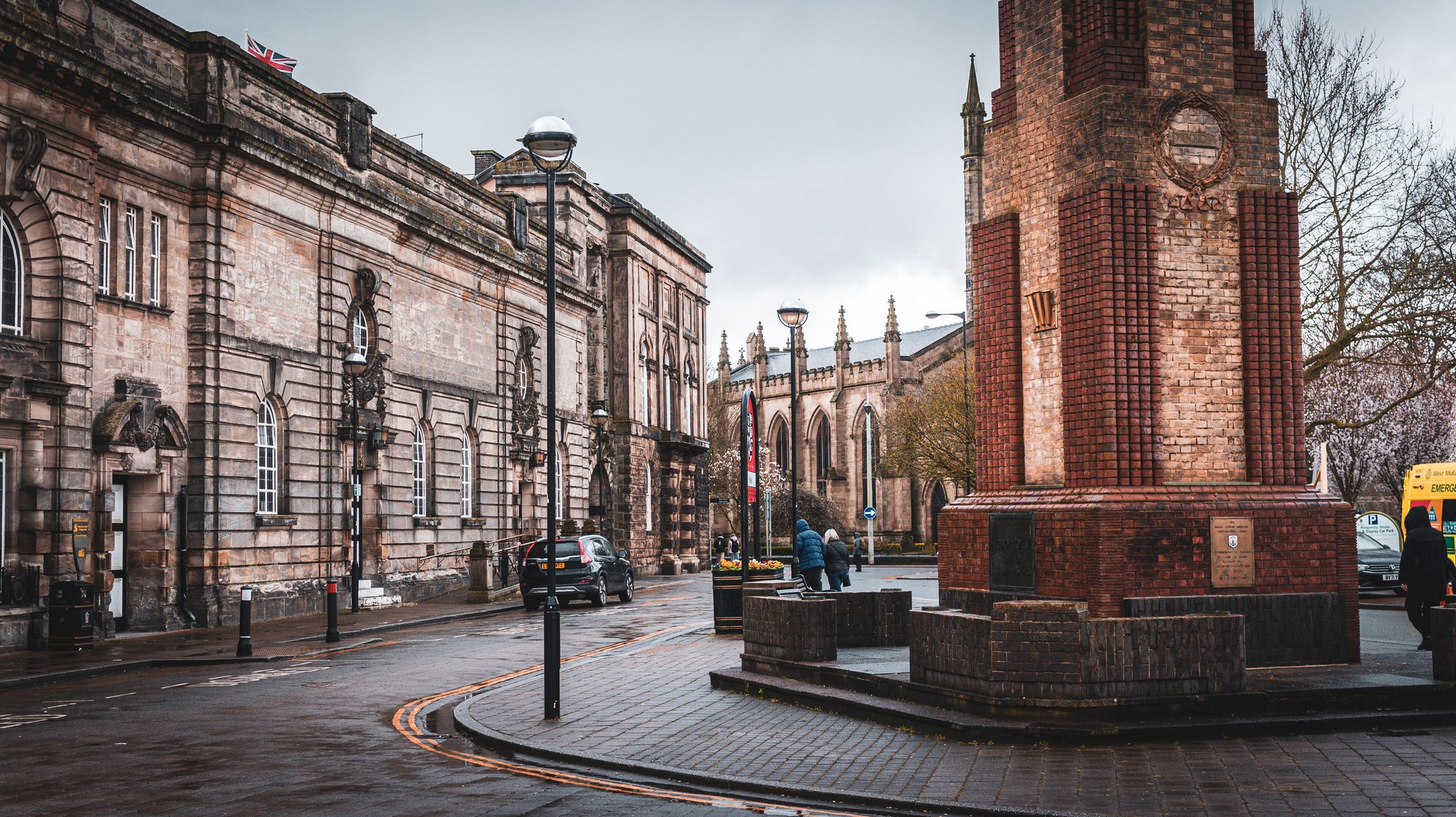
The original cenotaph was made of Portland stone and was a replica of the Whitehall cenotaph and was erected in 1920 and paid for by public subscription.
The new cenotaph was built in 1938 and commemorates the lives lost in Korea, WWI and WW2.
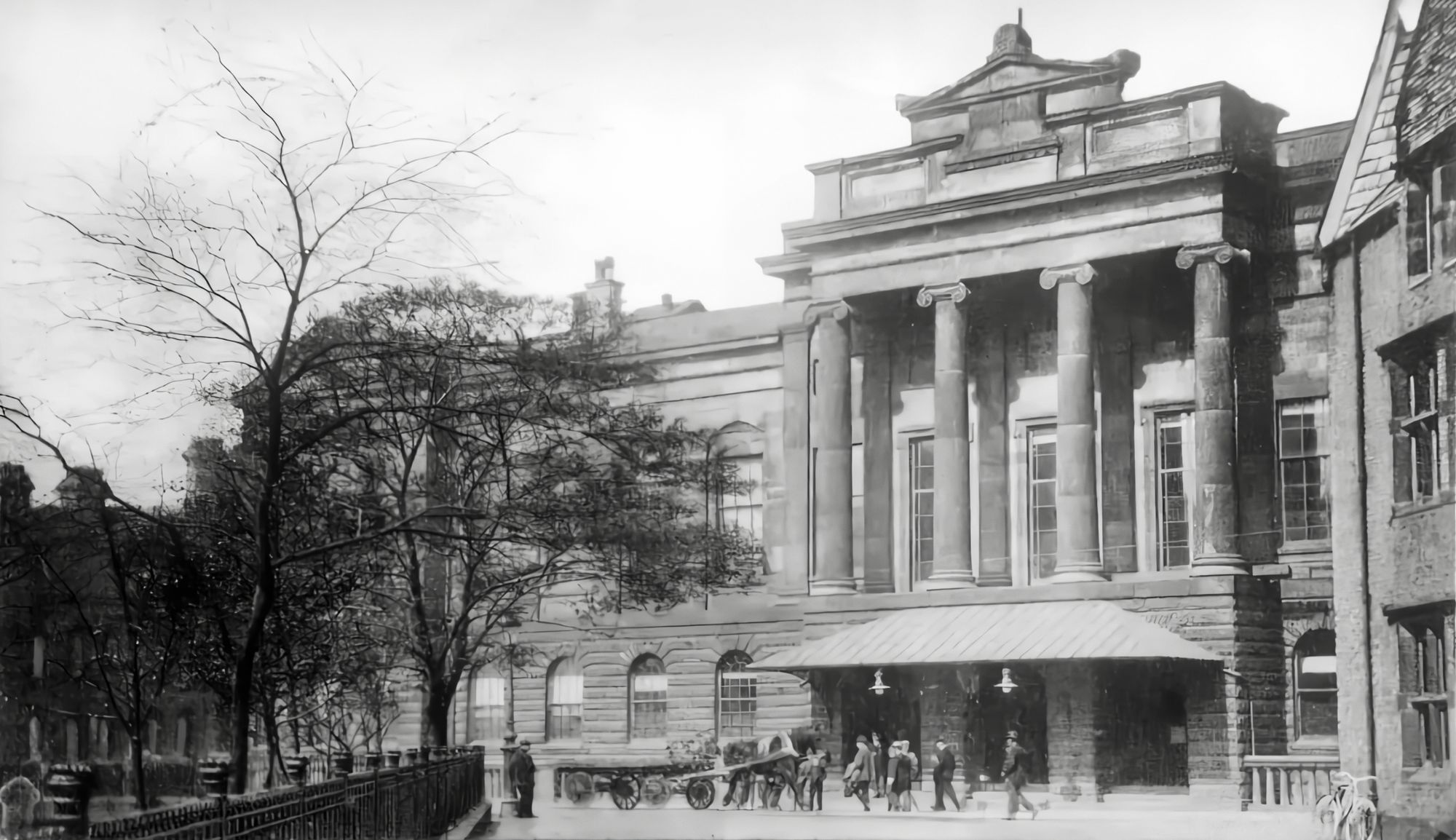
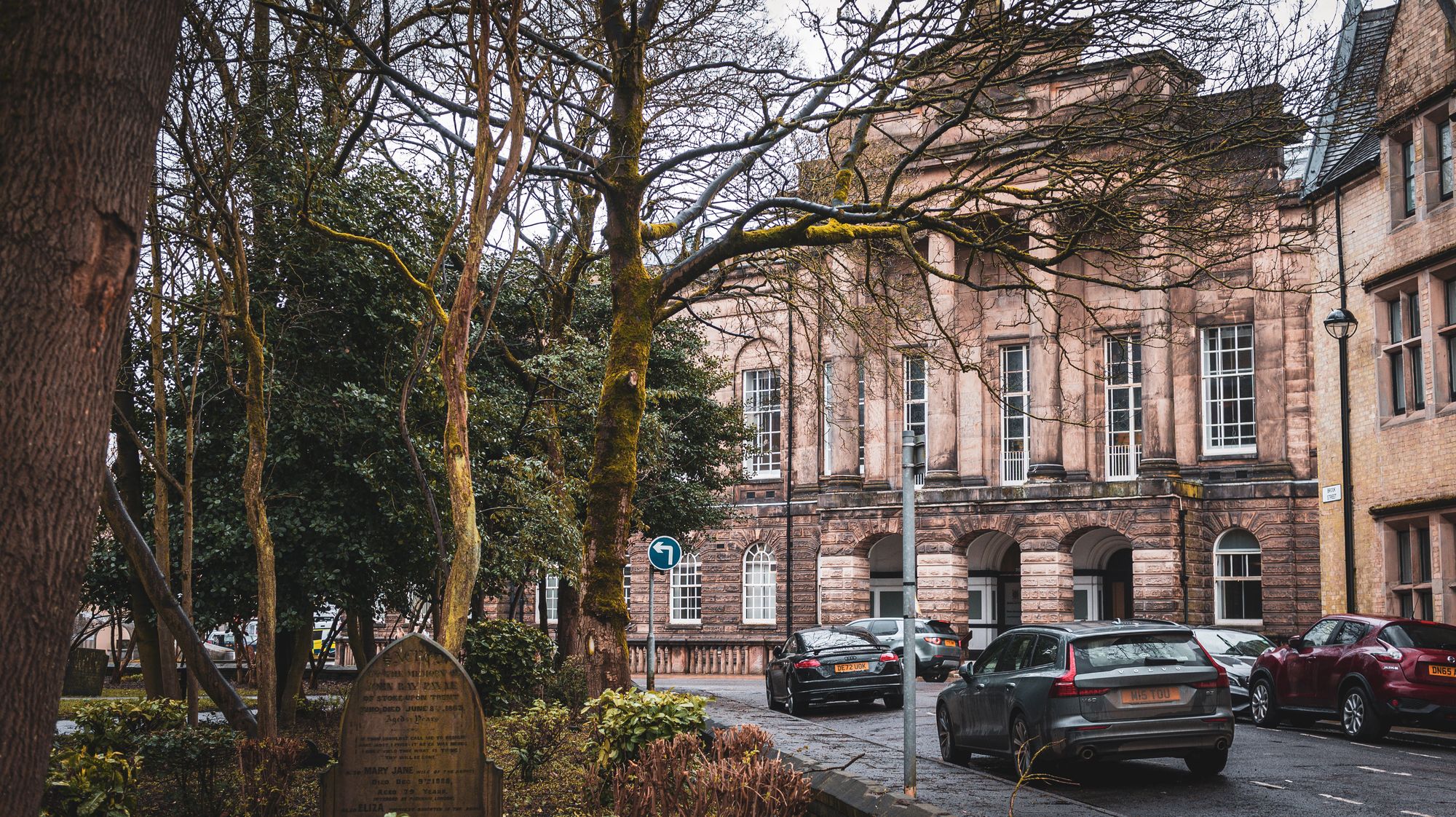
The town hall was built in 1834 and isn't the first town hall to stand in Stoke. It has been extended many times right up to 1992 when a huge modern civic centre was added. It has been used as a market hall, a public hall, council chambers, a mayor's parlour, and municipal offices and was used as the seat of Stoke-on-Trent council for a long time, until they wasted lots of money (£45 million) moving to another building, even though they had this perfectly good one sitting here.
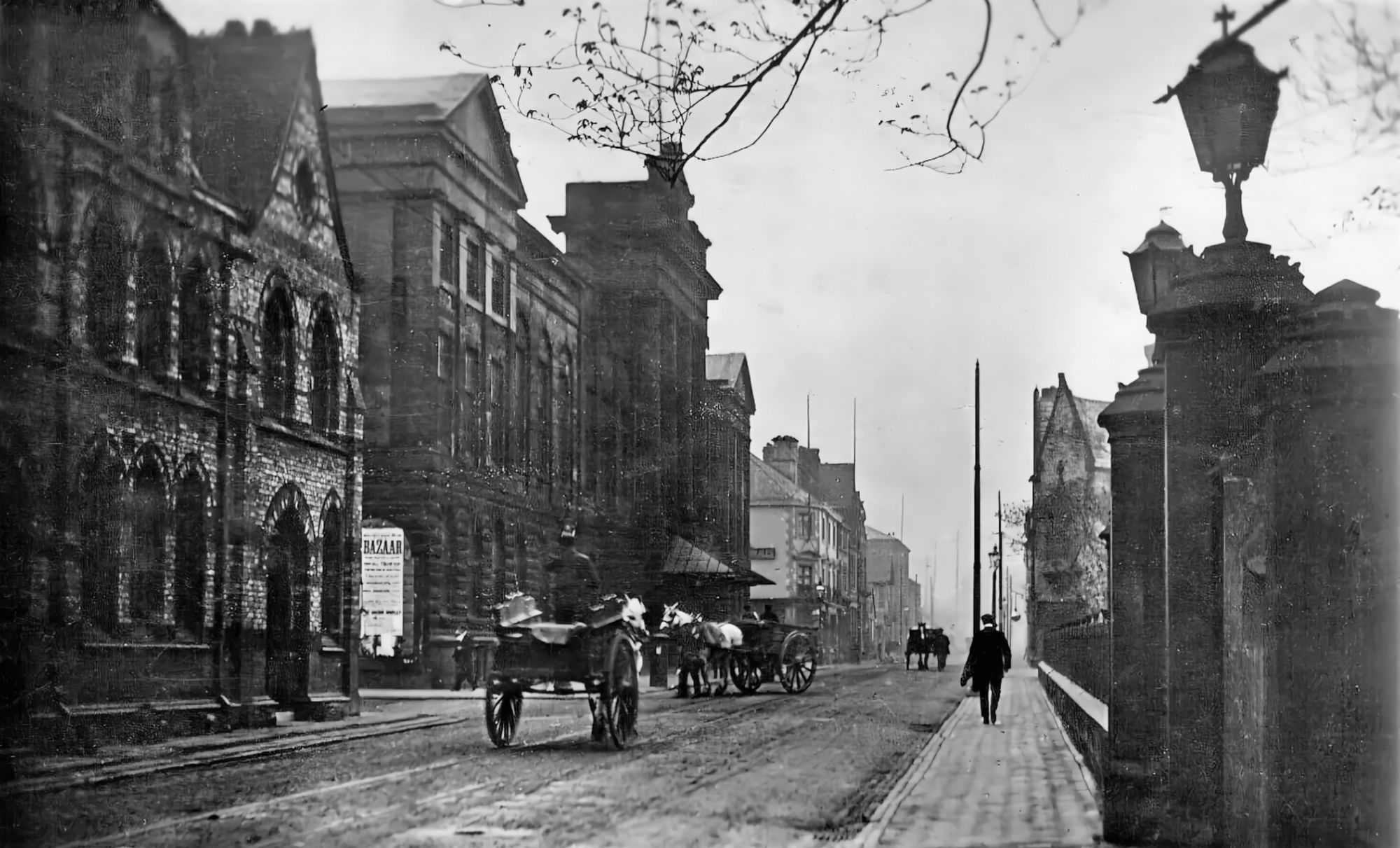
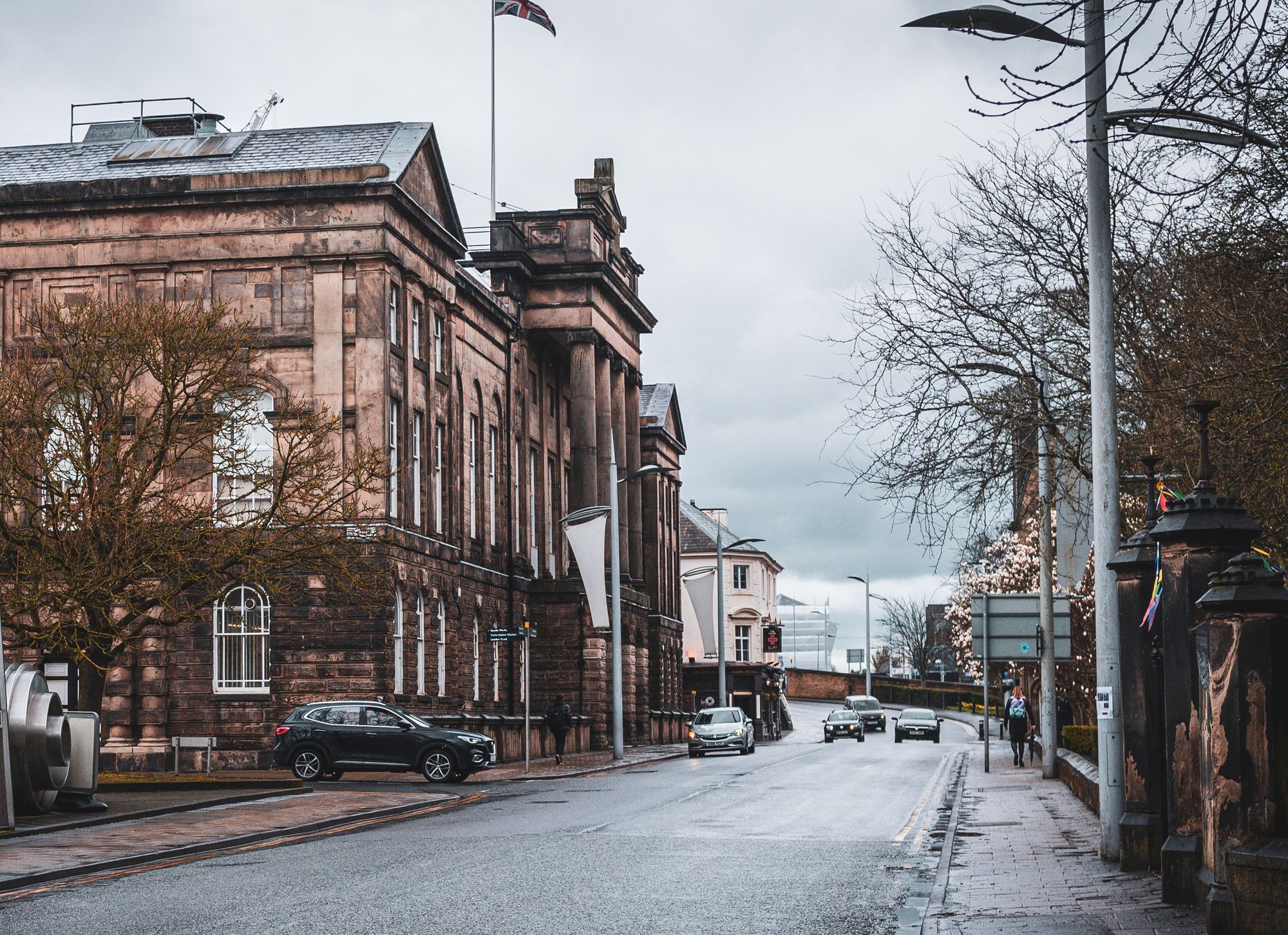
A great view along Glebe Street shows the town hall and the buildings in the distance that were demolished when the a500 was built. Stoke lost an awful lot of beautiful and important buildings to the a500.

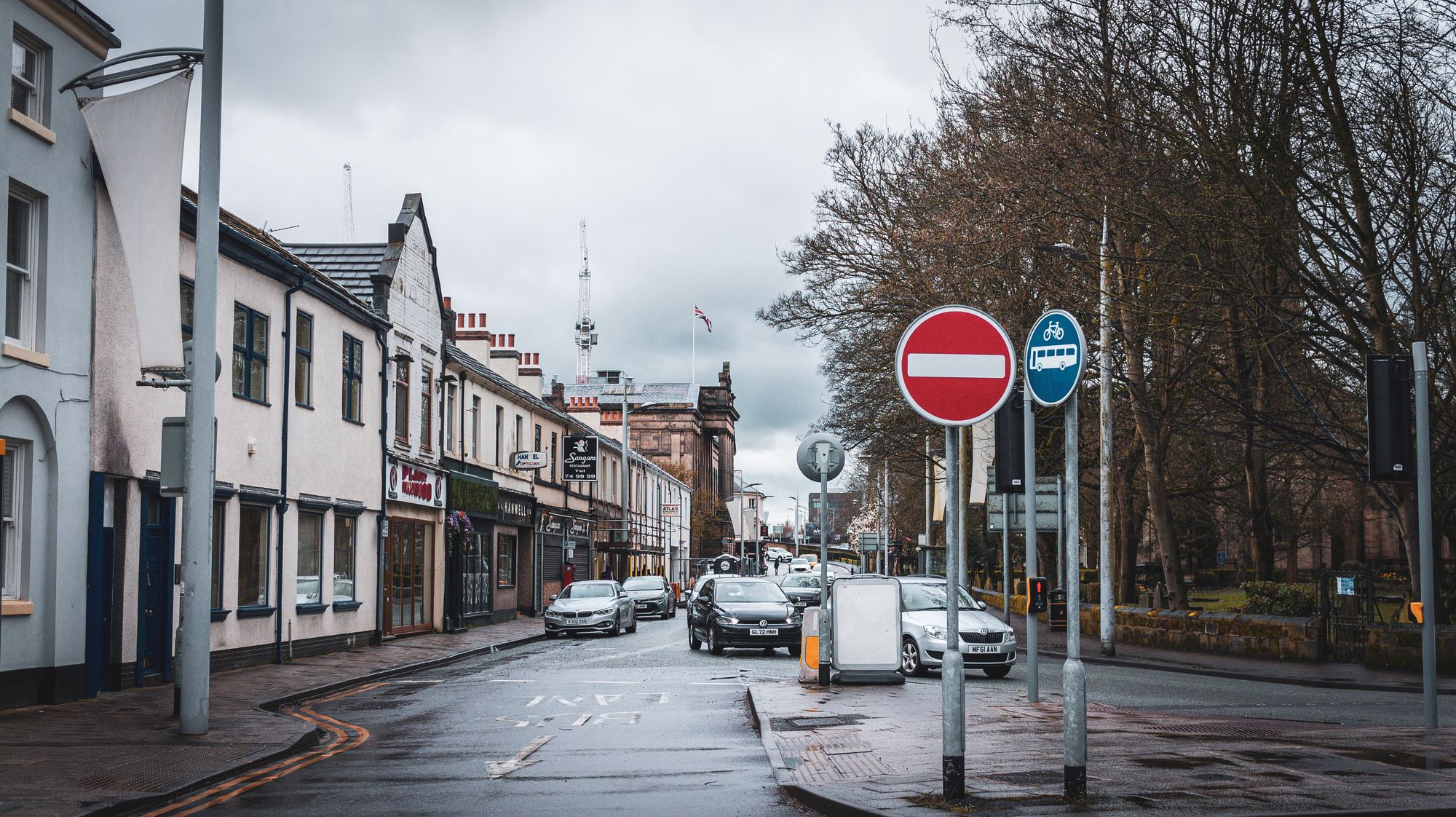
This view from further along Glebe Street shows another row of shops and an unobscured view of St Peter ad Vincula, better known as Stoke Minster, which is the Civic church for Stoke-on-Trent. Unfortunately, this road isn't really used for shopping anymore as it seems to just be a throughway from the a500.
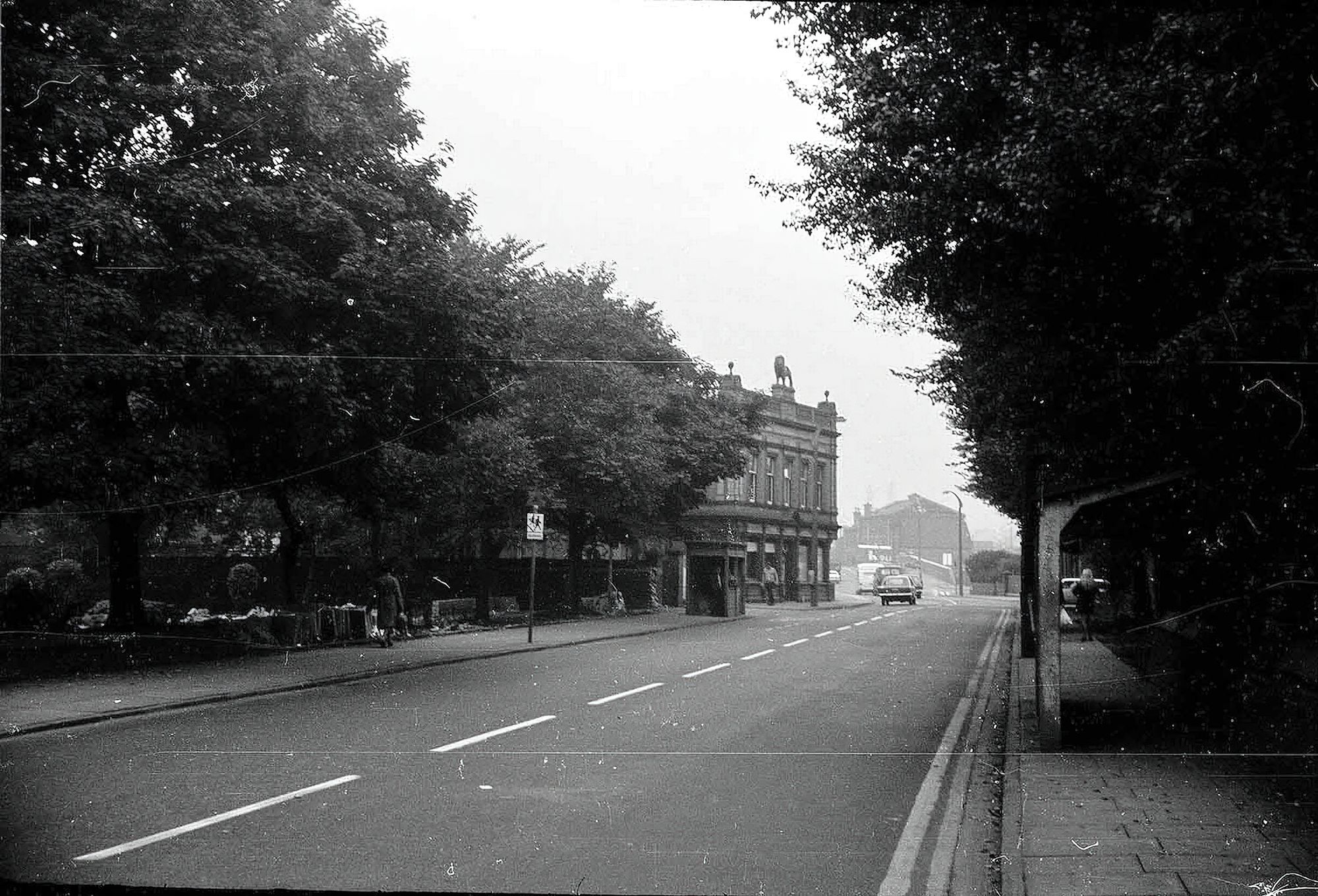
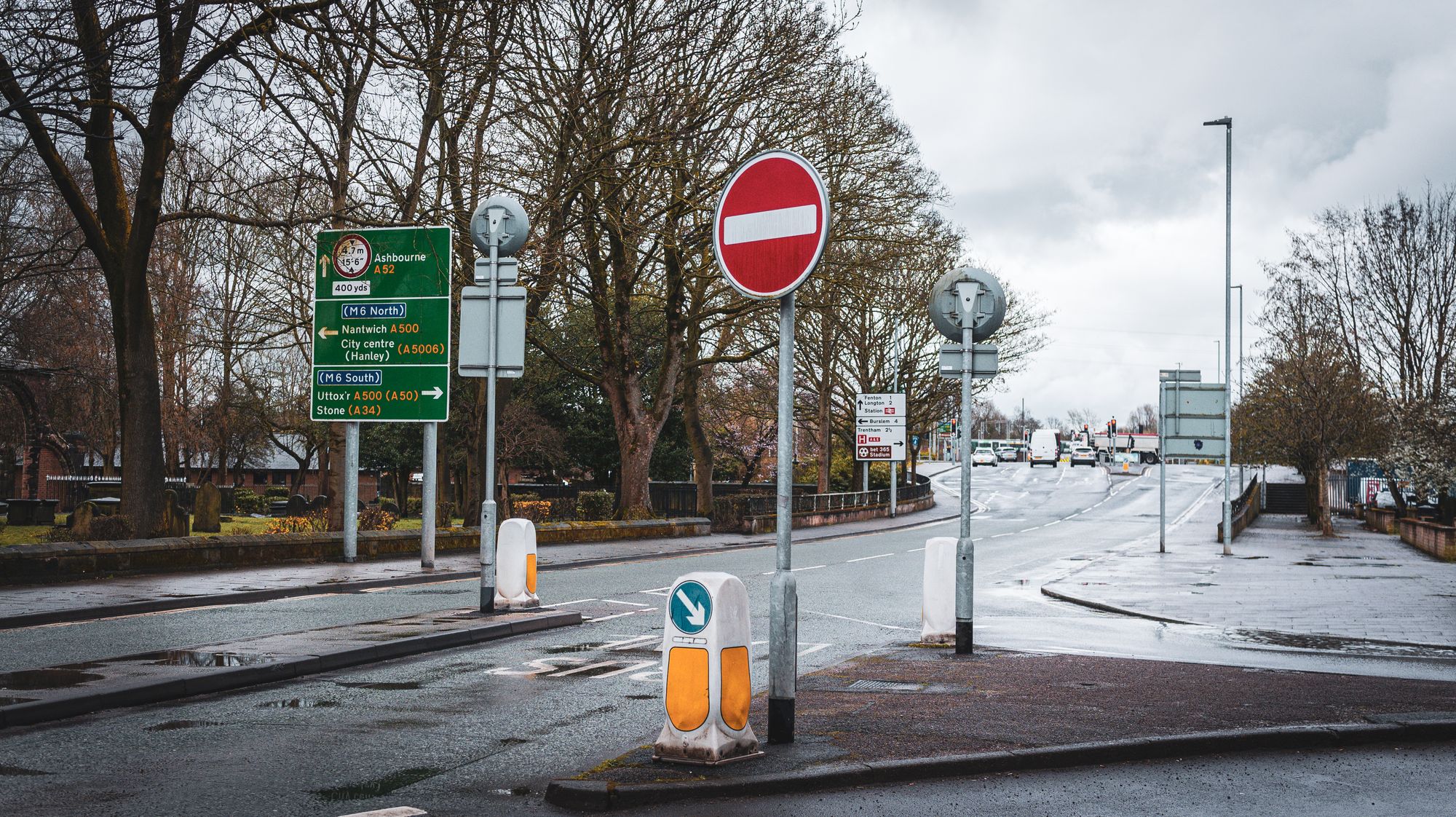
A famous victim of the a500 in the 1970s was the Red Lion which stood in the churchyard of Stoke Minster. However, it is famous because the facade was taken down brick by brick and rebuilt at the Crich Tramway Museum in Derbyshire at a cost of £500'000!
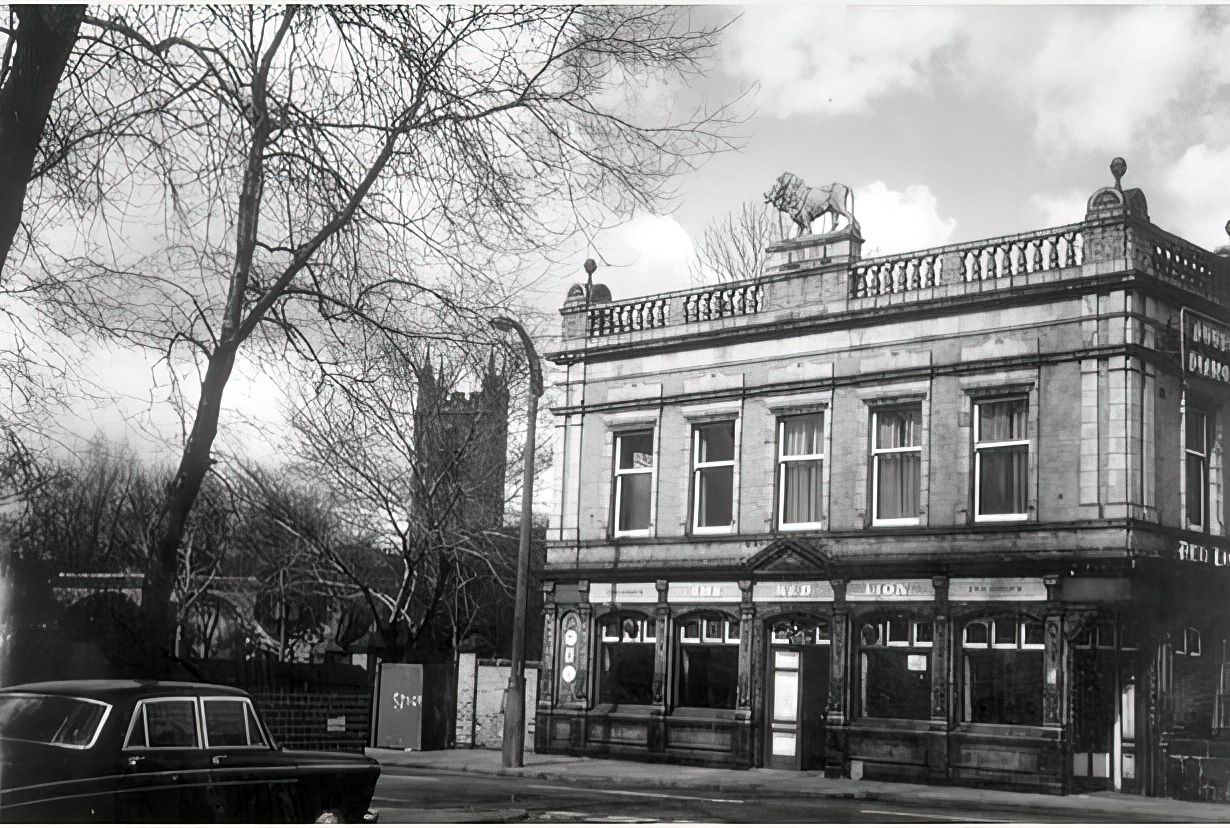
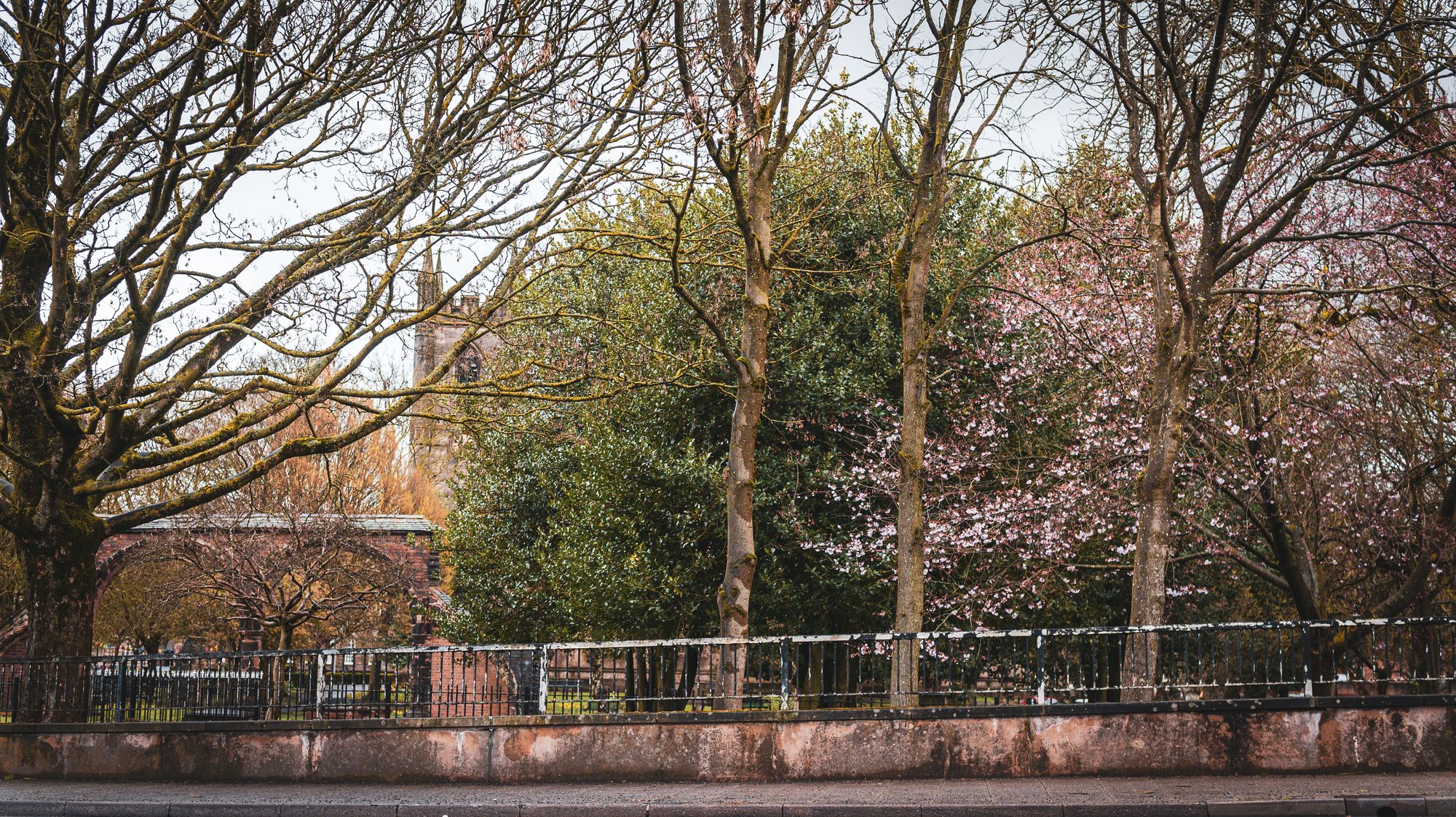
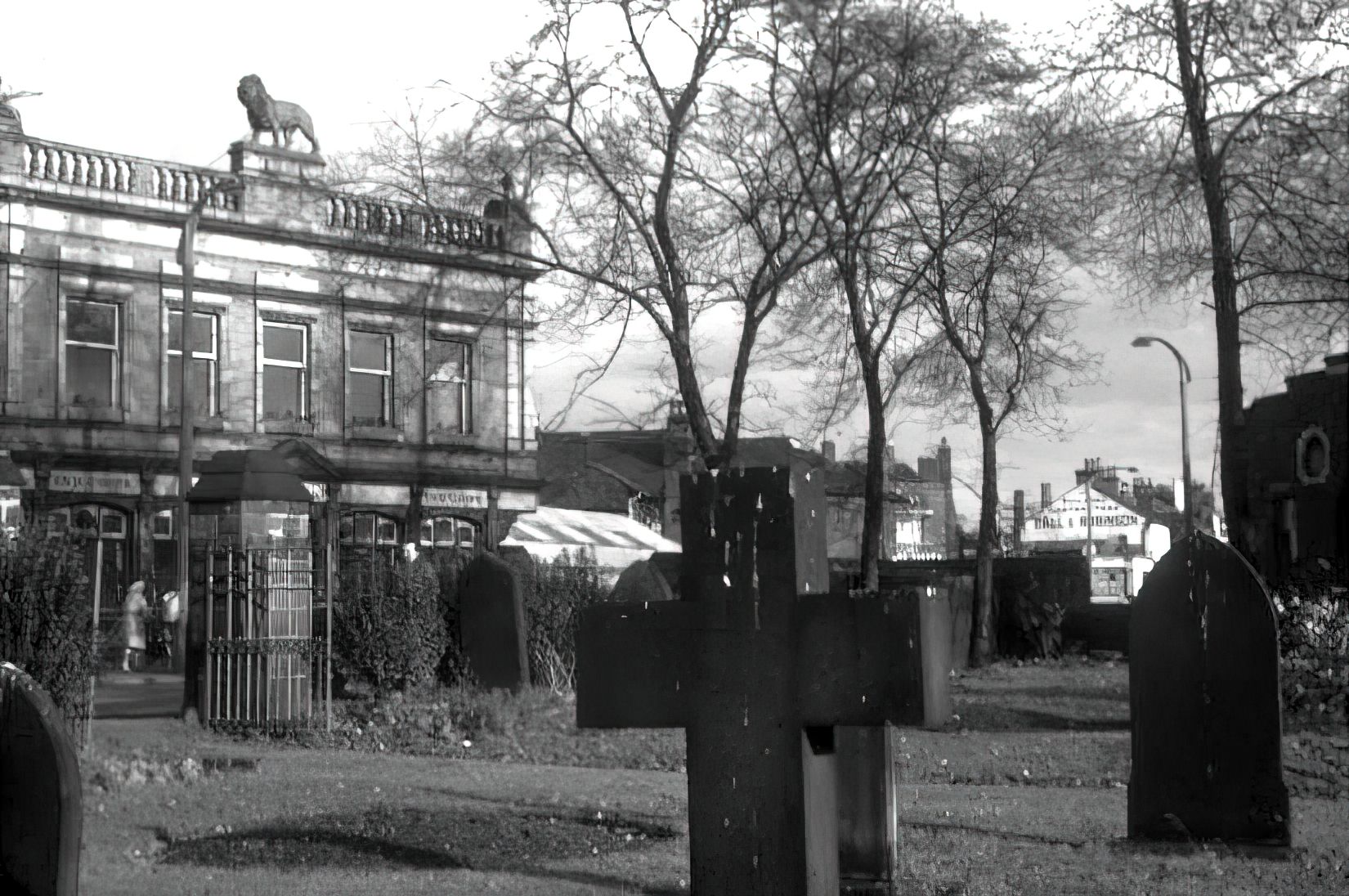
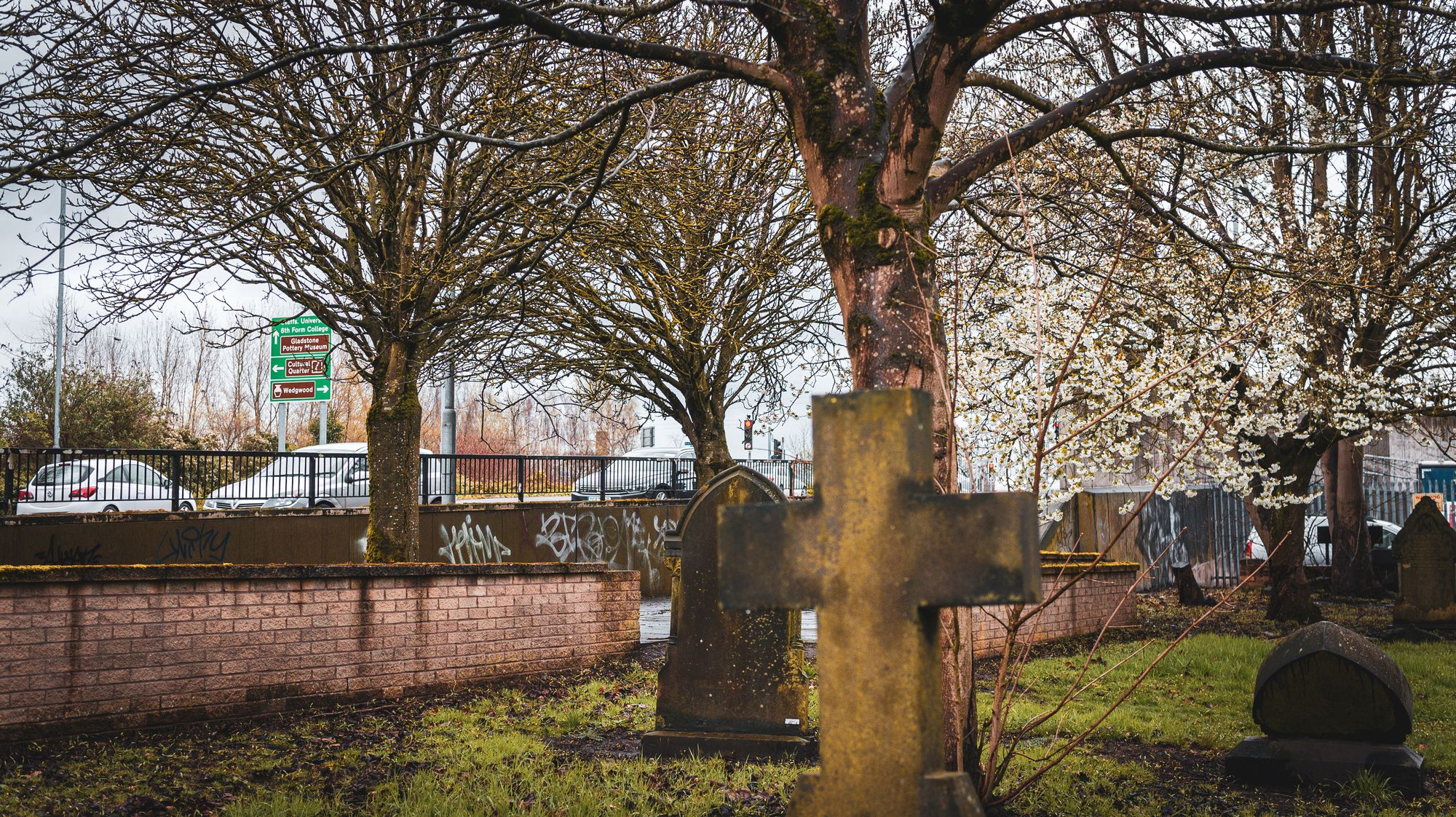
The Red Lion wasn't the first inn to be built on the site. It was opposite the Potteries Electric Traction Tramway Depot which became PMT buses and so was always busy with their staff.
The facade, as you can still see at the museum, was truly beautiful and was made of terracotta and tiles.
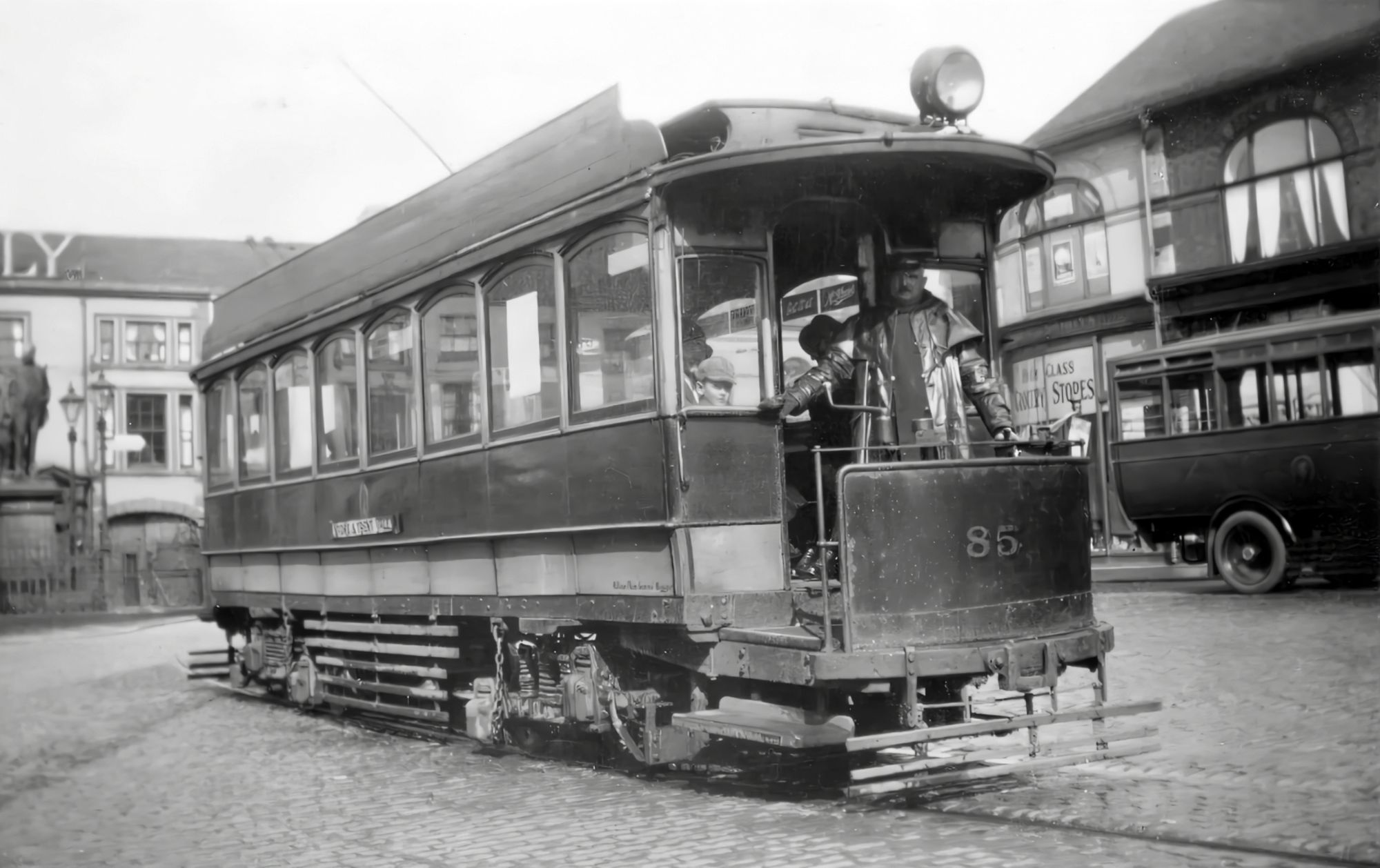
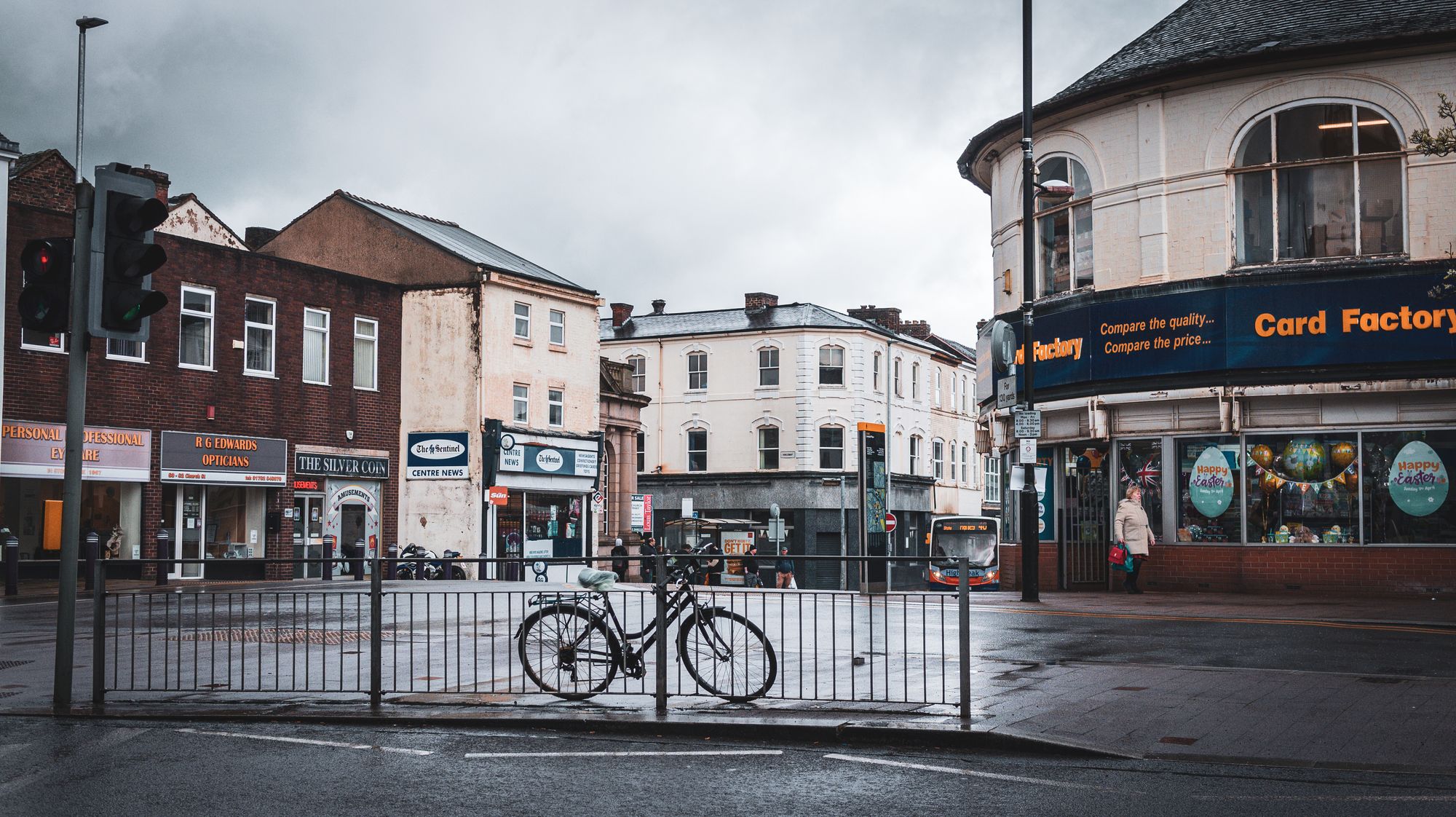
Coming back up into Cambell Place, we can see the number 85 tram making its way through the town, with an old charabanc (bus) in the background.
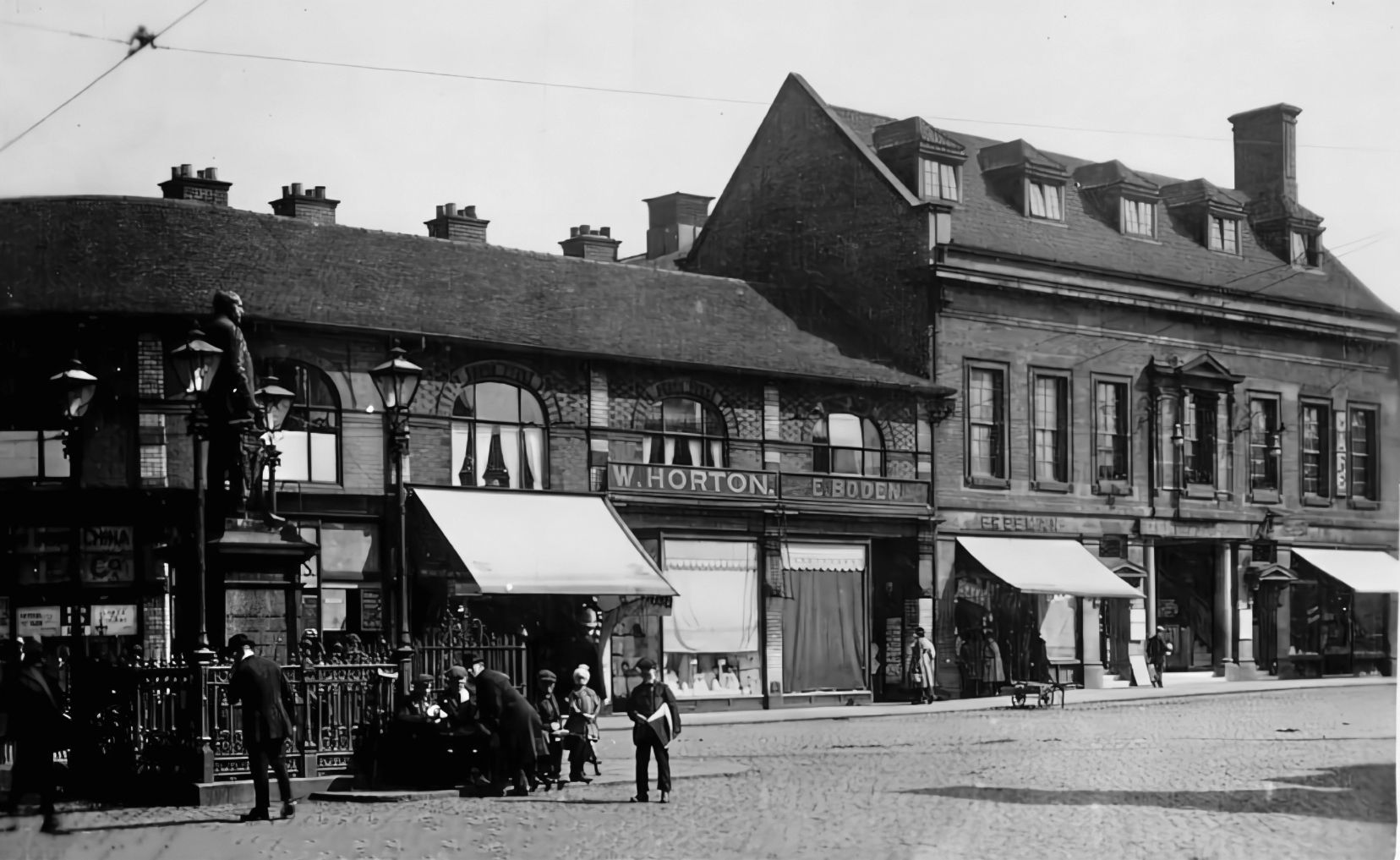
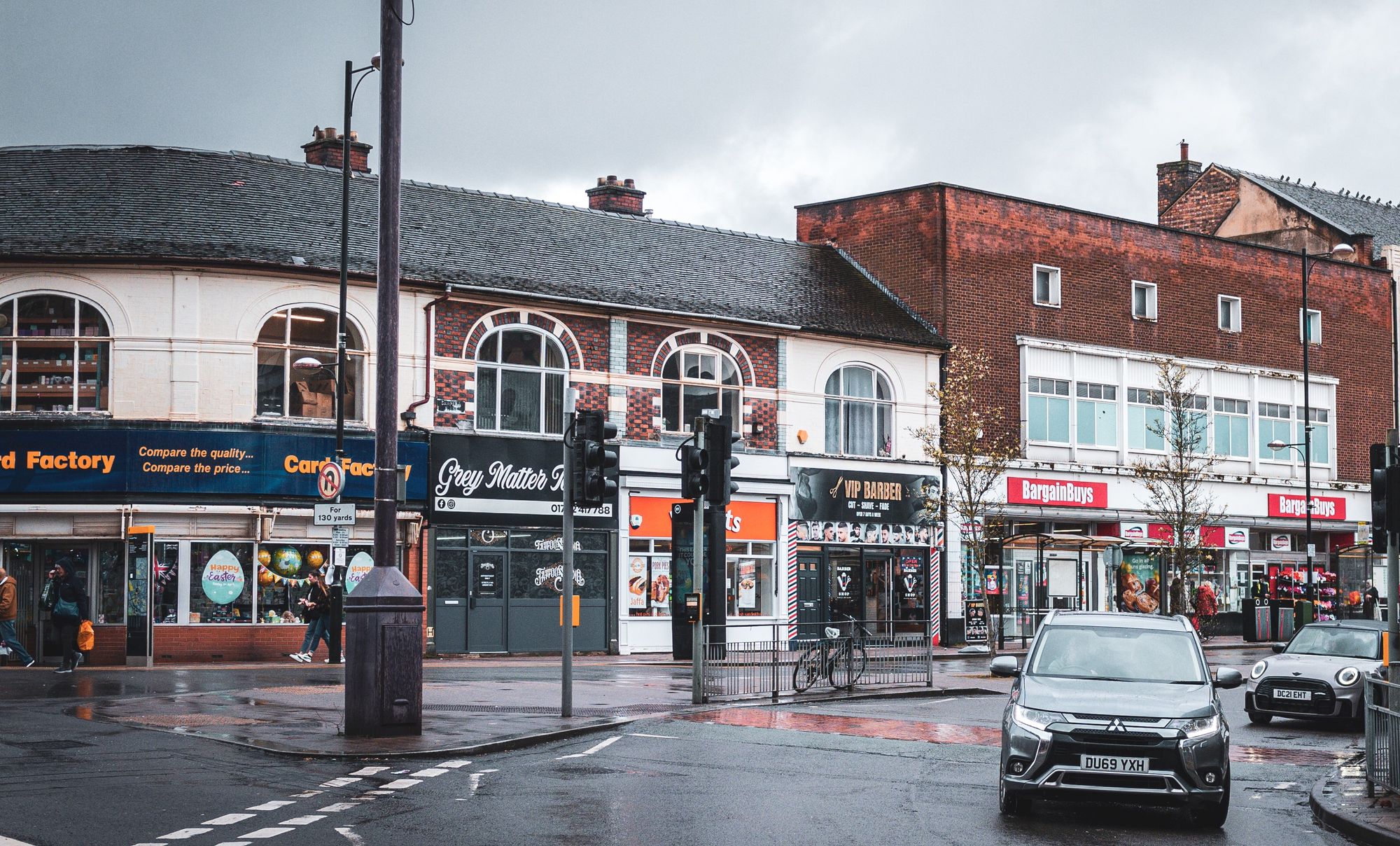

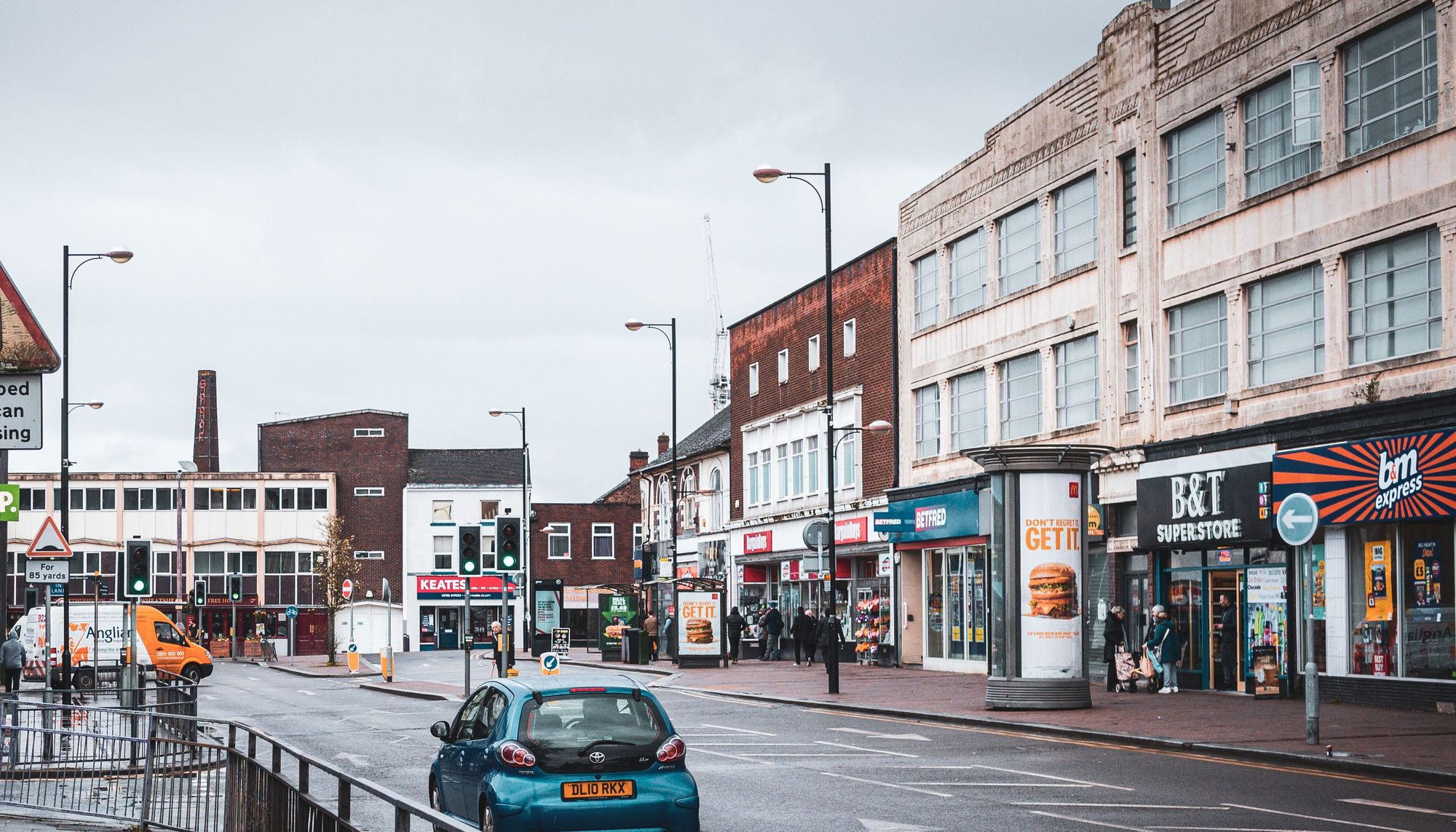
This view of Campbell Place shows the Majestic Cinema on the far right. Built-in 1914 it had seating for 800 in the stalls and 200 in the circle. There was a cafe and a ballroom as well as a cinema. In the 1930s it was expanded and could sit 1600.
Again this was demolished in 1959 and some unimaginative planners built the building that is there now that became the Woolworths store.
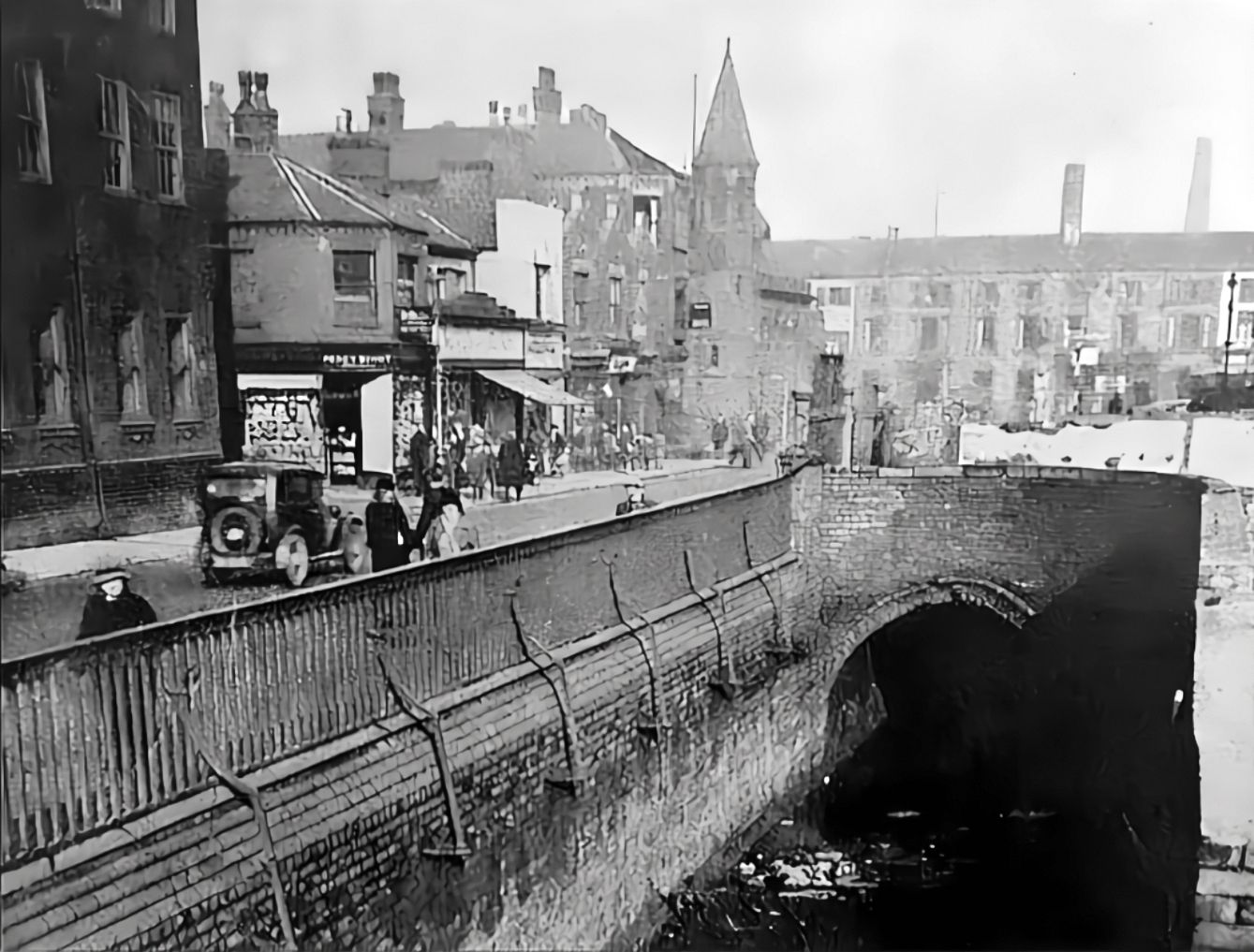
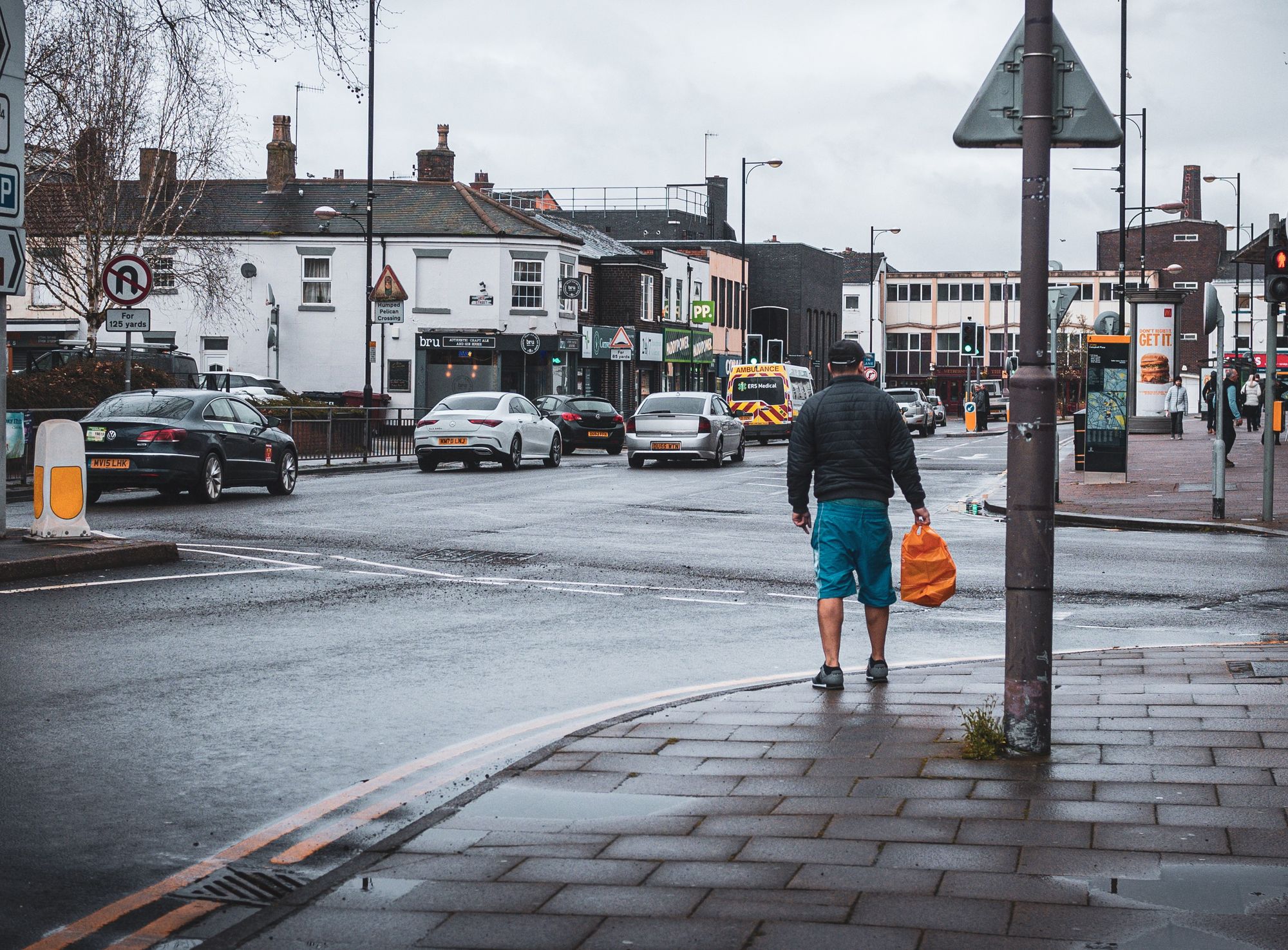
Many people don't realise that the Newcastle under Lyme canal used to run all the way along London Road, through Campbell Road and joined the main canal where the a500 is now to the Trent and Mersey canal. What many people also don't realise is that it is still there, underneath everything. In fact, if you walk to where the Minton state used to be, you can actually see the lump in the road where the tunnel is underneath. It was drained in 1939 and was actually used as an air raid shelter during WW2.
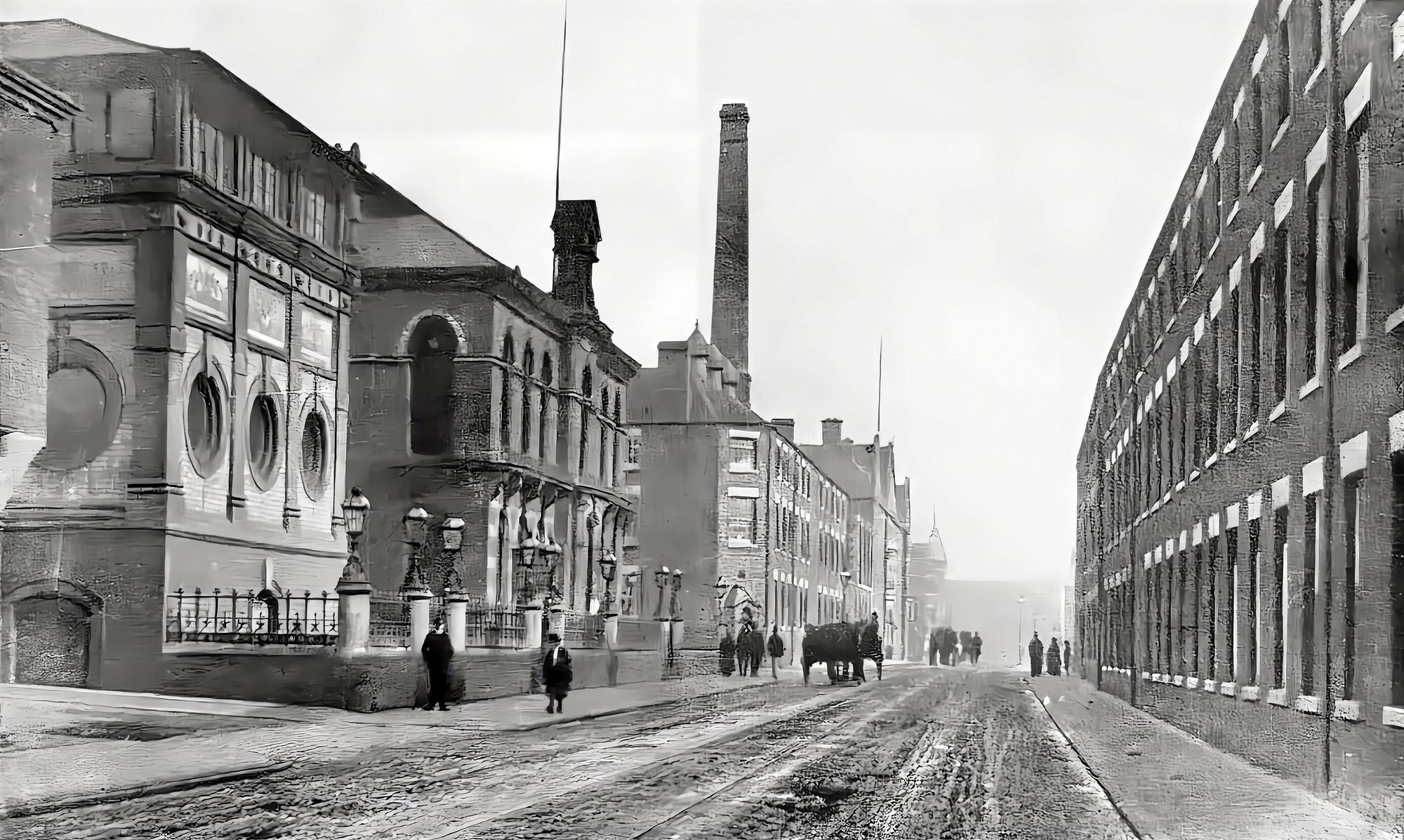
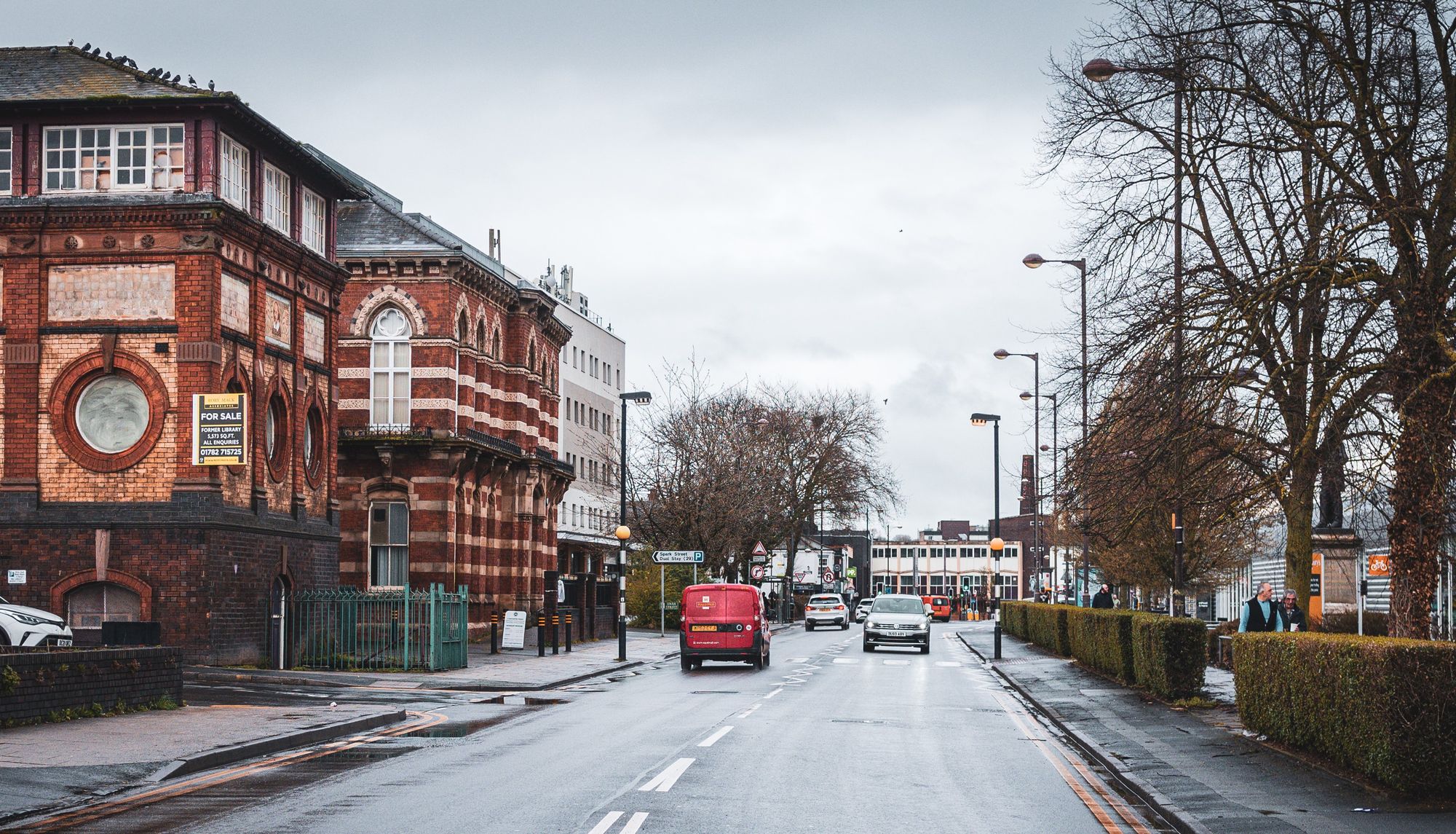
A lot has changed in this scene. On the left stand the School of Art and The Public Free Library, built in 1878 by the Minton family. The Minton factory has been replaced by Sainsbury's, and if you look at the new photo, you can see the Minton statue that used to stand in Campbell Place.
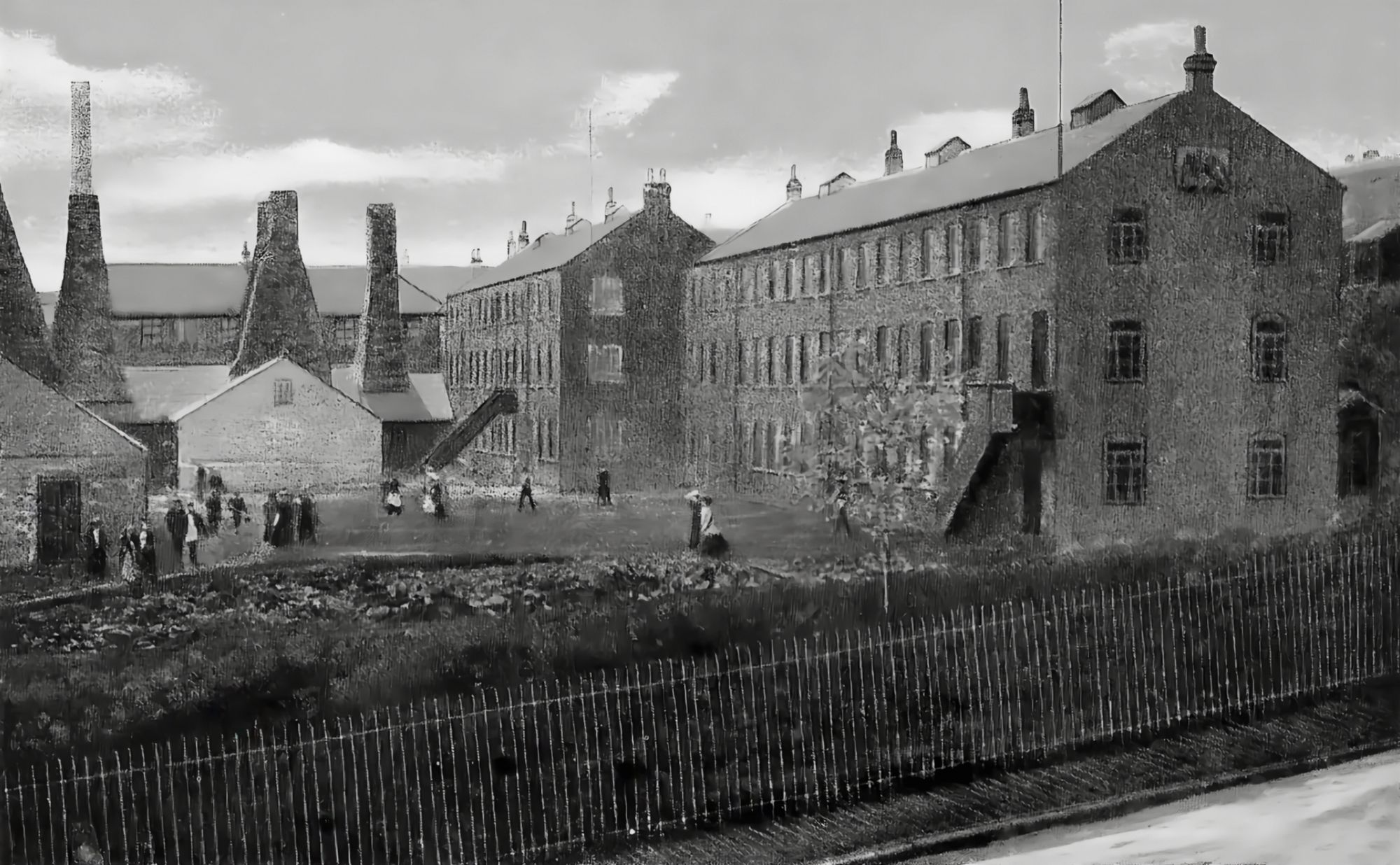
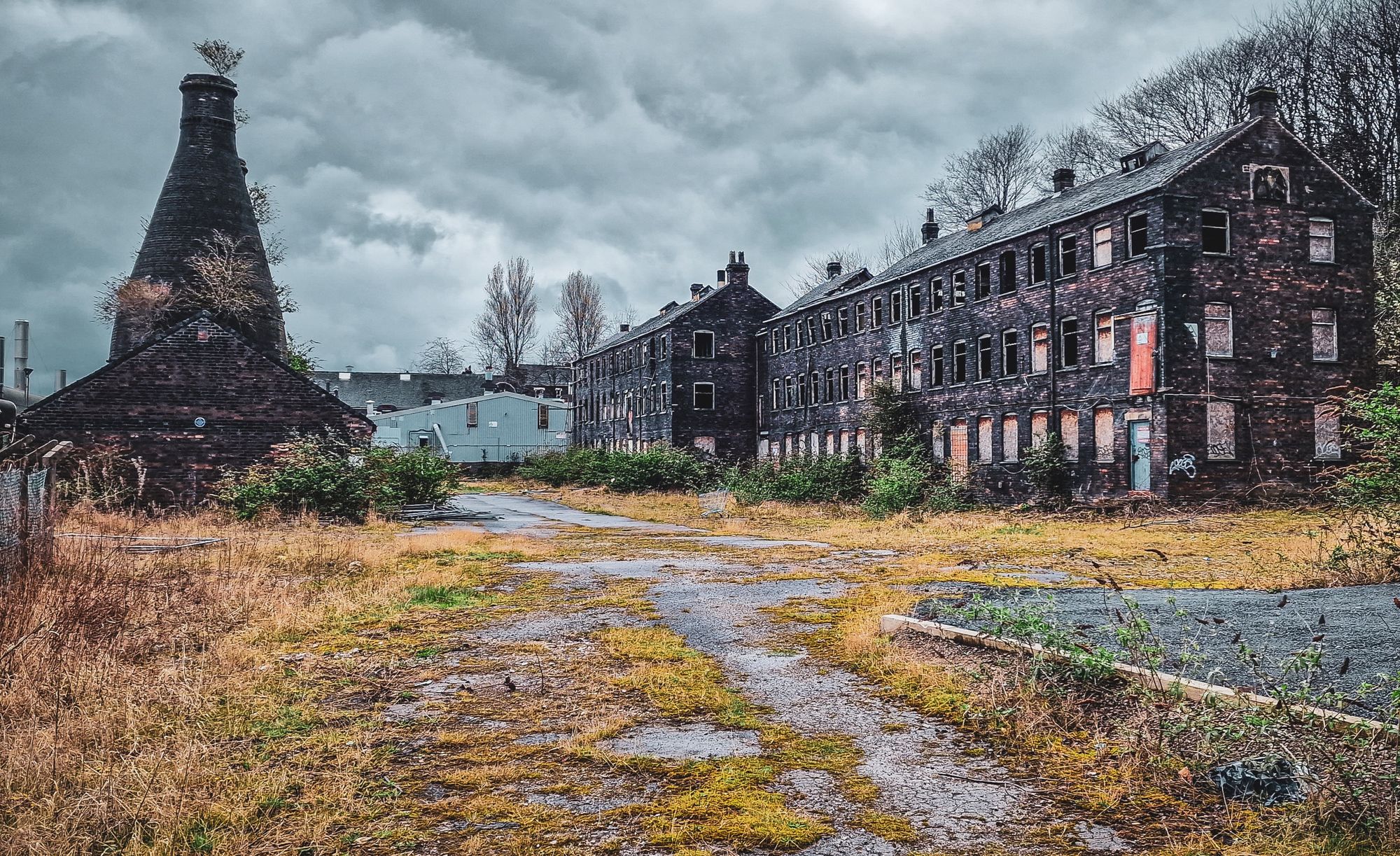
A sad sight indeed. This view is of Falcon Works at the top of Sturgess Street, which used to be Edward Street. The home of W H Goss ware from the 1870s, it was a working factory up until 2011 when it stood empty, getting more and more ruined with vandalism, fires and dereliction. It stands empty still today, with no plans for the site.
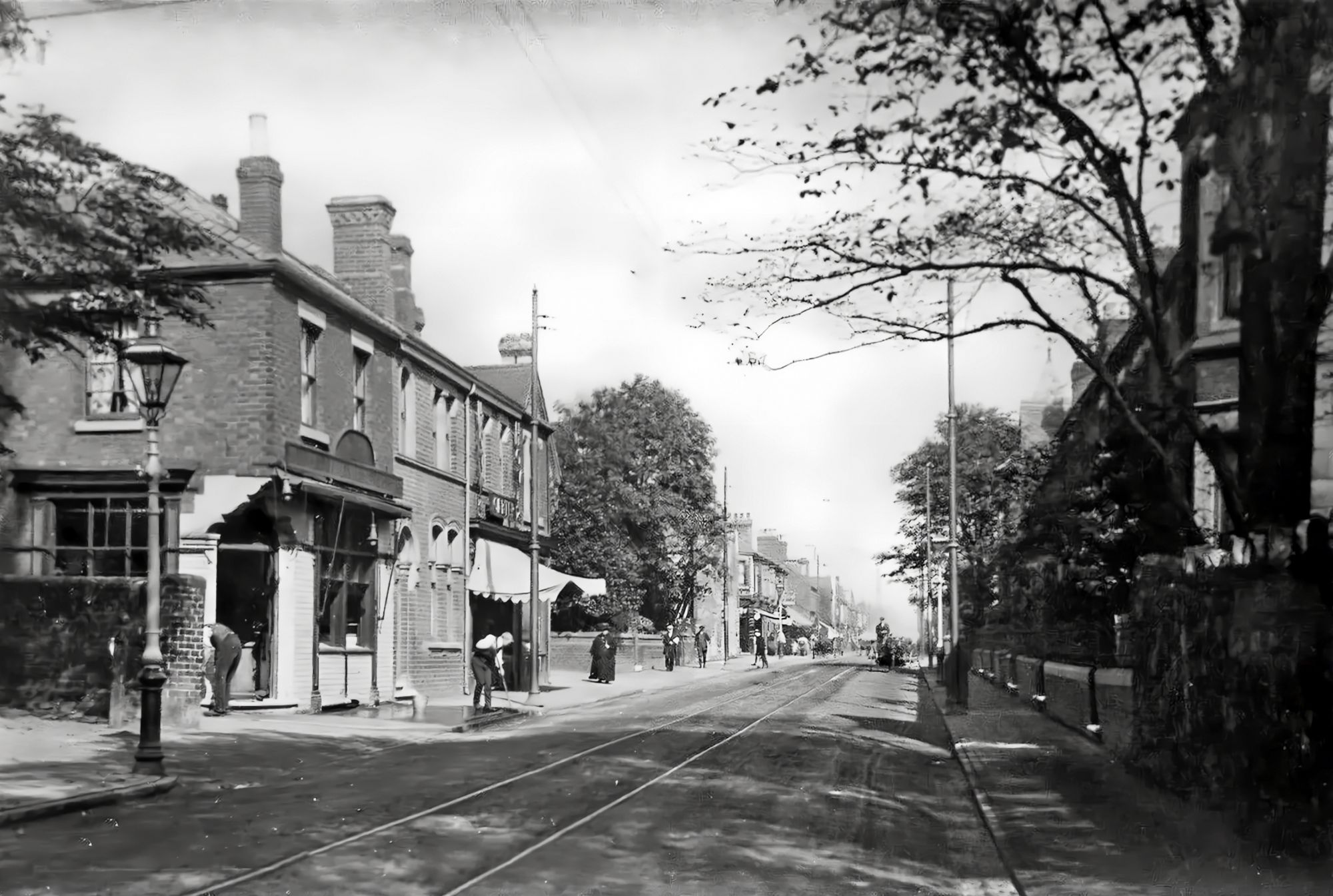
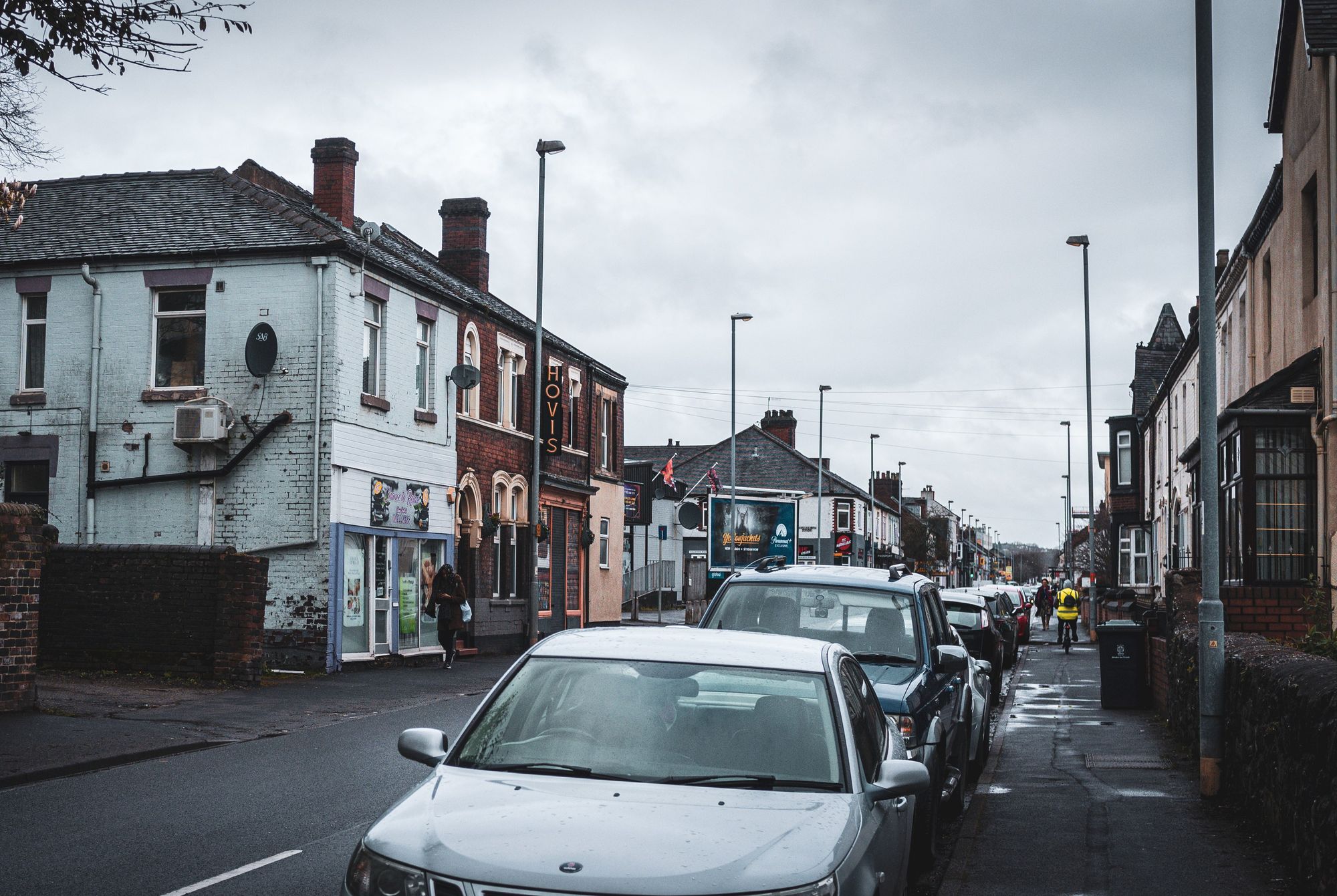
Heading along London Road, this is a lovely scene showing just a normal day in Stoke. Notice the men cleaning and sweeping the fronts of the shops. People just don't have this sort of pride in the area anymore, which is one of the many reasons that the bottom picture looks so bad and run down.
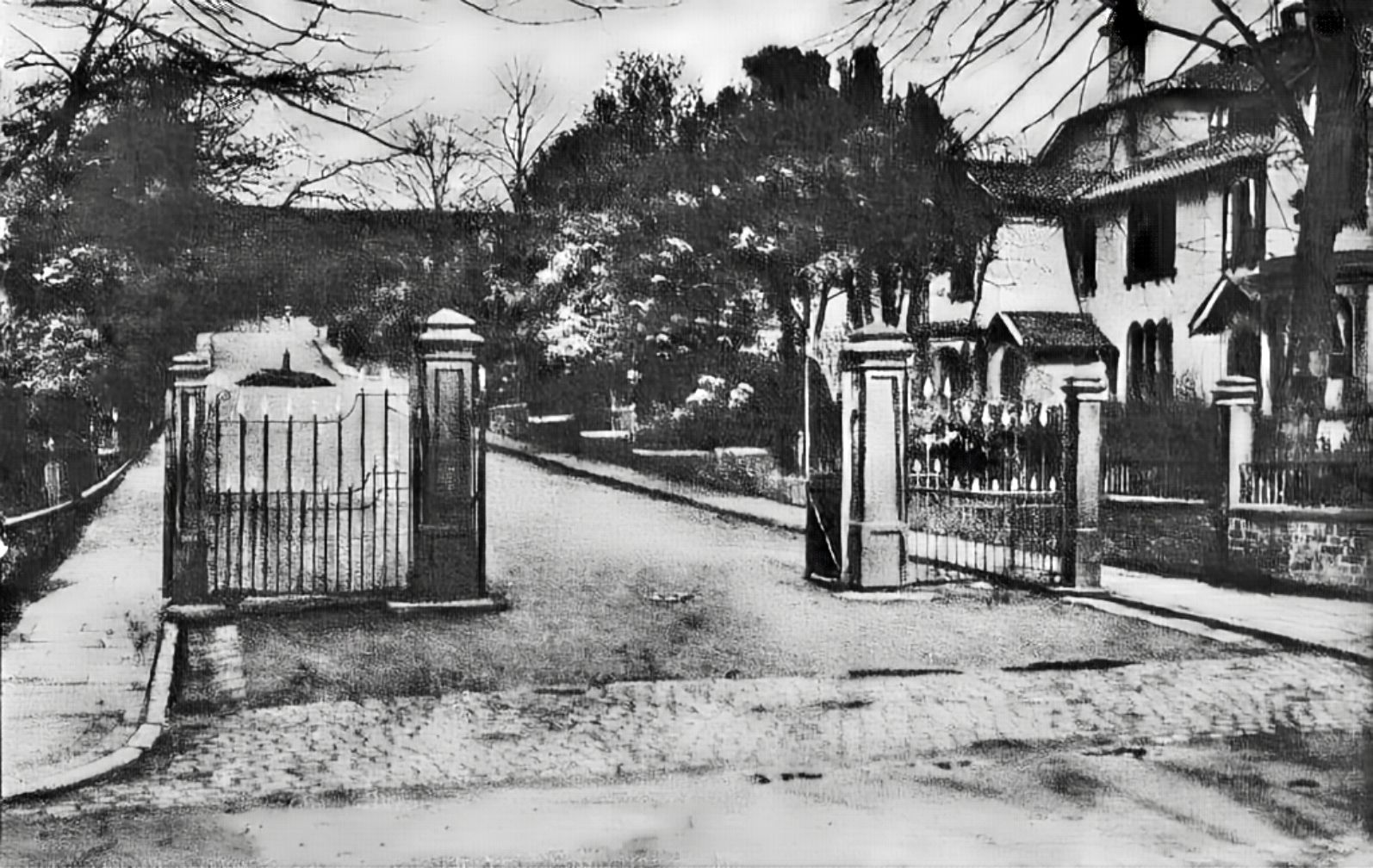
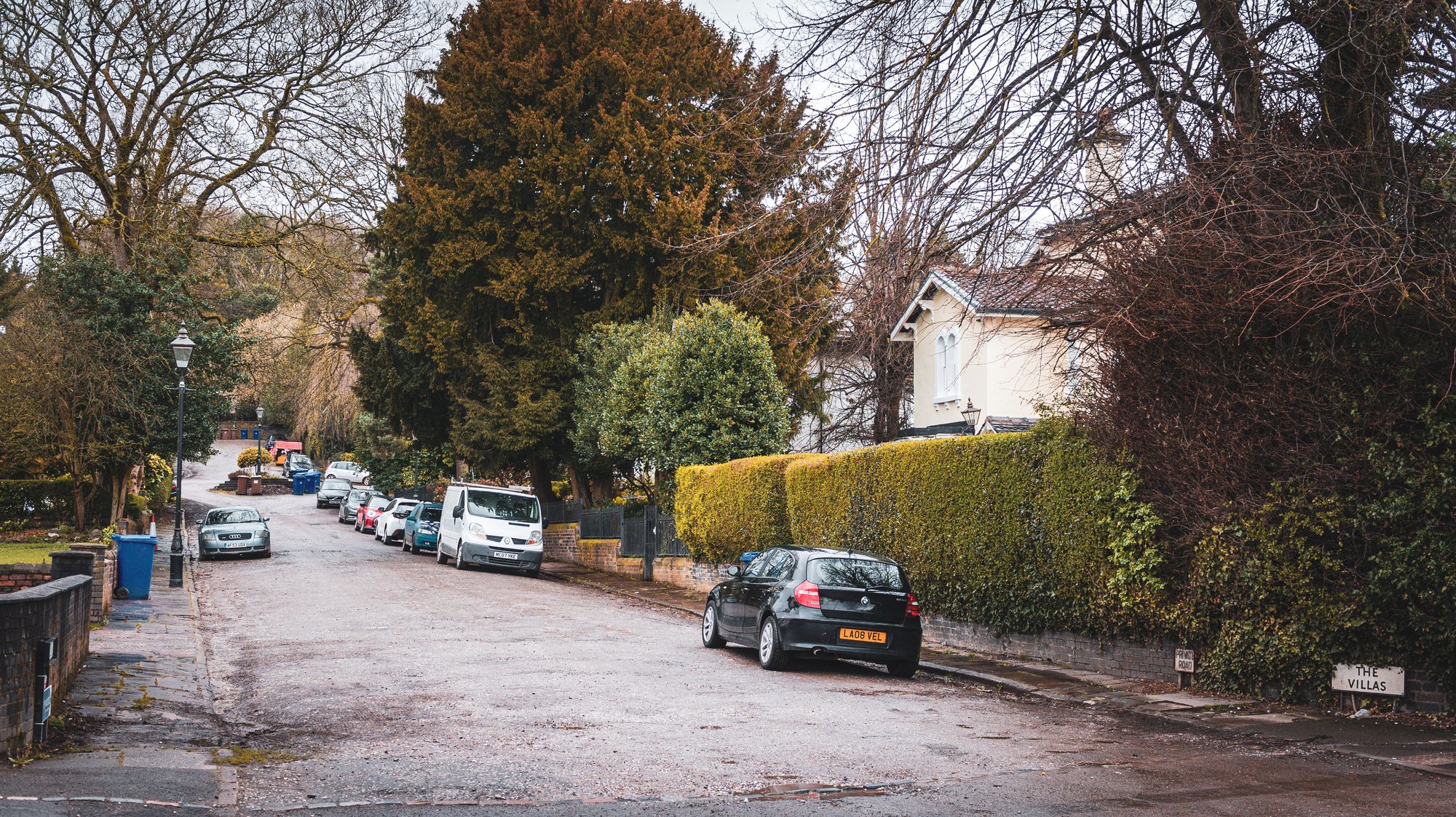
The Villas is a beautiful, private street of 24 Victorian Houses that was originally built on the outskirts of the town before the urban sprawl grew and surrounded it. The houses date from 1851 and the street has the honour of being the first designated conservation area in Stoke-on-Trent. It is a shame that the gates and posts were removed.
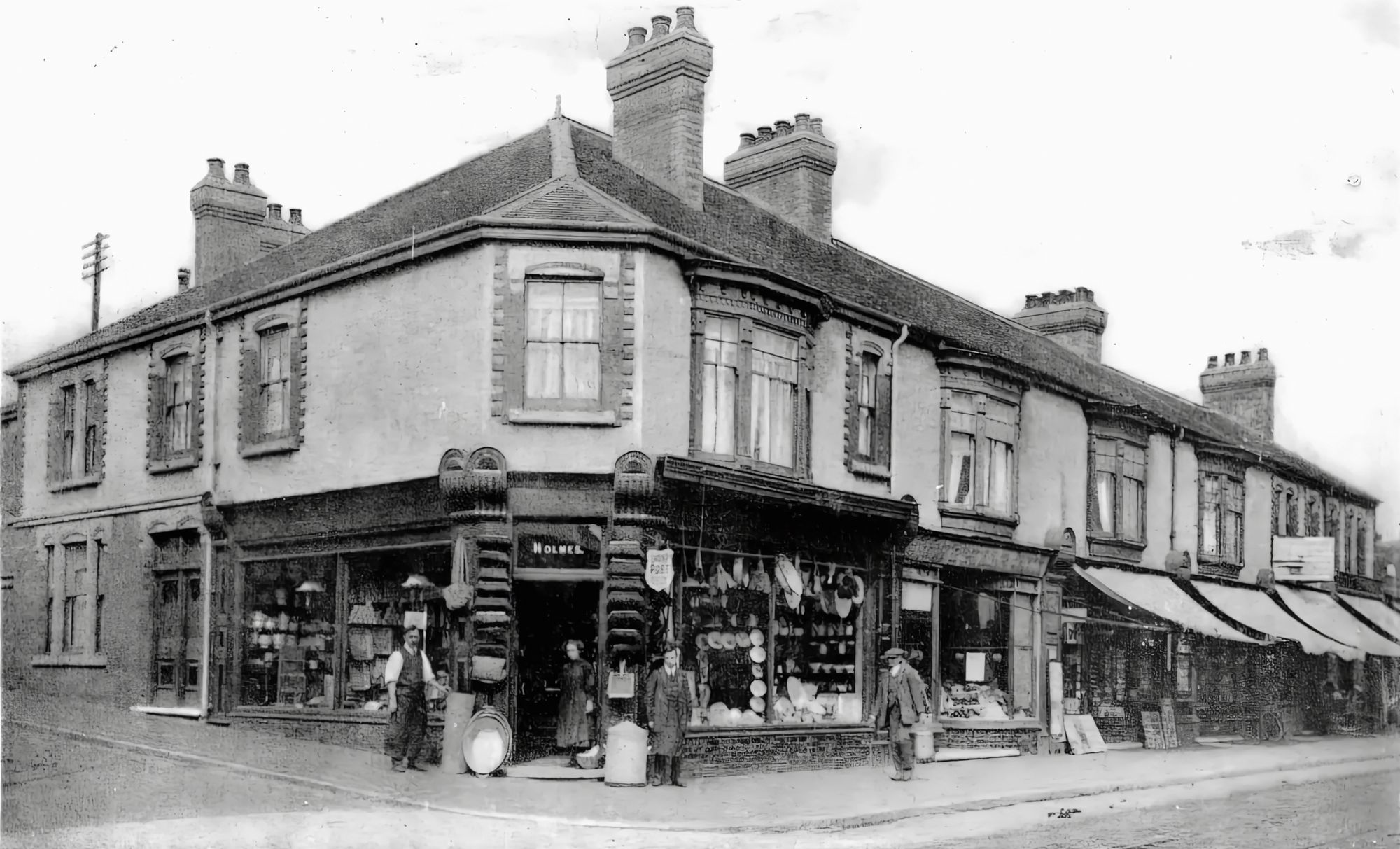
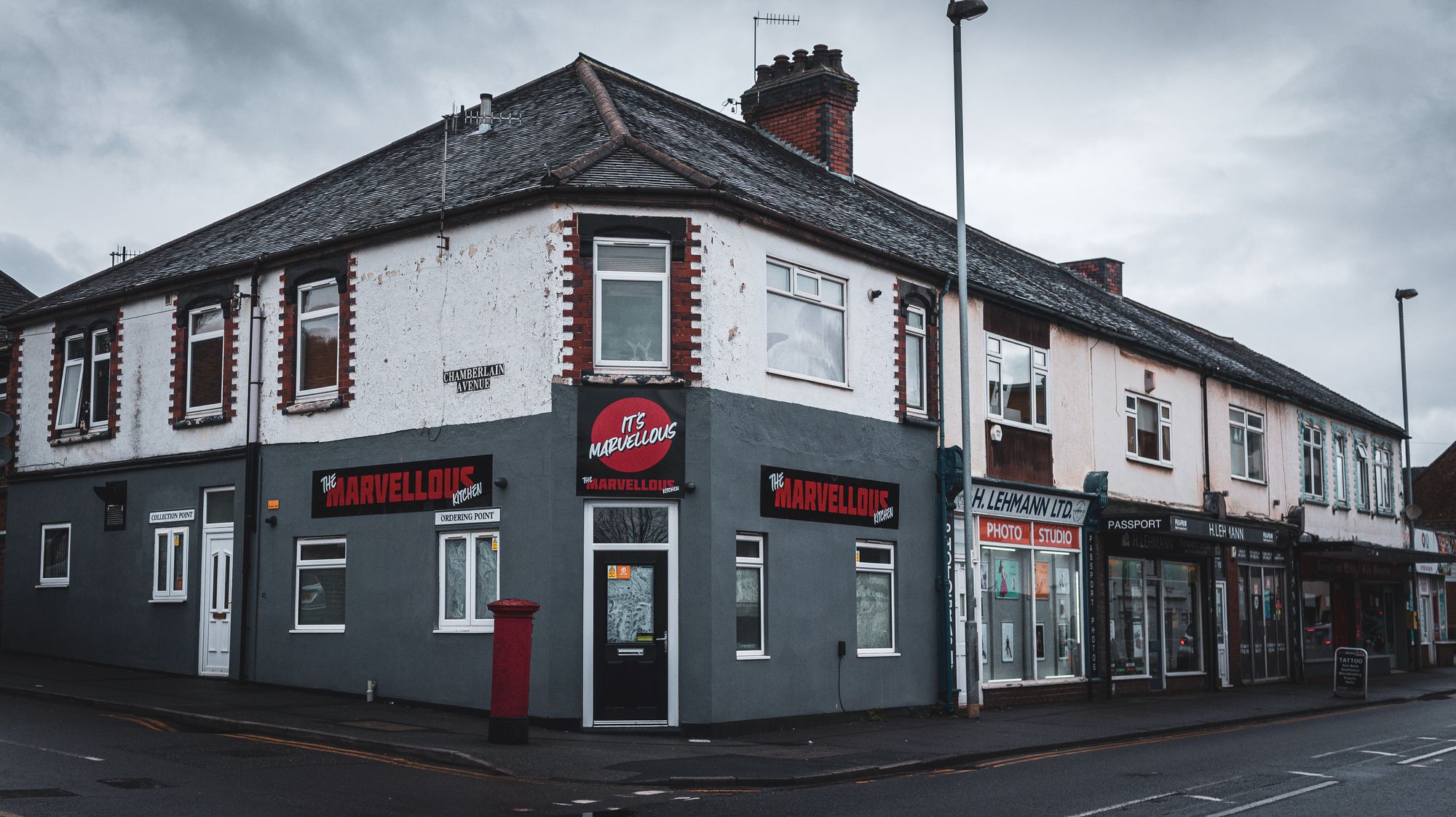
A building that still stands but has changed quite a lot over the years. It does still host shops, but many of the chimneys have gone and the lovely bay windows have been removed and replaced with mismatched plastic windows in different sizes and placements.
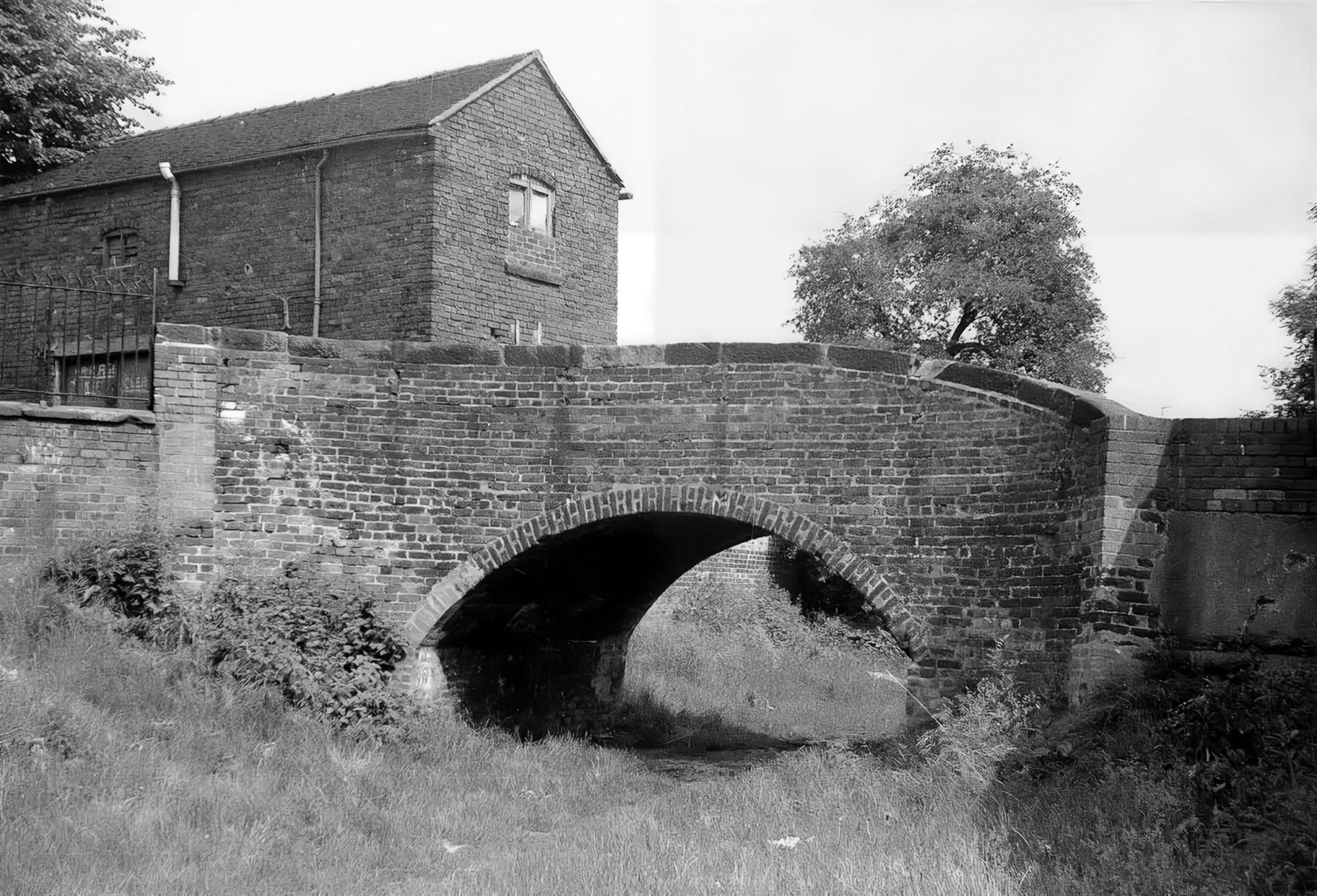
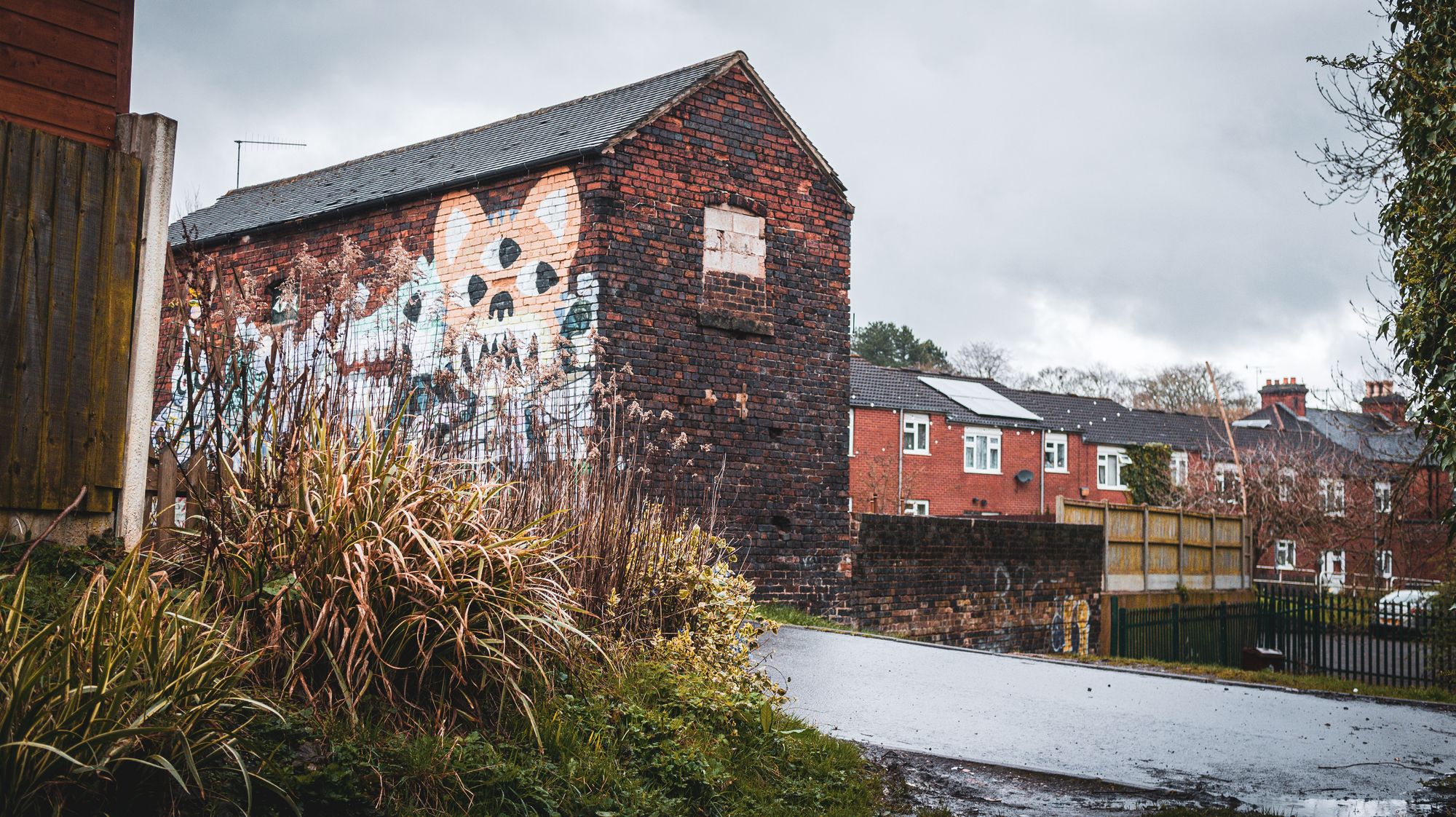
Hidden down a little street called Racecourse Road, just off London Road, stands this unassuming building. It stands alone now, so no one would guess that it once stood canal side, right by a bridge as this photo shows. It seems to have been some kind of garage unit, but it is empty and unused now. No trace of the canal can be seen.
Thank you for reading!
If you like what you have read, please feel free to support me by following and signing up for my newsletter and/or buying me a coffee!
Thank you.

I use the British Newspaper Archive to help with my research and you can sign up for a free trial here.
If you are interested in your local and family history, you can sign up for a free trial of Find my Past and access all archived local records and find your past.
If you are interested in the history of Stoke then check out these books on Amazon.
Check out my recommended reading list
